9 of the best places to visit in New Zealand

Oct 9, 2023 • 7 min read
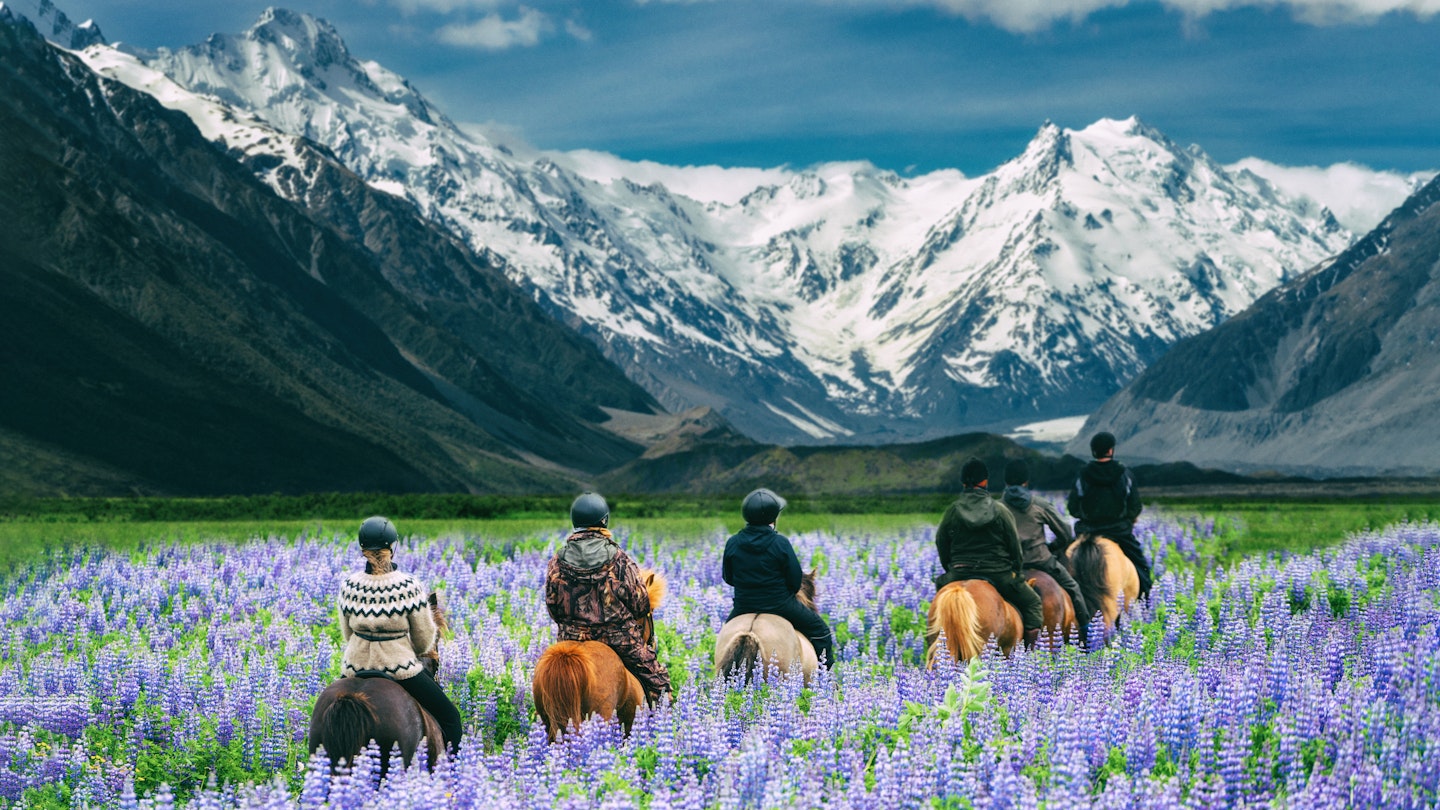
Experience the best of New Zealand with these top places to visit © Blue Planet Studio / Getty Images
New Zealand is famed for its natural beauty.
As you make your way around the country, you’ll see dramatic black-sand beaches, thermal springs, sandy coves, towering mountains and aquamarine lakes. City breaks include cosmopolitan Auckland , the cool capital of Wellington and ever-evolving Christchurch . However, many of the best places to visit in New Zealand involve leaving the city limits behind and immersing yourself in the great outdoors.
As you build your itinerary for Aotearoa (as New Zealand is known in the Māori language), here are nine spots that should top your list.


1. Queenstown
Best for adventure activities
New Zealand’s adventure capital is a favorite with visitors and for good reason. On the shores of Lake Wakatipu and surrounded by snow-capped mountains, Queenstown ’s location makes it one of the country’s most sought-after places to work and play. There are three good ski hills (called “ski fields”) and an equally enviable après-ski scene.
Queenstown's reputation for adventure is justified: from bungy jumping and zip lines, to paragliding and jet boating, there are plenty of ways to satisfy a taste for adrenaline. Rounding out its experiences, the summer months offer excellent hiking, cycling and water sports on the lake.
Detour: Make time to explore the valleys and settlements around Queenstown. Visit nearby Lake Hayes, the lakeside village of Glenorchy and historic Arrowtown . Then spend a day (or more) in Wānaka , known for its low-key vibes and Instagram-famous tree. The nearby Gibbston Valley has some of the best wineries in the country.
2. Coromandel
Best for beautiful beaches
If you’re after a beach holiday, head to the Coromandel Peninsula , on the east coast of the North Island. While the iconic Cathedral Cove area is currently more difficult to access due to damage from 2023’s storms (you’ll need to take a boat or kayak tour to get there), there are countless other stunning beaches in the region.
For example, you could swim in the calm waters of Cooks Beach or take a 30-minute walk through native bush to find the more remote (but still popular) New Chums Beach. Other fun activities in the region include cycling through Karangahake Gorge, hiking the Pinnacles Trail and kayaking to Whenuakura Wildlife Sanctuary (Donut Island); a pristine, natural environment you can only explore from the water.
Planning tip: Rent a bach (holiday house) in one of the seaside towns of Hahei, Pauanui or Whangamatā, and make that your base for exploring the region.
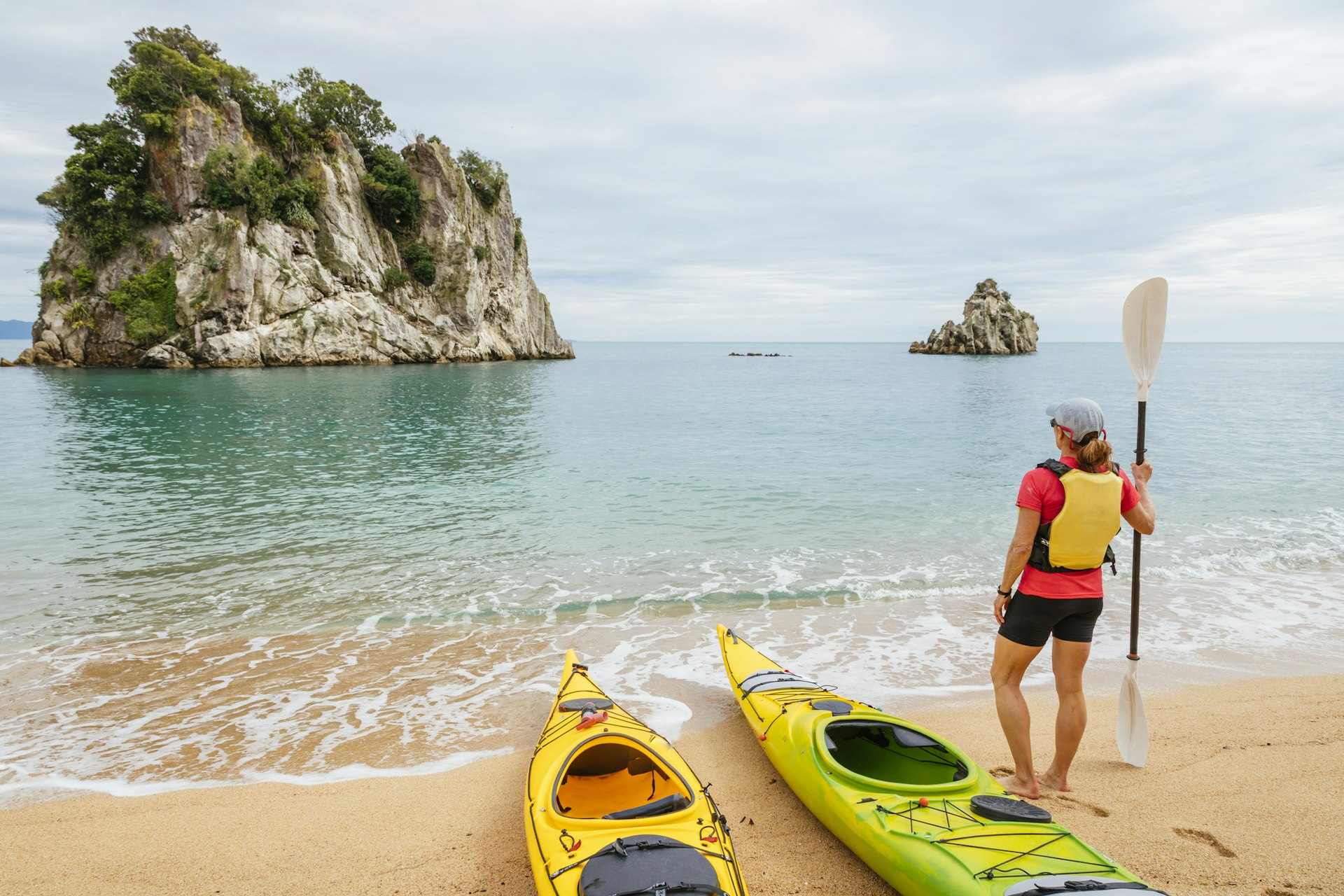
3. Abel Tasman National Park
Best for hiking and kayaking
The South Island’s Abel Tasman National Park is an unspoiled natural environment replete with native bush, crystal-clear bays and white sandy beaches. You can access it on a day trip from Nelson , but this is a destination that demands more time if you can afford it.
The Abel Tasman Coast Track , one of New Zealand's Great Walks, is a 60km (37-mile) walk along the coastline with lovely views of the beach. It usually takes three to five days to complete the full walk; otherwise, take on just a section as a day or afternoon hike using water taxis to return to your starting point. Alternatively, go kayaking to the national park’s seal colony, dive into the waters, or simply relax in tiny hidden coves and bays.
Planning tip: Cars are only able to drive as far as Tōtaranui on the north edge of the national park and Mārahau at the southern entrance, so visitors need to either walk to their preferred destination or take a water taxi.
4. Fiordland National Park
Best for epic landscapes
On the edge of the South Island, Fiordland National Park is home to one of New Zealand’s most famous attractions, the majestic Milford Sound/Piopiotahi , where visitors can see plunging waterfalls along the fiord and rare marine wildlife, including Fiordland crested penguins and Hector’s dolphins. There are also several hiking trails in the national park (including the country’s most famous multiday walk, the Milford Track ), which takes visitors past snow-capped mountains and ice-forged fiords, with even more views of lakes, valleys and waterfalls.
Planning tip: Nearby Doubtful Sound/Patea is also spectacular but less accessible – travelers need to visit with a guide and by boat.
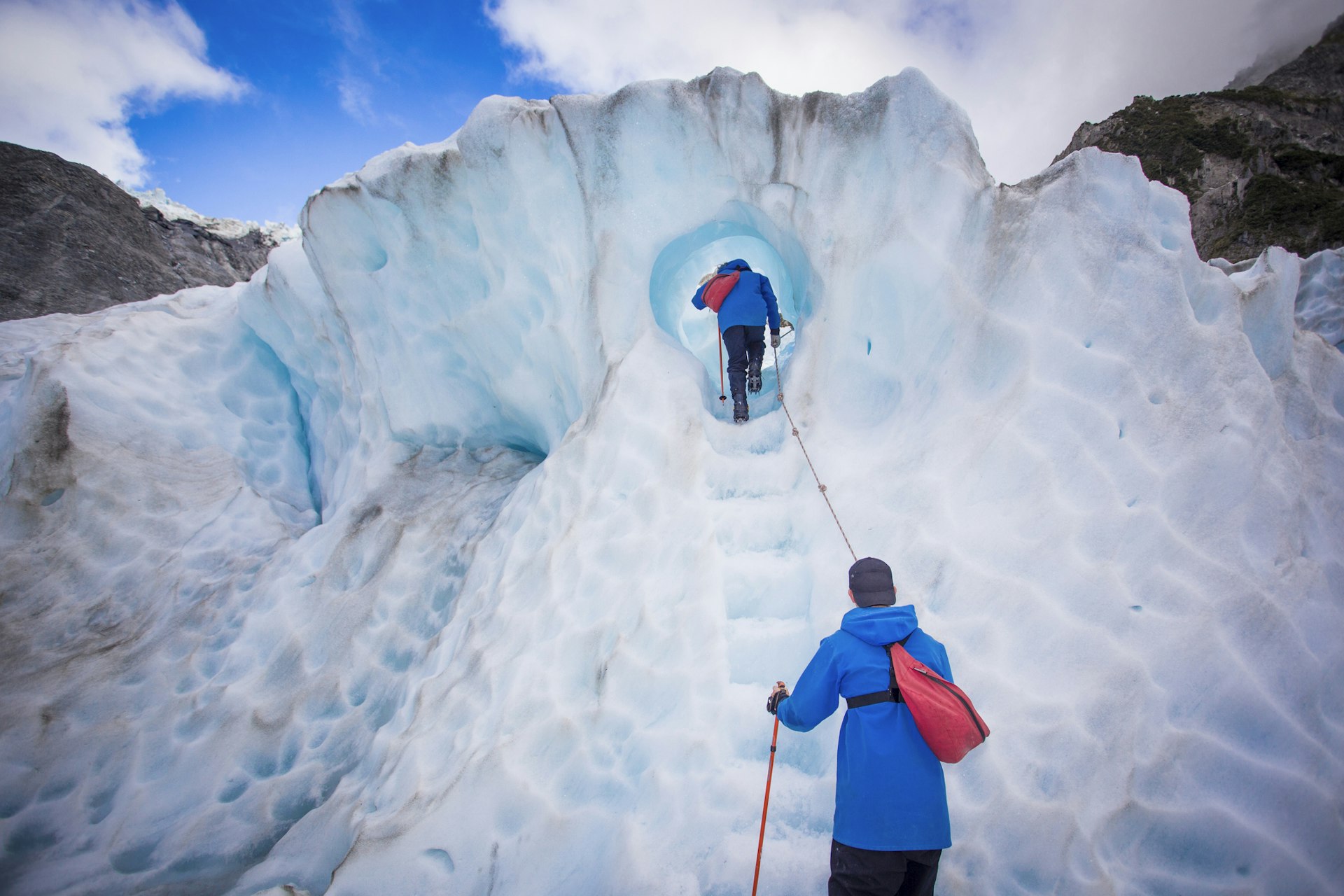
5. West Coast
Best for glaciers
The rugged western coastline of the South Island is a raw juxtaposition of dense rainforests, craggy rocks and ancient glaciers. The major drawcards of this wild and remote region are the majestic Fox and Franz Josef glaciers , offering visitors a unique chance to witness rivers of ice that flow almost to sea level.
Take guided glacier hikes, heli-hikes or scenic flights to admire the glaciers for themselves. Other attractions of note include Punakaiki's Pancake Rocks , the turquoise Hokitika Gorge and the serene, mirror-like waters of Lake Matheson .
Planning tip: The West Coast receives a high amount of rainfall annually. Unfortunately, helicopter tours are weather-dependent. If you have your heart set on landing on a glacier, ensure your itinerary is flexible enough to allow for a bad weather day.
6. Mackenzie Region
Best for stargazing
Around two hours’ drive from Christchurch is the Mackenzie Region, a peaceful place with some of the country’s loveliest scenery. The region is an International Dark Sky Reserve with minimal light pollution, so be sure to keep an eye on the forecast. When you have a clear night, head to the observatory to see the stars through a telescope, or simply look up.
The Mackenzie is also the home of Lake Tekapo and the Church of the Good Shepherd , a stone building that’s one of the country’s most photographed spots. Nearby, the small town of Twizel makes a convenient base to explore the region. From there, you can easily access the lakes and Aoraki/Mt Cook National Park , which has a range of walks from short trails to full-day hikes.
Planning tip: Book a Tātai Aroraki (Māori astronomy) tour at the Dark Sky Project to learn about the significance of the night sky to Māori. This isn’t weather dependent so it’s a great option for wet weather days.

Best for geothermal activity and Māori cultural experiences
At the heart of New Zealand’s geothermal action, Rotorua is the place to go to see bubbling mud pools, geysers and steaming rivers. Then, finish the day by taking a relaxing soak in a thermal mud bath.
Rotorua is just as renowned for its geological wonders as it is for its immersive cultural experiences. You can learn more about Māori culture and language with a visit to a traditional Māori marae (meeting grounds). At Te Puia geothermal park, for example, you'll see local Māori carvers at work at the New Zealand Māori Art and Crafts Institute. This attraction is also home to the southern hemisphere’s largest geyser. The nearby Whakarewarewa Forest (also known as the Redwoods) boasts some great cycling and hiking trails, and a treetop walk that is lit up beautifully at night.
Best for architecture
After a devastating earthquake in 1931, Napier was rebuilt almost completely, embracing the art deco style that was popular at the time. Today, it has one of the most extensive collections of art deco buildings in the southern hemisphere. Visitors who want to get their Great Gatsby on can immerse themselves in Napier’s history through guided walks, vintage car tours and the Art Deco Festival , which takes place each February.
Detour: Spend a day or two visiting the charming village of Havelock North and the Hawke’s Bay wineries, which produce award-winning syrahs, chardonnays and reds.

9. Bay of Islands
Best for Māori history
The Bay of Islands , with its shimmering waters and myriad islets, is as pretty as it is important to the culture and history of the country. The Waitangi Treaty Grounds mark the place where a foundational document was signed between Māori chiefs and British representatives, forming modern-day New Zealand.
If you visit between November and March, you can also experience traditional performances at the treaty grounds, as well as a hāngī feast, where food is cooked in the earth. Beyond Waitangi, you can get out on the water with a waka (traditional canoe) tour, where local Māori guides share stories about their seafaring ancestors and the sacred spots within the bay. In nearby Paihia, download the Ātea Nuku app to experience an augmented reality walking tour showing the history of the town.
Planning tip: On Waitangi Day (February 6), all the Treaty Ground buildings are closed for the public holiday. Instead, a massive festival takes place. You can take part in a dawn ceremony, eat from food stalls and watch cultural performances.
This article was first published Jun 28, 2021 and updated Oct 9, 2023.
Explore related stories

May 21, 2024 • 11 min read
Looking to travel for Pride festivities in 2024? Here are 12 cities all over the world that offer a plethora of joyous parades, street fairs and parties.

Mar 30, 2024 • 4 min read
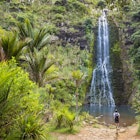
Mar 15, 2024 • 18 min read

Feb 27, 2024 • 6 min read
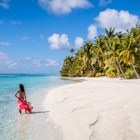
Jan 24, 2024 • 8 min read

Jan 17, 2024 • 8 min read

Jan 5, 2024 • 20 min read
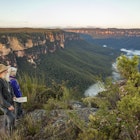
Nov 27, 2023 • 7 min read
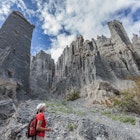
Nov 22, 2023 • 5 min read

Nov 17, 2023 • 10 min read
Travel Guide New Zealand
Book your individual trip , stress-free with local travel experts
Select Month
- roughguides.com
- Australasia
- New Zealand
- Travel guide
- Itineraries
- Local Experts
- Travel Advice
- Accommodation
Plan your tailor-made trip with a local expert
Book securely with money-back guarantee
Travel stress-free with local assistance and 24/7 support
Robert Digney
The trip was fantastic. Unparalleled Journeys was on point the whole way. The AXUS app was very useful for itinerary updates and communications with your t...
Kiwis – the people, not the emblematic flightless bird – can’t believe their luck at being born in what they call “Godzone” (God’s own country). Year after year, travellers list New Zealand in the top ten of places they’d like to visit – and you never meet anyone who has been and didn’t love the place. And what’s not to like?
Travel facts New Zealand
Where to go in new zealand, famous movie locations in new zealand.
- Introduction to New Zealand's culture and history
Working and living in New Zealand
Travel ideas for new zealand, created by local experts.

17 days / from 5400 USD
From North to South - Auckland to Christchurch Self Drive
Explore both the North and the South Island in this compact itinerary. Your own rental car allows you the freedom to go at your own pace and scenic rail journeys break up the driving times. Explore glaciers and cities, thermal springs and panoramic hiking trails.
_listing_1594826609732.jpeg)
14 days / from 3600 USD
Discover the South Island: a self drive trip from Christchurch and back
The larger of the two major island in New Zealand, South Island is best to be explored at your own pace in a rental car. From massive mountains to beaches, panoramic waterfalls to challenging hiking trails, this itinerary shows you the best of South Island.

9 days / from 2900 USD
North Island: A self drive trip from Auckland
Discover the beauty of North Island on a roundtrip from Auckland in your own vehicle. Visit thermal springs, enjoy delicious wine tastings, and explore remote beaches and hiking trails. North Island has plenty to offer travelers and a rental car makes for the perfect discovery.
With craggy coastlines, sweeping beaches, primeval forests, snowcapped mountains and impressive geysers, the scenery is truly majestic. The forests come inhabited by strange birds that have evolved to fill evolutionary niches normally occupied by mammals, while penguins, whales and seals ring the coast. Maori have only been here for 800 years but retain distinct and fascinating customs overlaid by colonial European and increasingly Asian cultures that together create a vibrant, if understated, urban life.

A path through Hooker valley wit a view of Mount Cook, New Zealand / shutterstock
- At latitude 41° south, Wellington is the world’s southernmost capital city and shares the honour of being the most remote with Canberra, over 2000km away.
- Possums are the national pest. When seen on the road, these introduced marsupials turn normally mild-mannered folk into killers. Flattened examples are everywhere.
- Kiwis love foreign affirmation: Flight of the Conchords were turned down by domestic television and only became a local success after their HBO hit series.
- Maori ex-prostitute Georgina Beyer became the world’s first transsexual MP in 1999.
- There are no snakes in New Zealand, and only a few venomous spiders, rarely seen.
- The numerous Maori words that have crept into everyday conversation easily confound visitors: aroha is love; kia kaha means be strong; kia ora can be hi or might signify agreement; and koha is a donation or offering.
- New Zealand’s eels live to 80 years and only breed once, at the end of their life – and they swim all the way to Tonga to do it.
New Zealand packs a lot into a limited space, meaning you can visit many of the main sights in a couple of weeks, but allow at least a month (or preferably two) for a proper look around. The scenery is the big draw, and most people only pop into the big cities on arrival and departure (easily done with open-jaw air tickets, allowing you to fly into Auckland and out of Christchurch) or when travelling to Wellington from the South Island across the Cook Strait.

Sprawled around the sparkling Waitemata Harbour, go-ahead Auckland looks out over the island-studded Hauraki Gulf. Most people head south from here, missing out on Northland, the cradle of both Maori and Pakeha colonization, cloaked in wonderful subtropical forest that harbours New Zealand’s largest kauri trees.
East of Auckland the coast follows the isolated greenery and long, golden beaches of the Coromandel Peninsula , before running down to the beach towns of the Bay of Plenty. Immediately south your senses are assailed by the ever-present sulphurous whiff of Rotorua , with its spurting geysers and bubbling pools of mud, and the volcanic plateau centred on the trout-filled waters of Lake Taupo, overshadowed by three snowcapped volcanoes.
Cave fans will want to head west of Taupo for the eerie limestone caverns of Waitomo; alternatively it’s just a short hop from Taupo to the delights of canoeing the Whanganui River, a broad, emerald-green waterway banked by virtually impenetrable bush thrown into relief by the cone of Mount Taranaki, whose summit is accessible in a day.
East of Taupo lie ranges that form the North Island’s backbone, and beyond them the Hawke’s Bay wine country, centred on the Art Deco city of Napier. Further south, the wine region of Martinborough is just an hour or so from the capital, Wellington, its centre squeezed onto reclaimed harbourside, the suburbs slung across steep hills overlooking glistening bays. Politicians and bureaucrats give it a well-scrubbed and urbane sophistication, enlivened by an established café society and after-dark scene.
The South Island kicks off with the world-renowned wineries of Marlborough and appealing Nelson , a pretty and compact spot surrounded by lovely beaches and within easy reach of the hill country around the Nelson Lakes National Park and the fabulous sea kayaking of the Abel Tasman National Park .
From the top of the South Island you’ve a choice of nipping behind the 3000m summits of the Southern Alps and following the West Coast to the fabulous glaciers at Fox and Franz Josef, or sticking to the east, passing the whale-watching territory of Kaikoura en route to the South Island’s largest centre, Christchurch . Its English architectural heritage may have been ravaged by earthquakes – and its people still reeling from the upheaval – but signs of normality are returning, and, as the rebuilding process picks up pace, the city looks set to become the country’s most exciting.
From here you can head across country to the West Coast via Arthur’s Pass on one of the country’s most scenic train trips, or shoot southwest across the patchwork Canterbury Plains to the foothills of the Southern Alps and Aoraki/Mount Cook with its distinctive drooping-tent summit.
The patchwork-quilt fields of Canterbury run, via the grand architecture of Oamaru, to the unmistakably Scottish-influenced city of Dunedin, a base for exploring the wildlife of the Otago Peninsula, with its albatross, seal, sea lion and penguin colonies. In the middle of the nineteenth century, prospectors arrived here and rushed inland to gold strikes throughout central Otago and around stunningly set Queenstown , now a commercialized activity centre where bungy jumping, rafting, jetboating and skiing hold sway.
Just up the road is Glenorchy, a tramping heartland, from which the Routeburn Track sets out to rain-sodden Fiordland . Its neighbour, Te Anau, is the start of many of New Zealand’s most famous treks, including the Milford Track. Further south you’ll feel the bite of the Antarctic winds, which reach their peak on New Zealand’s third landmass, isolated Stewart Island, covered mostly by dense coastal rainforest that offers a great chance of spotting a kiwi in the wild.
Discover more places in New Zealand

- Dunedin to Stewart Island Travel Guide
- Fiordland Travel Guide
- Marlborough, Nelson and Kaikoura Travel Guide
- Northland Travel Guide
- Poverty Bay, Hawke’s Bay and the Wairarapa Travel Guide
- Wellington and around Travel Guide
- The West Coast Travel Guide
- Western North Island Travel Guide
- Auckland and around Travel Guide
- Christchurch and south to Otago Travel Guide
When Peter Jackson filmed his Lord of the Rings trilogy in New Zealand the country rejoiced, even appointing a special minister for the project. However, few could have anticipated how completely it would take over the country. For thousands of visitors, no stay in Aotearoa is complete without a hobbit hole visit to Hobbiton, a pilgrimage to Wellington’s Weta Workshop , where the prosthetics and miniatures were done, and a tour of film locations around Queenstown.
The next wave of scene-seeking tourists took Disney’s The Chronicles of Narnia: The Lion, the Witch and the Wardrobe as their inspiration, and there is a tsunami of tourists eager to stand where the hobbits of Peter Jackson’s two-part epic (based on J.R.R Tolkien’s The Hobbit ) planted their feet. Trips to location sites undoubtedly visit some magnificent scenery, but don’t expect scenes to look as they did in the films. Digital enhancement works wonders, but the landscape stands up just fine without CGI trickery.
Tribal costume is only worn on special occasions, facial tattoos are fairly rare and you’ll probably only see a haka performed at a rugby match or cultural show. In fact, Maori live very much in the modern world. But peel back the veneer of the song-dance-and- hangi performance and you’ll discover a parallel world that non-Maori are only dimly aware of.
Knowledge of whakapapa (tribal lineage) is central to Maori identity. Spirituality connects Maori to their traditional local mountain or river, while oratory , and the ability to produce a song at a moment’s notice, are both highly valued. All New Zealanders understand mana , a synthesis of prestige, charisma and influence, which is enhanced through brave or compassionate actions.
Sadly, the Maori community is riven by social problems: average incomes are lower than those of Pakeha; almost half of all prison inmates are Maori; and health statistics make appalling reading.
Hope for redress comes through a bicultural approach stressing equality and integration while allowing for parallel identities.
Introduction to New Zealand's culture and history
Given this stunning backdrop it’s not surprising that there are boundless diversions, ranging from strolls along moody windswept beaches and multi-day tramps over alpine passes to adrenaline-charged adventure activities such as bungy jumping, skiing, sea kayaking and whitewater rafting. Some visitors treat the country as a large-scale adventure playground, aiming to tackle as many challenges as possible in the time available.
Much of the scenic drama comes from tectonic or volcanic forces, as the people of Canterbury know only too well following the Christchurch earthquakes of September 4, 2010 and February 22, 2011. The quakes, along with several thousand aftershocks, collectively devastated the city, which is slowly recovering.
Thousands of residents have left Christchurch, but it remains the second-largest city after Auckland , just pushing the capital, Wellington , into third place. Elsewhere, you can travel many kilometres through stunning countryside without seeing a soul: there are spots so remote that, it’s reliably contended, no human has yet visited them.
Geologically, New Zealand split away from the super-continent of Gondwana early, developing a unique ecosystem in which birds adapted to fill the role of mammals, many becoming flightless because they had no predators. That all changed about 800 years ago, with the arrival of Polynesian navigators, when the land they called Aotearoa – “the land of the long white cloud” – became the last major landmass to be settled by humans.
On disembarking from their canoes, these Maori proceeded to unbalance the fragile ecosystem, dispatching forever the giant ostrich-sized moa, which formed a major part of their diet. The country once again settled into a fragile balance before the arrival of Pakeha – white Europeans, predominantly of British origin – who swarmed off their square-rigged ships full of colonial zeal in the mid-nineteenth century and altered the land forever.
An uneasy coexistence between Maori and European societies informs the current wrangles over cultural identity, land and resource rights. The British didn’t invade as such, and were to some degree reluctant to enter into the 1840 Treaty of Waitangi , New Zealand’s founding document, which effectively ceded New Zealand to the British Crown while guaranteeing Maori hegemony over their land and traditional gathering and fishing rights.
As time wore on and increasing numbers of settlers demanded ever larger parcels of land from Maori, antipathy surfaced and escalated into hostility. Once Maori were subdued, a policy of partial integration all but destroyed Maoritanga – the Maori way of doing things. Maori, however, were left well outside the new European order, where difference was perceived as tantamount to a betrayal of the emergent sense of nationhood. Although elements of this still exist and Presbyterian and Anglican values have proved hard to shake off, the Kiwi psyche has become infused with Maori generosity and hospitality, coupled with a colonial mateyness and the unerring belief that whatever happens, “she’ll be right”.
Only in the last forty years has New Zealand come of age and developed a true national self-confidence, something partly forced on it by Britain severing the colonial apron strings, and by the resurgence of Maori identity. Maori demands have been nurtured by a willingness on the part of most Pakeha to redress the wrongs perpetrated over the last 170 years, as long as it doesn’t impinge on their high standard of living or overall feeling of control.
More recently, integration has been replaced with a policy of biculturalism – the somewhat fraught notion of promoting two cultures alongside each other, but with maximum interaction. This policy has been somewhat weakened by relatively recent and extensive immigration from China, Korea and South Asia.
Despite having and achieving much to give them confidence, Kiwis (unlike their Australian neighbours) retain an underlying shyness that borders on an inferiority complex: you may well find yourself interrogated about your opinions on the country almost before you’ve even left the airport. Balancing this is an extraordinary enthusiasm for sports and culture , which generate a swelling pride in New Zealanders when they witness plucky Kiwis taking on and sometimes beating the world.
New Zealand is the sort of place people come for a short visit and end up wanting to stay (at least for a few months). Unless you have substantial financial backing, this will probably mean finding some work. And while your earning potential in New Zealand isn’t necessarily going to be great, you can at least supplement your budget for multiple bungy jumps, skydiving lessons and the like. Paid casual work is typically in tourism-linked service industries, or in orchard work.
For the last few years unemployment has remained relatively low and, providing you have the necessary paperwork, finding casual work shouldn’t be too difficult, while better-paid, short-term professional jobs are quite possible if you have the skills. Employment agencies are a good bet for this sort of work, or simply look at general job-search websites such as search4jobs.co.nz and the jobs section of trademe.co.nz . The minimum wage for all legally employed folk over the age of 16 (other than 16- and 17-year-old new entrants or trainees) is $13 an hour. If you’d rather not tackle the red tape you can simply reduce your travelling costs by working for your board (though technically the Immigration Department still considers this to be work).
Working for board and lodging
A popular way of getting around the country cheaply is to work for your board and lodging , typically toiling for 4–6 hours a day. FHiNZ (Farm Helpers in New Zealand; fhinz.co.nz ) organizes stays on farms, orchards and horticultural holdings for singles, couples and families; no experience is needed. Almost two hundred places are listed in its booklet ($25; sold online) and accommodation ranges from basic to quite luxurious.
The international WWOOF (Willing Workers on Organic Farms; wwoof.co.nz ) coordinates over a thousand properties (membership, for one or a couple, with online access $40 or printed booklet $50), mostly farms but also orchards, market gardens and self-sufficiency-orientated smallholdings, all using organic methods to a greater or lesser degree. They’ll expect a stay of around five nights, though much longer periods are common; you book direct (preferably a week or more in advance).
There have been occasional reports of taskmasters; make sure you discuss what’s expected before you commit yourself. Property managers are vetted but solo women may prefer placements with couples or families. Other organizations have fewer guarantees, though many are perfectly reputable.
A similar organization is the online Help Exchange ( helpx.net ), which supplies a regularly updated list of hosts on farms as well as at homestays, B&Bs, hostels and lodges, who need extra help in return for meals and accommodation; you register online and book direct.
Casual work
One of the main sources of casual work is fruit-picking or related orchard work such as packing or pruning and thinning. The main areas are Kerikeri in the Bay of Islands for citrus and kiwifruit, Hastings in Hawke’s Bay for apples, pears and peaches, Tauranga and Te Puke for kiwifruit, and Alexandra and Cromwell in Central Otago for stone fruit. Most work is available during the autumn picking season , which runs roughly from January to May, but you can often find something just as easily in the off season. In popular working areas, some hostels cater to short-term workers, and these are usually the best places to find out what’s going.
Picking can be hard-going, physical work and payment is usually by the quantity gathered, rather than by the hour. When you’re starting off, the poor returns can be frustrating, but with persistence and application you can soon find yourself grossing $100 or more in an eight-hour day. Rates vary considerably so it’s worth asking around, factoring in any transport, meals and accommodation, which are sometimes included. Indoor packing work tends to be paid hourly.
Particularly in popular tourist areas – Rotorua, Nelson, Queenstown – cafés , bars and hostels often need extra staff during peak periods. If you have no luck, try more out-of-the-way locales, where there’ll be fewer travellers clamouring for work. Bar and restaurant work pays minimum wage and upwards, depending on your level of experience, but tips are negligible. Generally you’ll need to commit to at least three months.
Ski resorts occasionally employ people during the June to October season, usually in catering roles. Hourly wages may be supplemented by a lift pass and subsidized food and drink, though finding affordable accommodation can be difficult and may offset a lot of what you gain. Hiring clinics for ski and snowboard instructors are usually held at the beginning of the season at a small cost, though if you’re experienced it’s better to apply directly to the resort beforehand.
In addition to local hostels and backpackers, handy resources include job.co.nz ; for fruit picking and the like, check out sites such as seasonalwork.co.nz, pickapicker.co.nz and picknz.co.nz.
Volunteering
A useful starting point is the online service from the UK-based The Gapyear Company ( gapyear.com ), which offers free membership plus heaps of information on volunteering, travel, contacts and living abroad. The Department of Conservation’s Conservation Volunteer Programme (search at doc.govt.nz ) provides an excellent way to spend time out in the New Zealand bush while putting something back into the environment. Often you’ll get into areas most visitors never see, and learn some skills while you’re at it. Projects include bat surveys, kiwi monitoring and nest protection, as well as more rugged tasks like track maintenance, tree planting and hut repair. You can muck in for just a day or up to a couple of weeks, and sometimes there is a fee (of around $50–200) to cover food and transport. Application forms are available on the website. Programmes are in high demand and often book up well in advance, so it’s worth applying before you reach New Zealand.
Visas, permits and red tape for working in New Zealand
Australians can work legally in New Zealand without any paperwork. Otherwise, if you’re aged 18–30, the easiest way to work legally is through the Working Holiday Scheme (WHS), which gives you a temporary work permit valid for twelve months. An unlimited number of Brits, Irish, Americans, Canadians, Japanese, Belgian, Danish, Finnish, French, German, Italian, Dutch, Norwegian and Swedish people in this age bracket are eligible each year, plus various annual quotas of Argentinians, Brazilians, Chilean, Chinese, Czech, Estonians, Hong Kong citizens, Koreans, Latvians, Polish, Singaporeans, Spanish, Malaysians, Maltese, Mexicans, Peruvians, Taiwanese, Thai, Turkish and Uruguayans on a first-come-first-served basis; apply as far in advance as you can.
You’ll need a passport, NZ$140 for the application, evidence of an onward ticket out of New Zealand (or the funds to pay for it), and a minimum of NZ$350 per month of your intended stay (or, depending on your country of origin, NZ$4200 in total) to show you can support yourself. Some nationals can (and in some instances must) apply online (using a Visa or MasterCard). Brits can apply for a 23-month stay, the last 11 months of which can be applied for in New Zealand as an extension.
Working holiday-makers who can show they’ve worked in the horticulture or viticulture industries for at least three months may be eligible to obtain an extra three-month stay in New Zealand with a Working Holidaymaker Extension (WHE) permit. Applications are made through Immigration New Zealand ( t 09 914 4100, w immigration.govt.nz ), which has details and downloadable forms on its website.
Some visitors are tempted to work illegally , something for which you could be fined or deported. However, there is a variety of other visa options, including the new Silver Fern visa for 20–35-year-olds, and visas for seasonal horticulture and viticulture seasonal work – contact the Immigration Service for details. The only other legal option is trying to gain resident status – not something to be tackled lightly.
Anyone working legally in New Zealand needs to obtain a tax number from the local Inland Revenue Department office ( w ird.govt.nz ); without this your employer will have trouble paying you. The process can take up to ten working days, though you can still work while the wheels of bureaucracy turn. Depending on your level of income, the tax department rakes in from 10.50 to 47.04 percent of your earnings and you probably won’t be able to reclaim any of it. Many companies will also only pay wages into a New Zealand bank account – opening one is easy (see Maps and GPS).
Travel advice for New Zealand
From travel safety to visa requirements, discover the best tips for traveling to New Zealand
- Eating and drinking in New Zealand
- Getting around New Zealand: Transportation Tips
- Outdoor activities
- Culture and Etiquette in New Zealand
- How to get to New Zealand
- Shopping tips for New Zealand
- Spectator sports
- Travel Tips New Zealand for planning and on the go
- Travelling with children in New Zealand
- Best time to visit New Zealand
The Rough Guides to New Zealand and related travel guides
In-depth, easy-to-use travel guides filled with expert advice.
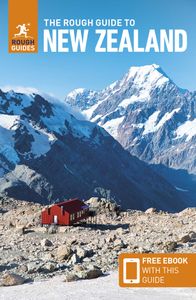
Find even more inspiration here

Planning your own trip? Prepare for your trip
Use Rough Guides' trusted partners for great rates
written by Rough Guides Editors
updated 01.09.2023
Ready to travel and discover New Zealand?
Get support from our local experts for stress-free planning & worry-free travels.
- Where to stay
- Travel advice

TRAVEL to NEW ZEALAND – Tips and Information Guide
New Zealand
Everything you need to know about travel to New Zealand in our comprehensive 2024 New Zealand travel guide.
New Zealand is truly the land of the Long White Cloud with a vast contrast between the epic coastlines of the Otago Peninsula to the summit of Aoraki Mount Cook.
Most people divide their travel in New Zealand between the North Island and South Island. South Island tends to be more popular with outdoor enthusiasts.
But regardless of which island you see, or whether you tour both, you won’t be let down.
Fancy a thermal river? Then head to the North Island’s Rotorua or if you prefer snowy mountains, Queenstown is the place to go!
If none of this fancies you then why not head to the Bay of Islands only a short drive from Auckland to take in some sunshine and fresh oysters? Follow this up with a trip you’ll not soon forget to the top of New Zealand, Cape Reinga.
New Zealand is probably the most surprising country you can visit as it is jam-packed full of adventure, landscapes and friendly locals. Do yourself a favour and get there ASAP!
Once you start planning to travel to New Zealand, you’re in for a great adventure!
Here’s our New Zealand travel guide to get you caught up on the basics of this amazing country.
TRAVELLING IN NEW ZEALAND: AT A GLANCE
Here are the basics about travel to New Zealand.
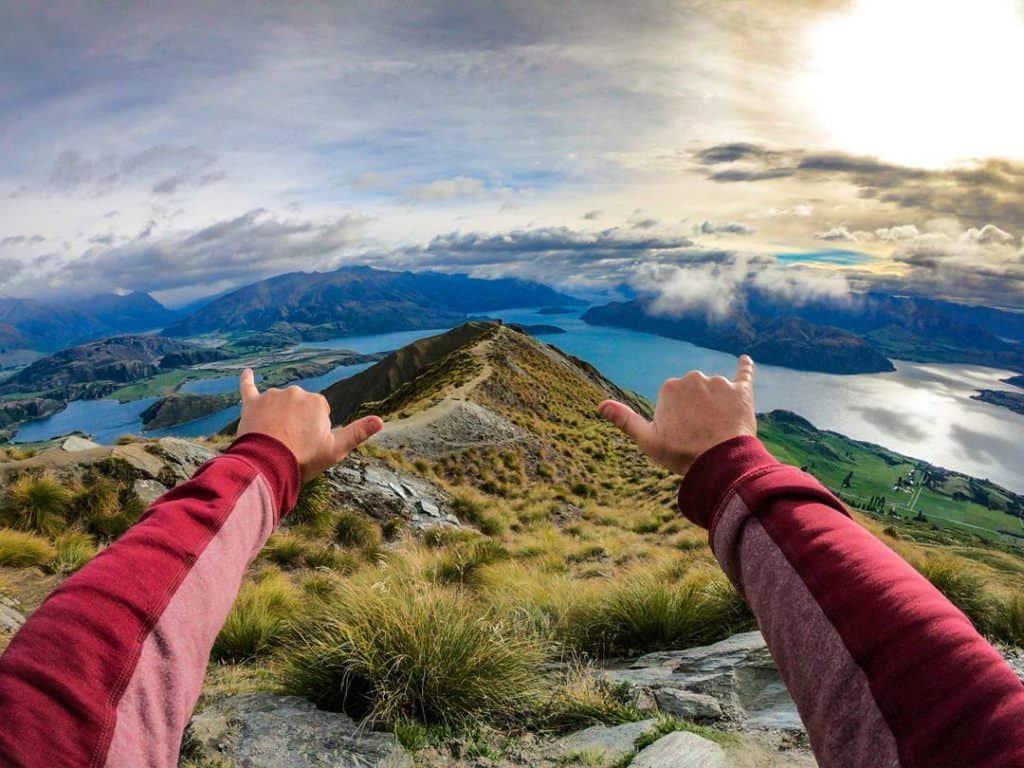
TOP 5 TRAVEL EXPERIENCES IN NEW ZEALAND
With so much to see and do in New Zealand, it really is hard to pick the top experiences.
However, we think that to truly appreciate New Zealand you need to plan to do these 5 activities during your visit.
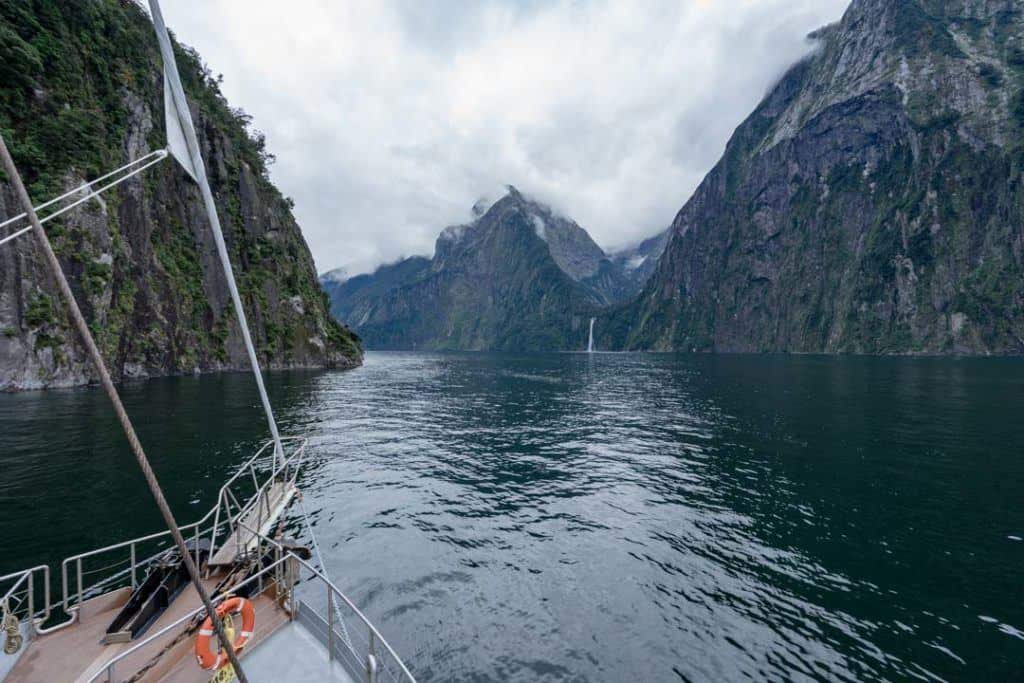
Cruising the Milford Sound
Cruising on a boat in the stunning Milford Sound is an absolute MUST! Kayak, cruise and cuisine your way through some of the most spectacular scenery in New Zealand!
Book a Milford Sound cruise and lunch today !
Walking Hooker Valley
The Hooker Valley walk at Aoraki National Park is basically like walking in a piece of paradise. To your left will be snowcapped peaks and to your left will be snowcapped peaks. At the end of the trail lays Hooker Valley Lake full of icebergs and epic views of Mount Cook.
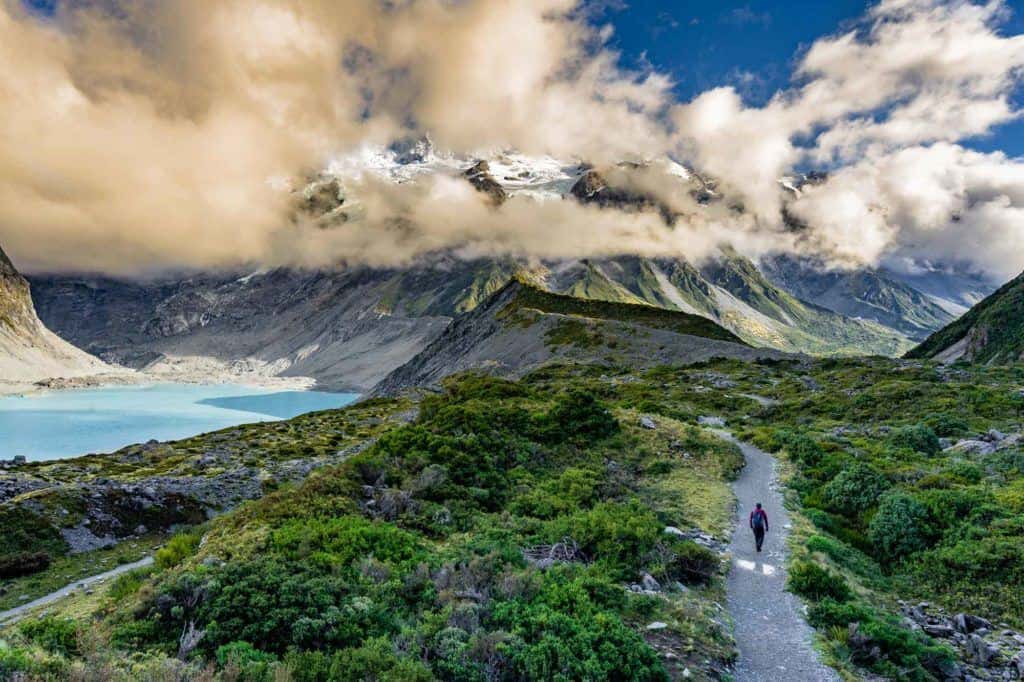
Stargazing at Lake Tekapo
Stargazing at Lake Tekapo is remarkable due to limited light pollution. Opt for a summer’s night out to enjoy the Southern Hemispheres spectacular stars!
Book a trip to Lake Tekapo here !
Snowboarding or Skiing the Remarkables
Snowboarding or skiing The Remarkables high above Queenstown is every snow enthusiasts dream! So get prepared to shred and smash some freshly fallen powder!
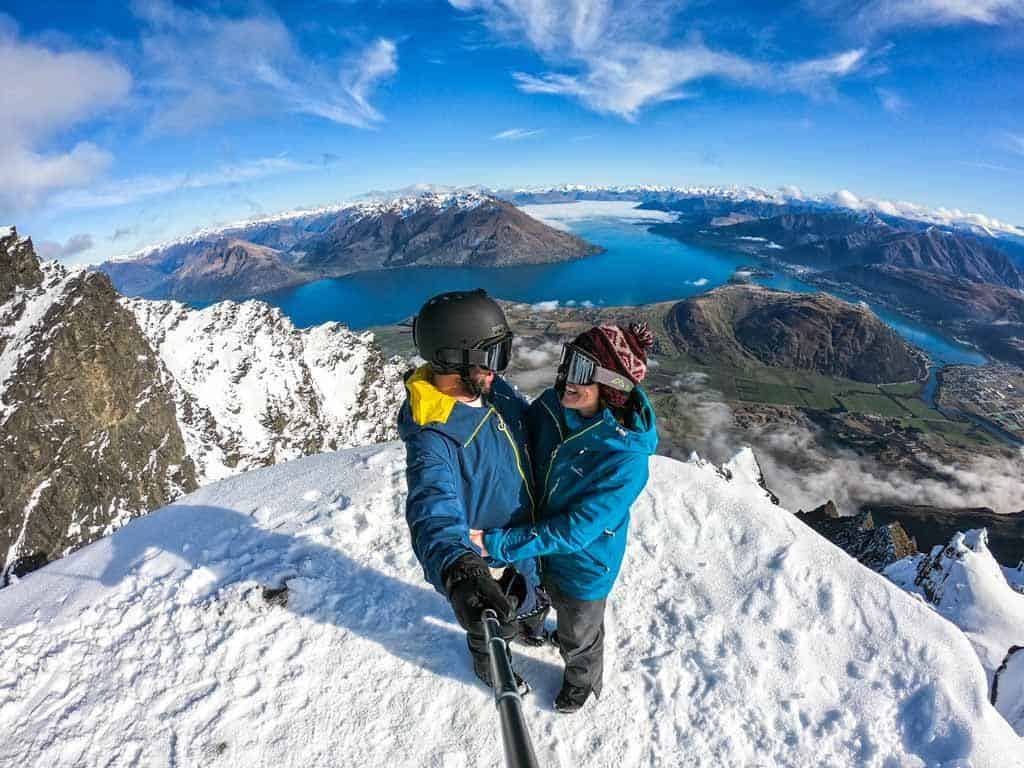
Wildlife Watching on the Otago Peninsula
Wildlife watching on the Otago Peninsula can be done at any time of the year where penguins, seals and albatrosses can be seen in their natural environment.
Other Things to do in New Zealand
There are plenty of great things to do in New Zealand. Most of them will keep you outside exploring the beautiful landscapes found throughout the country!
Splurge on a heli-skiing trip in Wanaka . See the mountainside like few people do as you shred your way through freshly fallen snow!
Go for a hike on any of the spectacular trails found throughout the country. Some favourites can be found in our guide to hiking New Zealand.
Visit Hobbiton and tour the set of Lord of the Rings . If you’re not a fan of the movies you will be once you check out where they were filmed !
Paddle a canoe on a multiday trip down the Whanganui River. Spend 3-5 days on a unique journey you are not bound to forget.
Kayak Doubtful Sound . You won’t get a more authentic and raw natural experience in New Zealand than getting out on the Doubtful Sound for a good paddle.
Take a zip-line canopy tour through Rotorua . Visit the thick forest from above and learn about its importance while getting the adrenaline moving !
Kayak Abel Tasman . Ok, so paddling Abel Tasman is pretty magical too. Be sure to add this to your list of things to do in New Zealand!
Kitesurf in Taranaki . The wind is epic and harnessing it in a kitesurfing sail is going to lead to one of the most adrenaline-pumping activities in New Zealand!
Go whitewater rafting down the Kaituna River . Paddle through 14 rapids , including a handful of epic class 5 rapids and the world’s highest rafted waterfall.
Bungee jump in Auckland or Queensland . Go weightless (momentarily) where bungee jumping first began with the most spectacular backdrop!
BEST PLACES TO VISIT IN NEW ZEALAND
There are plenty of amazing places to visit in New Zealand. Depending on your interests, trip duration and time of year you will find plenty of things to do during any length of stay.
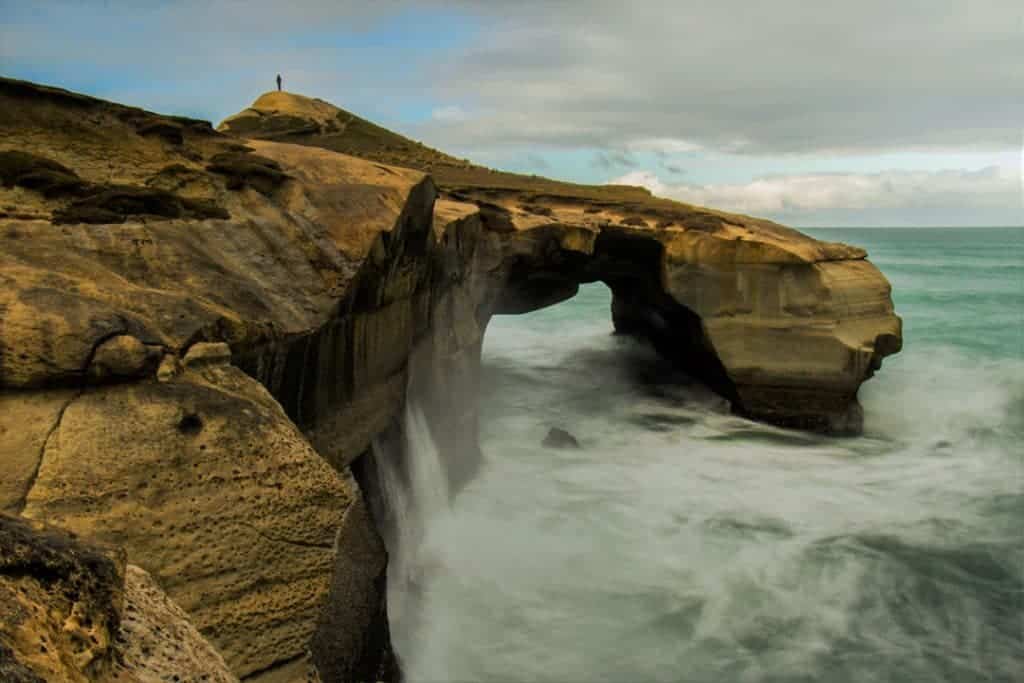
Rich in Maori history and culture, Auckland is the most populous city in New Zealand. Here you’ll find plenty of incredible things to do !
Known for its beautiful landscapes and wild outdoor activities (can you say bungee jumping?!) Queenstown will have your heart as soon as you arrive!
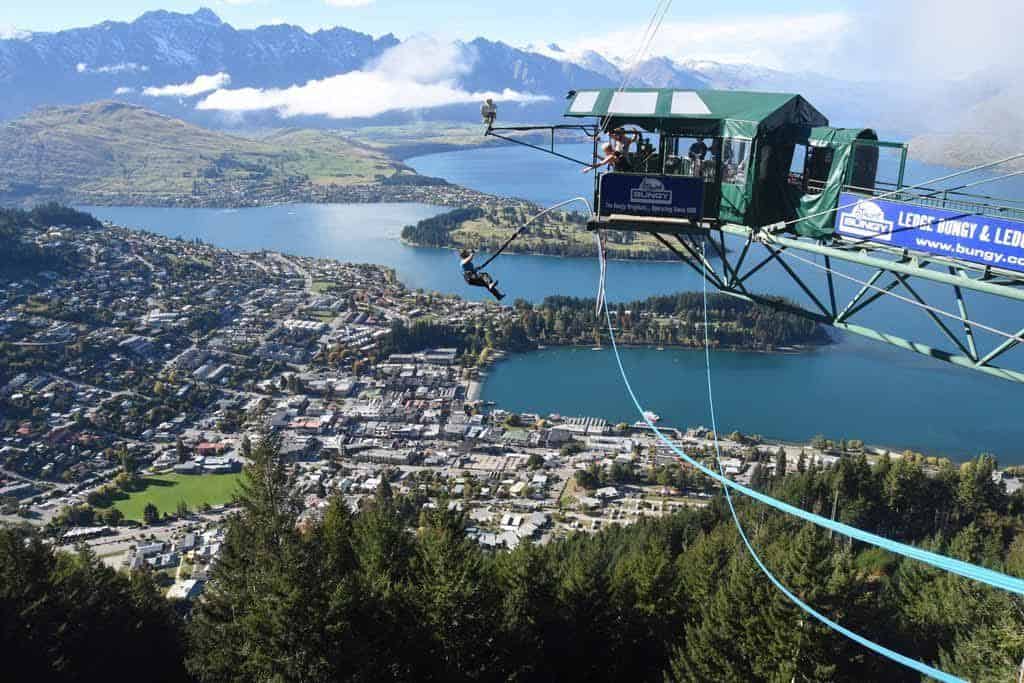
Aoraki National Park
Aoraki National Park is a place of dreams complete with New Zealand’s highest peak, Mount Cook soaring to over 3,700 metres.
Tongariro Crossing
Tongariro Crossing is one of the most popular day treks in the North Island where you see scenes from the famous Mordor and Mount Doom from the Lord of the Rings.
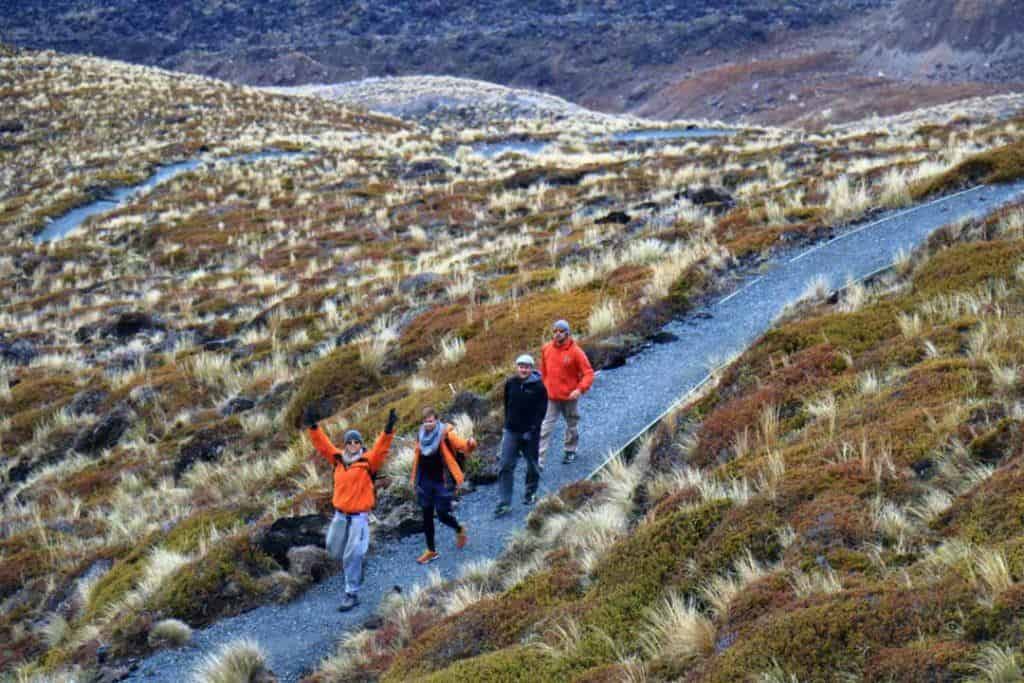
Mount Aspiring National Park
Mount Aspiring National Park is honestly the most beautiful place to sit back and just stare at mountains for hours on end. Options here include a hike to Rob Roy Glacier or further onto French’s Ridge hut for those adventurous souls.
For more information on specific things to do in the top places to visit in New Zealand, reference our following city travel guides:
BE SURE TO CHECK OUT THESE OTHER AWESOME PLACES TO VISIT IN NEW ZEALAND .
BEST NEW ZEALAND TRAVEL ITINERARY
Depending on whether you are starting from scratch or have a general idea of what kind of things you would like to see and do when travelling in New Zealand, we’ve put together a few itineraries that are sure to leave you wanting for nothing at the end of your visit.
There are so many amazing things to do in New Zealand that planning an itinerary for your travel can be a little overwhelming.
In this section, we’ll not only help you plan a 1-, 2-, or 3-week New Zealand itinerary but also give you an overview of many of the places you might want to consider visiting and things you may want to do.
Of course, no one-size-fits-all plan will suffice. But if we were to head back to New Zealand these are the top places and things that we would want to do!
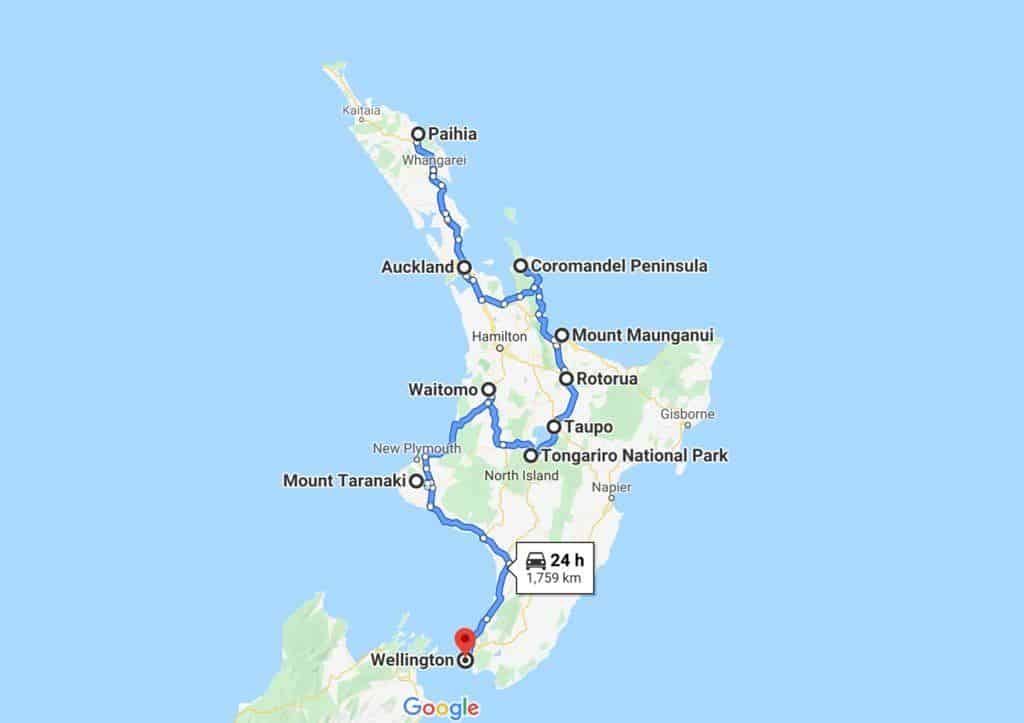
1-Week New Zealand North / South Island Travel Itinerary Highlights
If you only have 1 week to travel in New Zealand the best thing you can do is to pick either the North Island or the South Island to explore.
Here’s an overview of how we’d spend 1 week on either the North Island or South Island of New Zealand.
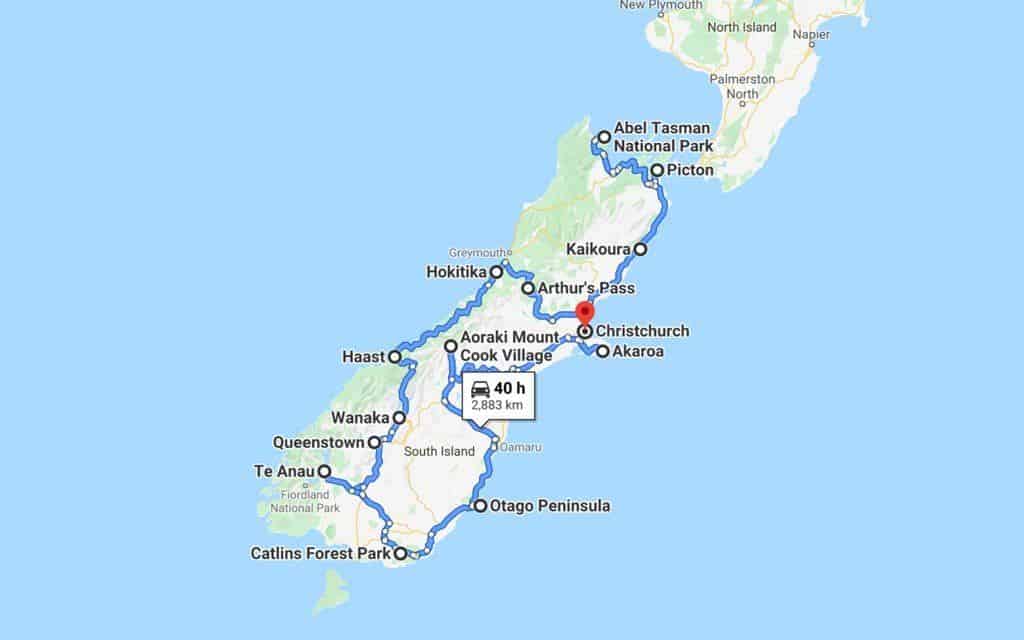
2-Week New Zealand Travel Itinerary Highlights
With 2 weeks in New Zealand, you can split your trip to cover both the North Island and the South Island. For this itinerary we recommend you fly into Auckland and out of Christchurch.
This is an idea of how we’d spend 2 weeks in New Zealand.
- Day 1 and 2 – Auckland
- Day 3 – Mount Maunganui
- Day 4 – Rotorua and drive to the Tongariro National Park
- Day 5 – Tongariro National Park
- Day 6 – Wellington
- Day 7 – Crossing the Cook Strait and driving to the Abel Tasman National Park.
- Day 8 – Hiking in the Abel Tasman National Park
- Day 9 – South Islands West Coast – Kaiteriteri to Hokitika
- Day 10 – South Island’s West Coast – Hokitika to Franz Josef or Fox Glacier and on to Wanaka
- Day 11 and 12 – Lake Wanaka
- Day 13 – Mount Cook
- Day 14 – Christchurch
3-Week New Zealand Travel Itinerary Highlights
Three weeks in New Zealand gives you a chance to see and do more. So if we had 3 weeks in New Zealand, this is how we’d spend it.
- Day 1 – Auckland
- Day 2 – Waitomo
- Day 3 – Tongariro National Park
- Day 4 – The Forgotten World Highway
- Day 5 – Wellington
- Day 6 – Crossing the Cook Strait to Picton and driving to Kaikoura
- Day 7 – Whale watching and dolphin swimming in Kaikoura
- Day 8 and 9 – Akaroa, the Banks Peninsula and driving to Mount Cook.
- Day 10 – Hiking around Mount Cook
- Day 11 and 12 – Wanaka
- Day 13 and 14 – Queenstown
- Day 15 and 16 – Doubtful Sound
- Day 17 and 18 – Caitlins National Park
- Day 19 and 20 – Dunedin and the Otago Peninsula
- Day 21 – Christchurch
READ MORE: Check out this post for more details on our New Zealand travel itinerary .
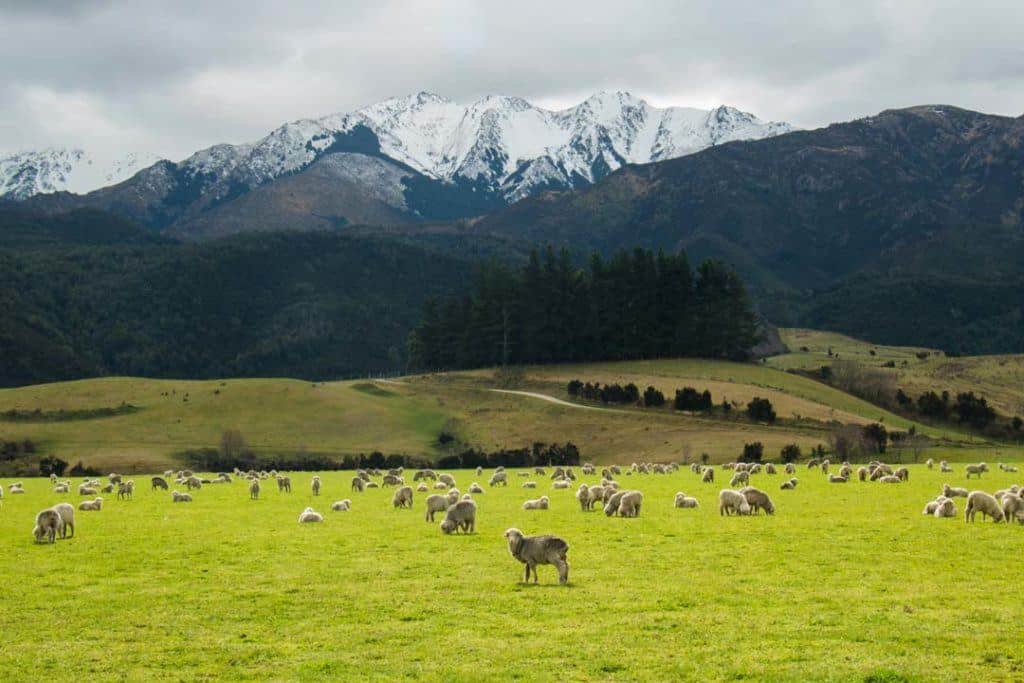
NEW ZEALAND TRIP PLANNING
Now we’re going to help you plan your ultimate trip to the Land of the Long White Cloud so you don’t make any mistakes! Here’s our best New Zealand travel tips based on almost a dozen trips!
BEST TIME TO VISIT NEW ZEALAND
These are the best times to travel to New Zealand:
- October – February for those perfect summer days.
- June – September for all things snow.
NEW ZEALAND TRAVEL BUDGET GUIDELINE
New Zealand is not the most affordable place to visit. However, you are sure to have a spectacular time well worth the expense.
You’ll find that taking a road trip is the best and most affordable way to see the country – especially if you plan to do some camping along the way.
Here’s an overview of what to expect when budgeting for travel to New Zealand:
Here are a few things you should know about the different budgets at which you can choose to travel.
Note: Budgets shown as Single Traveller / Couples per day.
Budget Traveller ($90 Single / $140 Couples)
If you’re here on a strict budget you are more likely to be getting around by car or basic camper van relying on DOC sites for your accommodation needs with the occasional splurge at a holiday park.
Basic camper vans will be small 2 berth campers that are often old Mazda vans, or people carriers converted into a home on wheels.
These budget-friendly camper vans are not self-contained, therefore you will not be allowed to freedom camp.
Make use of supermarkets and accommodation facilities to cook and limit eating out to an absolute minimum to keep the costs down.
Make sure to check the discounted aisles as quite often meat is marked down significantly if it is soon the pass its expiration date.
Adrenaline sports and other activities in New Zealand do not come cheap. If you are on a budget you will need to limit there.
So work out what you can realistically afford and do your research before you go, as the same activity may be cheaper in other parts of the country.
Mid-Range Traveller ($140 Single / $280 Couple)
If you’re on a mid-range budget then you are more likely to be travelling in a self-contained pop-top camper van and staying in a few more holiday parks than DOC sites.
Although eating out is expensive you may be able to afford the odd restaurant visit. But you will still be utilising supermarkets and holiday park facilities for the majority of your meals.
In terms of activities, you will be able to do more than if you were on a budget.
However, you will still need to watch the pennies, as the costs of these can rack up very quickly.
Luxury Traveller ($200+ Single / $300+ Couple)
If money is no object then you will be travelling in a rental car and staying in Airbnb, hotels or guesthouses, or you will be in a large multi-berth camper van.
As well a being fitted with the latest mod cons, the larger camper van will also be self-contained. If you’re taking the camper van option then you will be spending the majority of your time in holiday parks.
You will have the option to eat out more often, and whether you choose to is up to you.
In addition, you will also be able to splash out on some fancy purchases from the supermarket.
For activities, go wild! You’ve got the money so splash out and do as much as you want. New Zealand is full of great adventures and opportunities to have an amazing time!
New Zealand Budgeting Tips:
We have some great tips on how to make the most of your budget when you travel to New Zealand.
Top 10 Cards
Top 10 is the largest holiday park chain in New Zealand. They offer high-quality facilities at a reasonable price.
Purchasing a Top 10 card for $49 will save you 10% at all of their holiday parks. There are other additional discounts all over the country, including the ferry crossing from Wellington to Picton and on various activities including trips to Milford and Doubtful Sound.
Whenever you’re booking an activity, check if they have a top 10 discount. It saved us quite a lot when we were out there.
Take advantage of supermarket deals
Unless you have an almost unlimited budget you are going to be cooking a lot of your own food. New Zealand’s main supermarkets are Four Square, Pak n’Save, New World, Countdown and Fresh Choice.
Each supermarket will have various deals and multi saver options and some will have fuel discounts as well.
Early Bookings
If you’re visiting in Spring or Summer then it pays to book early to both ensure your space in a holiday park (especially around the Tongariro National Park) or on various activities.
Occasionally booking early will get you significant discounts.
Scour Travel Magazines
Any travel magazine, including ones you will pick up with your rental vehicle or at the airport, are loaded with discount coupons, for a variety of things potentially saving you quite a bit of money.
These generally can’t be combined with a top 10 discount card though.
Free BBQ’s
At various locations across New Zealand, you can expect to find free BBQs for public use. Make sure you have cleaning materials to ensure it’s clean for others to use afterward.
Plan Where You Are Going To Fill Up
Prices of petrol can vary in New Zealand. Therefore it pays to plan where to fill up.
For example, if you are taking a trip down to the tiny town of Manapouri to take a trip to Doubtful Sound, make sure you have a full tank before heading off as petrol is expensive there.
As a general rule of thumb, the smaller and more isolated a place is, the higher the petrol price is likely to be. A small difference here or there can help you to save if you’re here for a significant period of time.
Keep this in mind when travelling in New Zealand.
Check Your Fuel Consumption
When choosing which campervan you want to rent, check the fuel consumption. Often a lot of older and cheaper models consume a lot more fuel than some more expensive models.
Therefore it may be worth paying more to rent, as it could be cheaper when fuel costs are taken into account.
Limit Your Eating Out
If you are on a budget then this is one of the easiest ways to save money. Whilst being delicious, eating out in New Zealand is expensive and as such is an easy way to limit your outgoings.
Consider Travelling in New Zealand in The Winter
The cost of activities and vehicle rental is much cheaper in the winter than in the spring and summer.
Naturally, the weather won’t be as good and there will be some activities that are not running and some hiking trails that may not be accessible.
However, it has the potential to save you quite a bit of money.
Hire Returns
If you are planning on visiting New Zealand for a long time then this could be worth considering. Many camper van rental companies need vehicles moving to various places around the country.
The cost of renting campervans for these journeys is insanely cheap, sometimes as little as a few dollars a day.
The downside is that you have a limited time to get from point A to point B and it can be hard to follow a route, as you may be going here there and everywhere.
However, if time is on your side then this could be well worth it!
Buying A Vehicle
If you are going to be visiting New Zealand for an extended period of time then renting is not a sensible financial decision.
Buying your own vehicles has a number of advantages
- Your trip is a long as you want it to be.
- You could potentially sell the vehicle for the same or a similar price to what you paid for it, limiting your travel costs.
However, you won’t be able to rely on a hire company if something goes wrong.
You will need to add a few weeks on either side of your trip to buy and sell your vehicle.
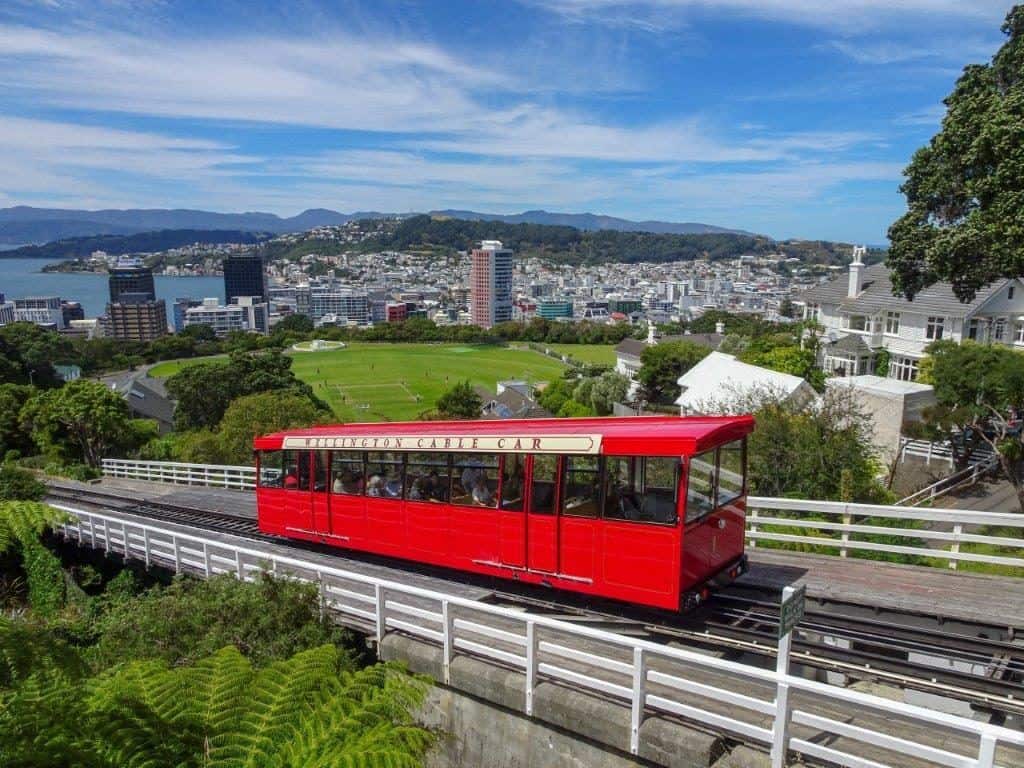
GETTING TO AND AROUND NEW ZEALAND
New Zealand is an island nation and thus the most reasonable, cost-efficient and common way to travel to New Zealand is by air.
Entry Requirements
It is relatively easy to travel to New Zealand. Australians can enter and stay visa-free.
UK citizens can enter for free with a 6-month stay.
Other nationalities may qualify for a visa waiver.
For information about which countries are granted visa-free waivers click here
Getting Around New Zealand
Hiring a vehicle is the best way to get around New Zealand and experience the stunning scenery that New Zealand has to offer.
Whilst there are public transport options available, there are natural limitations on the areas you can visit.
Travelling by Air
This is not a common option for many travellers. However if your time here for a shorter period of time then they can be an excellent option to cover larger distances.
You can then pick up a hire car at each destination and utilise short term rentals. This may be beneficial, for example, in flying between the North and South Islands to/from Auckland and Christchurch.
It’s not uncommon to find discounts, especially when booking early.
Travelling by Car
Generally much cheaper than renting a campervan, both in terms of rental fees and fuel consumption. If you’re here on a short visit then renting a car may be a better option than renting a campervan.
This can be a particularly budget-friendly option if you plan on camping as opposed to staying in Airbnb’s and guesthouses.
This is the way most travellers get around. Many have wonderful memories of pulling up in their campervans on edge of a lake, a deserted beach, or just stopping on a quiet road to admire the view.
It gives you more freedom and flexibility than a car. However it is more expensive and uses more fuel.
But if you are visiting for a longer period of time it can actually work out being quite similar, once you take the cost of accommodation into account. Holiday parks and DOC sites are much cheaper than guesthouses and Airbnb’s.
Many travellers rent large campervans, despite have little experience of driving a vehicle of such size.
When combining this lack of experience with New Zealand’s narrow and winding roads it can be a rather stressful experience. So think carefully about what you really need.
READ MORE: Check out our epic New Zealand road trip itinerary !
Travelling by Bus
If you don’t drive then this is the best option. The two most well known bus companies are the Kiwi Experience , which is aimed primarily at those aged between 18 and 25, and the intercity network .
Both companies offer flexible hop on hop off passes where you buy a certain number of hours in which you can then top up as you see fit. You can also change your plans if necessary.
Additionally you can purchase pre-arranged passes which can work out to be good value for money.
Although bus networks in New Zealand are well connected, it is harder to get away from the towns and into the middle of nowhere – which is one of the highlights of any visit.
Additionally, it will be harder to access hiking trails since you will not have a car and thusly will be reliant on public transport.
Travelling by Boat/Ferry
The countries major ferry route is between Picton and Wellington connecting the North and South Islands.
In high season it is recommended to book ahead.
Travelling by Train
The most famous train journey in New Zealand is the Trans-Alpine route that crosses the South Island between Christchurch and Greymouth via the Arthus Pass National Park.
Aside from this there a number of other train routes offering stunning scenery.
That being said, this isn’t the most convenient way to travel and you will have to combine it with bus travel or vehicle hire to be able to get around the country.
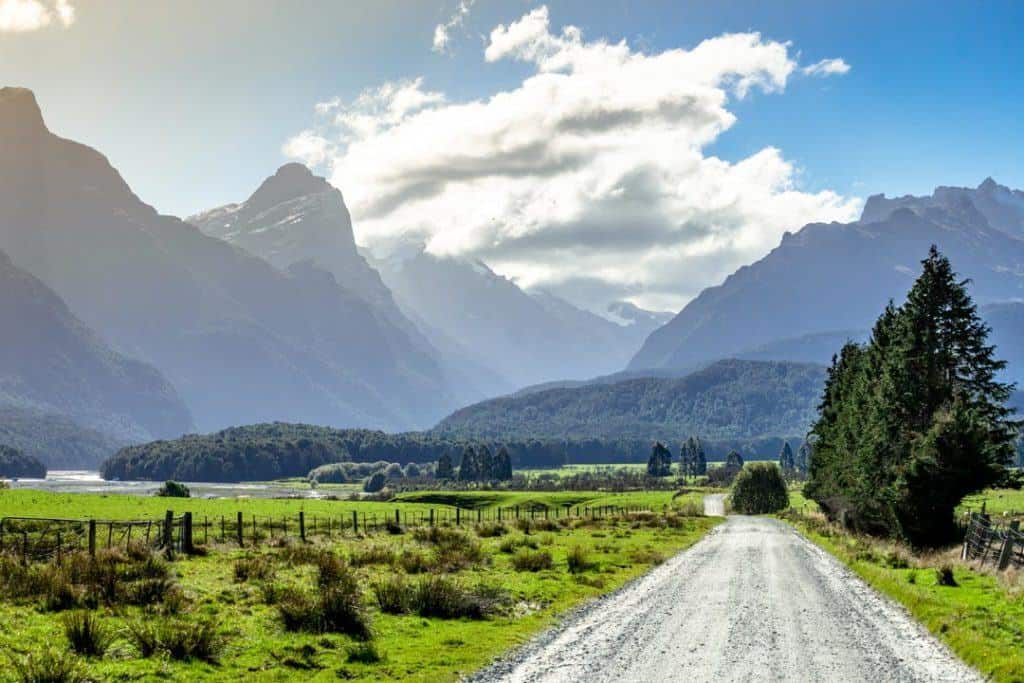
APPS AND TECHNOLOGY
Mobile apps and technology will make your trip safer, more affordable and overall more enjoyable.
Here are a few we think you should definitely acquaint yourself with prior to your travels:
- Google Maps – The tried and true navigation app that will help you find virtually any place in New Zealand and help you with directions on how to get there
- XE Currency – Transfer, monitor and calculate currency as the need arises. This app may not be totally necessary as you are typically tied into rates the banks charge for services. But it is handy to have around.
- Express VPN – This will protect your sensitive information wherever you travel – not just in New Zealand. Be sure to have this to keep your online information secure as you travel.
- CamperMate – Since you will most likely find yourself camping at some, if not all, of your travel to New Zealand, use this app to find camping spots all around the country
BEST THINGS TO EAT IN NEW ZEALAND
New Zealand has some pretty tasty food. You should definitely give the following foods a try when visiting!
- Lamb – A staple in Kiwi meals and found at almost every restaurant. Lamb is traditionally prepared with rosemary and garlic.
- Spaghetti on toast – Yes, as simple as it sounds this is a delicious New Zealand staple
- Marmite – The equivalent of Australian Vegemite, made from yeast extract and herbs. Spread it thin over crackers or bread.
- L&P – Lemon and Paeroa is mineral water tinted with lemon that could easily be the countries national drink
- Hangi – A traditional Maori method of steaming meats and vegetables where the food is wrapped in leaves and buried to cook on heated stones in holes in the ground.
- Kumara – A form of sweet potato that is prepared a variety of ways such as chips and wedges
- Fish And Chips – A classic dish with deep-fried battered fish and potato fries served with tomato sauce
- Pavlova – A meringue dessert that has caused much dispute over whether it was originally created in Australia or New Zealand.
- Hokey Pokey Ice Cream – Vanilla ice cream with caramelized sugar. Enough said!
- Manuka Honey – Produced by bees that collect the pollen of Manuka trees, this honey is thick and uniquely sweetened in flavor
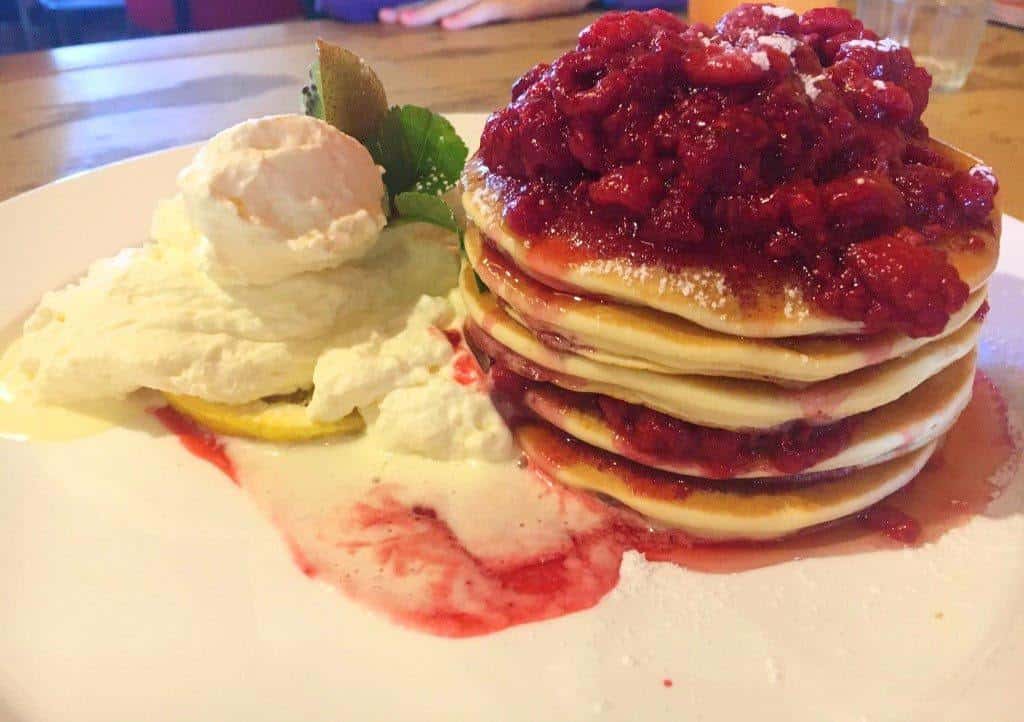
PLACES TO STAY IN NEW ZEALAND
New Zealand is chock full of great accommodation options. Whether you’re on a budget and need to stay at a hostel or have enough room in your budget to splurge on a hotel or unique Airbnb you’ll be pleased with your stay.
Of course, if you are looking to camp in beautiful landscapes then your options become even more wide open.
Holiday Parks and Campsites
Probably one of the most popular accommodation options for travellers visiting New Zealand. The predominantly cater to campervans and campers. However, some do have small chalets on site.
The vast majority will come with large kitchens and communal bathrooms. However, not all kitchens are equipped, meaning they do not have cooking utensils and cutlery.
In addition, holiday parks will offer both powered and non-powered sites. Naturally, non-powered sites are cheaper, so this could be a good way to save a few pennies here and there.
Rankers and Campermate are two useful apps that can help you locate holiday parks and campsites, see what facilities they have and check out reviews from other travellers.
Campmate allows you to book in advance and check out various things to do in the local area amongst other things.
There will be some campsites and holiday parks that only allow self-contained vehicles.
Your vehicle is self-contained if:
- You have a toilet fixed or portable that can be used even when the beds are down
- You have a fresh and wastewater tank
- An evacuation hose
- A rubbish bin with a lid
- Self-contained campervans can also be identified by a blue sticker.
DOC (Department of Conservation Sites) are generally cheaper and more rustic than holiday parks. Expect a bathroom and maybe a small unequipped kitchen.
However, they often located in stunning locations, with the White Horse Campground close to Mount Cook being a prime example.
There are 6 different categories of DOC site . They are a great budget option and are often surrounded by some stunning scenery.
Freedom Camping
There are some spots where you are allowed to freedom camp. In the past, you used to be able to freedom camp almost anywhere.
However, a large increase in tourists and the waste they left behind has put paid to that. You can now only freedom camp if you are in a self-contained vehicle.
Freedom camping is a wonderful thing. However for it to carry on working effectively, everyone needs to follow the rules and clear up after themselves.
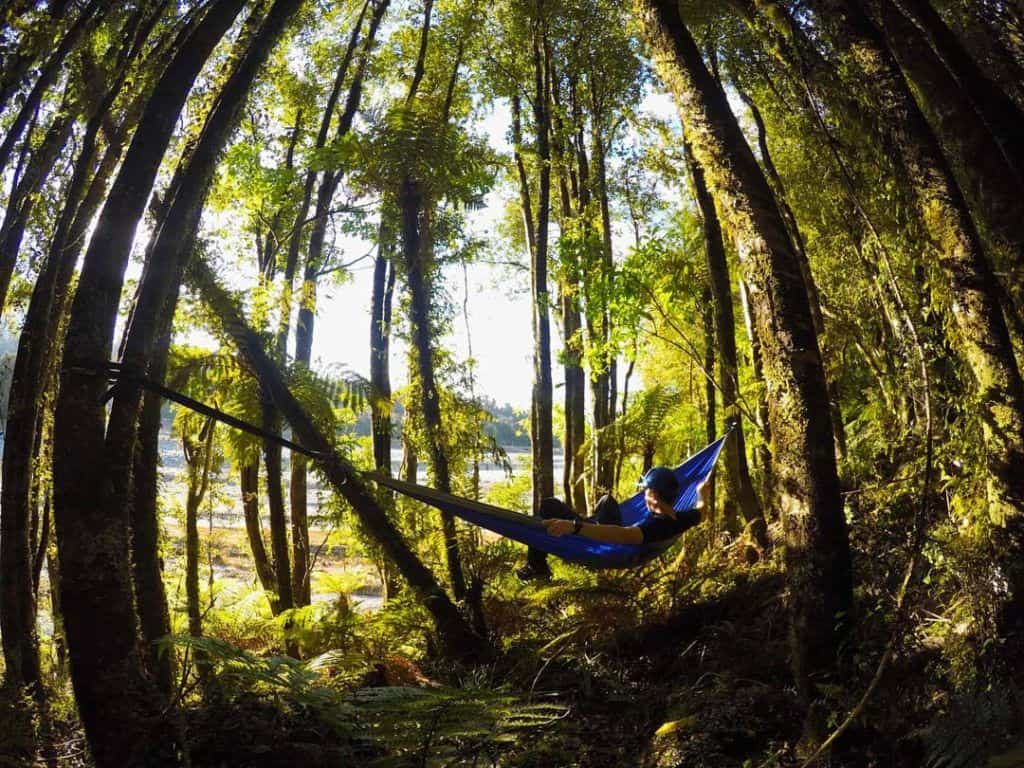
New Zealand is jam-packed with plenty of awesome hostels that connect travellers and are phenomenal resources of tips and information.
Incidentally, they are great places to buy and sell vehicles. So if you land in Christchurch or Auckland and are planning on buying camper van for your road trip, then your hostel is the perfect place to start.
Hostels predominantly focus on dorms as opposed to private rooms, which brings to cost down significantly.
If you are travelling by car, then hostels are a great alternative to camping, although they are naturally more expensive. Make sure they have parking!
Hotels in New Zealand are not cheap, so if you are on a budget this is something you may want to avoid.
However, there are spectacular hotels and guesthouses throughout the country that are a great excuse to splash some cash.
Generally, hotels rank from simple motel-style options up the swanky 5-star options with plenty in between.
Another good option in recent years for accommodation in New Zealand is AirBnB. And there are more and more amazing places popping up to stay for very affordable prices every day.
As is typical in many destinations where Airbnb accommodations are popping up, you’ll likely find great value and a little more personal space with an Airbnb stay.
NEW ZEALAND TRAVEL TIPS
Here are the best travel tips for New Zealand to help you have the safest, most affordable and enjoyable trip possible.
GENERAL NEW ZEALAND TRAVEL TIPS
While there are many basic travel tips we suggest you use when travelling to New Zealand, there are also plenty of New Zealand-specific tips that will make your visit the best it can be.
Here are a few we recommend you consider as you plan your trip to visit New Zealand:
1. Make Sure You Have a Credit Card
New Zealand is not densely populated. It’s the size of the UK with a population of around 4.5 million (for reference the UK population is over 65 million).
This means there are a rather large number of unmanned petrol stations that are pay at the pump.
When we visited we had problems with debit cards being accepted at these machines. However, we experience no issues with credit cards.
2. Avoid The Summer Holidays If Possible
Late December and January are particularly busy in New Zealand as this is the nation’s summer holiday. This means that there will be large numbers of both international and domestic tourists.
November and early December bring great weather and smaller fewer people.
3. Don’t Follow Penguins
If you are in Omaru, and you’re walking back to your accommodation and you catch sight of a penguin, stop and do not follow them.
If you don’t stop then the penguins may be too scared to return to their nests.
4. Check For Weather Warnings
The weather can change quickly in New Zealand. During the winter months, large areas of New Zealand can experience heavy snowfall which can lead to road closures amongst other things.
Make sure to check weather warnings and road closure notices to ensure you can make appropriate plans.
5. Be Prepared For 4 Seasons in a Day
New Zealand is the absolute definition of 4 seasons in a day. Therefore whenever you’re heading out on a hike make sure you bring the appropriate clothing just in case the weather changes.
6. Hayfever Issues
New Zealand has a large amount of indigenous flora and fauna, particularly on the South Island. If you have hay fever then you may have quite a serious allergic reaction.
If you experience this then you’ll need to go to a doctor and get some prescription-strength hay fever medication.
7. Always Assume Journeys Will Take Longer Than Google Maps Says
New Zealand’s roads offer breathtaking views as you wind your way across the country.
Occasionally roads can be steep, narrow and extremely twisty.
If you are not used to driving such roads then it’s a safe bet that journeys will take longer than what google maps says.
8. Book Ahead If You Can
This is especially advisable for campsites and holiday parks. In Autumn and Winter, there is a good chance you can turn up and there will be space.
However in late Spring, early Summer this is not always a guarantee. Naturally, this is more likely in busier, more popular spots.
Additionally, you are likely to be arriving somewhere after 6 pm it’s worth calling the holiday park/campsite and booking a spot as very often desks close at 6 pm.
If you are planning on taking on any of New Zealand’s great walks and are planning in staying on the huts en route, then this is another situation where it is advisable to book ahead.
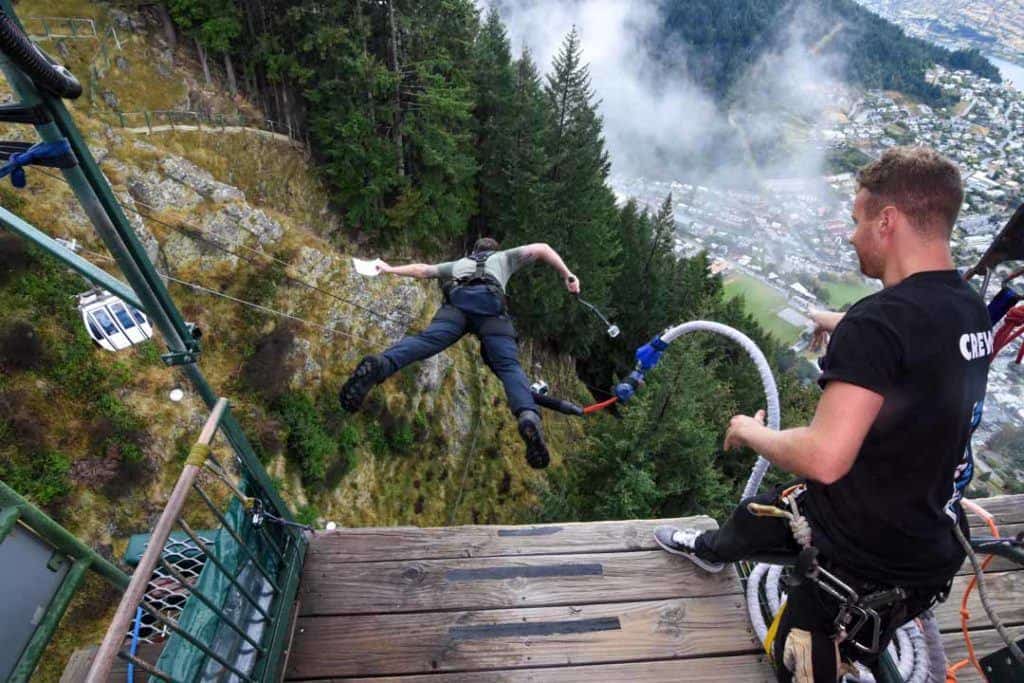
NEW ZEALAND PACKING LIST
We always travel with a core packing list wherever we go. And when it comes to New Zealand, many factors will affect what else you need to bring along with you.
Check out our travel essentials and be sure to add any of the other additional items listed below.
STAYING SAFE IN NEW ZEALAND
Generally speaking, New Zealand is very safe. That being said, you still need to take sensible precautions to keep yourself safe as you would do in your home country.
If you are heading out on multi-day hikes make sure you inform somebody. You’re best off informing you accommodation, however, they may directly ask you to register elsewhere.
This will differ depending on the hike and the region of the country you’re in.
Generally driving is very safe. The majority of road users are courteous and follow the rules of the road.
However, as mentioned earlier, New Zealand’s road criss-cross a variety of environments meaning that roads can be very narrow, steep and winding along the contours of the landscape.
Therefore make sure you are driving at a speed that you are comfortable with and follow the rules of the road.
New Zealand is blessed with many stunning beaches. However, make sure you pay attention to any beaches that are advising against swimming due to currents.
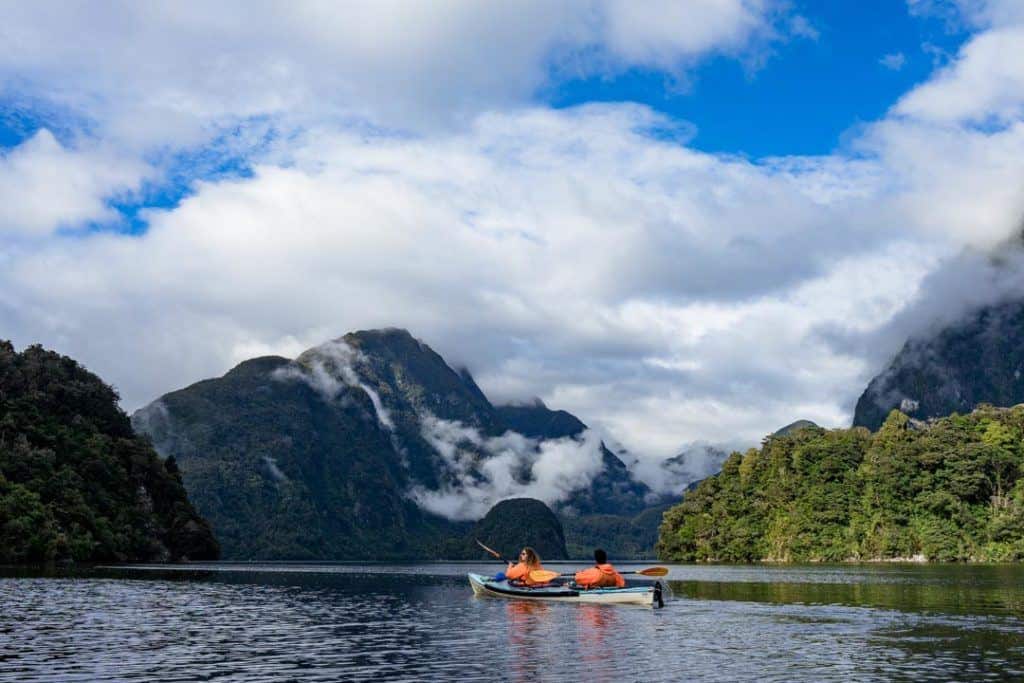
STAYING CONNECTED IN NEW ZEALAND
Staying connected in New Zealand can be challenging. But it has never easier as the country becomes more and more popular for travellers.
We feel like your money will go a lot further if you consider a few other options.
Purchase a SIM Card
Travel sims can be picked up anywhere in New Zealand. There are usually a variety of deals on offer. However, don’t expect the same kind of data packages you get in Europe, the Far East or the US.
With some companies, you can get free data when in the vicinity of one of their phone boxes.
Access Free WiFI
The vast majority of holiday parks and campsites have wifi. However, outside of major towns and cities, there is often a limit on the amount of data that you can use, as little 250 MB in some cases.
Unsurprisingly wifi connections can be patchy in more rural locations, with the South Island having a noticeable poorer wifi service in comparison to the North Island.
Hotels and guesthouses don’t suffer the same wifi issues and don’t have limits of the amount of data you can use. Generally, the speed is reasonable, much faster than what is available in holiday parks.
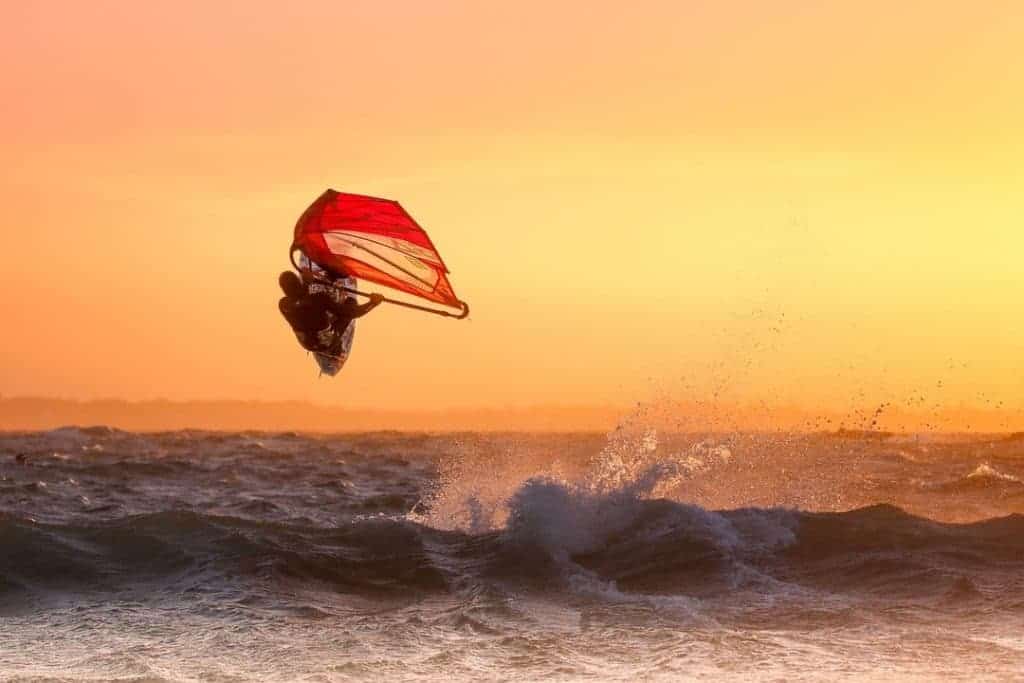
BE A RESPONSIBLE TRAVELER IN NEW ZEALAND
In recent years tourism numbers to New Zealand have surged. Whilst this has brought economic opportunity up and down the country, it has also lead to a number of challenges.
The first of these is freedom camping. In years gone by you could freedom camp almost anywhere with the expectations that people would follow basic rules such as cleaning up after yourself.
Sadly, however, these rules have been changed and you can now only freedom camp in designated spots and only if you have a self-contained vehicle in many cases.
Being a responsible traveller means following the rules with regards to freedom camping.
New Zealand is pristine. A large part of this is due to the lack of trash bins. You are expected to leave nothing but footprints.
It’s a simple and easy rule to follow. Make sure you keep New Zealand beautiful for everyone else that has the pleasure of visiting.
New Zealand is also home to a wide variety of wildlife with strict rules on interacting with them.
For example, a few of the basics are not feeding kea’s (the worlds only alpine parrot), staying a safe distance from seals whilst they are on land and not following the little blue penguins in Omaru.
Many roads in New Zealand are single lane and are particularly windy and can be challenging if you are driving a large campervan.
Be sure to observe all road rules and drive sensibly.
BOOKS TO READ ABOUT NEW ZEALAND
Maybe you already know everything about New Zealand. Chances are you don’t!
But even if you are well-read, here are a few suggestions that might be worth your time while you’re on the plane to New Zealand.
Pounamu Pounamu (Witi Ihimaera) – A look at what it is like to be a New Zealander from the Maori perspective from one of New Zealand’s first and most respected writers of Maori culture, tradition and storytelling. Buy it online here .
The Penguin History of New Zealand (Michael King) – The well-rounded historical story of the settling and advancement of New Zealand from one of New Zealand’s leading historians. You can find it here .
Squashed Possums: Off the Beaten Path in New Zealand (Jonathan Tindale) – An fun story of vagabond life in New Zealand from a man who lived in a wandering caravan and had some of the most peculiar encounters across the country. Check prices on Amazon .
Straying From the Flock: Travels in New Zealand (Alexander Elder) – The memoir of a New Zealand traveller as told through 50 chapters, each reflecting one day of adventure in the wild country. Buy it online .
CHECK OUT ALL OF OUR NEW ZEALAND BLOG POSTS
Whanganui journey in new zealand – the ultimate guide [2024], the ultimate guide to new zealand’s south island in winter, 5 best adventure activities in taranaki, new zealand, 17 awesome things to do in wanaka (epic 2024 guide), 22 cool things to do in wellington, new zealand (2024 edition), 18 awesome things to do in christchurch (2024 guide), the ultimate guide to hiking in new zealand (2024), 13 amazing things to do in franz josef (2024 guide), 3 days kayaking in abel tasman (everything you need to know), 8 amazing things to do in rotorua, new zealand, the most epic 1, 2 or 3 week new zealand itinerary (2024), the best new zealand road trip itinerary in 2024.

Ultimate NEW ZEALAND Travel Guide
New Zealand is an island nation located in the South Pacific Ocean and is part of Oceania . Oh New Zealand, how we love you, let us count the ways.
We are absolutely, unconditionally in love with this country. It has more natural beauty to deliver than most other places in the world combined.
Made up of two islands, referred to as North and South, New Zealand packs a huge punch in diversity. It is a place where you could be on the beach then up in the mountains in the span of an hour.
Each island offers you something new and this country deserves as much time as you can give it. We spent 5 weeks traveling all over the North and South islands and it was one of our most memorable trips to date.
This country easily tops our list of favorite places in the world.
Destinations
New zealand travel: quick tips, don’t visit new zealand without:.
UNIVERSAL TRAVEL ADAPTER

GET A GUIDEBOOK

REUSABLE WATER BOTTLE

NEW ZEALAND BUCKET LIST
Hike the tongariro crossing.
Arguably the best day hike in the world, the Tongariro Crossing takes you directly through Middle Earth. You’ll explore volcanic landscapes, bright-colored lakes, towering craters, and more.
GO TO HOBBITON
If you’re a Lord of the Rings fan, then a visit to Hobbiton is a must in New Zealand. Tour the film set and learn about the production of both the LOTR and Hobbit series.
VISIT MILFORD SOUND
Located on the South Island, Milford Sound is one of New Zealand’s most famous natural attractions. It is best explored by boat or kayak. It is also possible to hike the popular Milford Track here too.
MORE ADVENTURES IN NEW ZEALAND
There is no shortage of great things to do in New Zealand during your visit and the biggest problem you’ll face is fitting them all into your itinerary.
Each part of the country has its own offering and unique things to check out during a visit, so be sure to look at our multiple city and regional guides once you decide where your itinerary will take you.
SKYDIVING OVER LAKE TAUPO: Adventure sports were basically invented in New Zealand, so you should be sure to jump out of an airplane while you’re there! We decided to jump over Lake Taupo and the scenery was stunning. It is also possible to jump in Queenstown and Auckland.
ICE CLIMBING ON FRANZ JOSEF GLACIER: Take a helicopter flight and land on the Franz Josef glacier for an afternoon of ice climbing . It is both physically challenging and exciting, a great way to get up close with this stunning natural wonder.
CAVING IN WAITOMO: Famous for its glowworm caves, heading underground in Waitomo is a must when in New Zealand. There are multiple programs available depending on the fitness levels that will have you exploring caves, underground rivers and waterfalls.
WHALE WATCHING IN KAIKOURA: The best place to watch whales in New Zealand is from the sleepy seaside town of Kaikoura. There are resident gray whales, orcas and dolphins that are almost a guarantee to spot during a tour. It is also possible to see sea lions and sharks on a tour, along with several species of aquatic birds.
VISIT THE CATLINS: One of the least visited places, and best-kept secrets, in New Zealand, is the Catlins . Located on the far southwest tip of the South Island, this natural area is a wonderland of dramatic landscapes and unique wildlife. This includes penguins!
KAYAKING IN ABEL TASMAN: The most stunning place in the country to kayak is in Abel Tasman. The water here is crystal clear and bright turquoise. This is paired with white sand beached and lush forests. It is possible to do both day trips and multi-day adventures here.
WHITE WATER RAFTING IN ROTORUA: Jump in a raft on the Kaituna River and try your hand at navigating the world’s largest commercially rafted waterfall! Not only is the scenery on this river gorgeous, but the rafting here is some of the best we have ever done in our travels.
LEARN ABOUT THE MAORI PEOPLE: Take some time to learn about the indigenous people that have lived in New Zealand for hundreds of years. The Tamaki Maori Village in Rotorua provides an interactive look at day to day life of the Maori people.
SOAK AT HOT WATER BEACH: On the North Island, head for the Coromandel Peninsula. During low tide, you can head to the main beach with a shovel, dig a hole in the tide line and enjoy a soak in the boiling hot waters of the volcanic beach.
TRY BUNGEE JUMPING: Invented in New Zealand, it is possible to jump from many different situations across the country. That is if you dare. Some of the most famous include the original Kawarau bridge jump outside of Queenstown, the Auckland Bridge and the 134m Nevis.
FOODIE BUCKET LIST
New Zealand has a diverse multicultural makeup, and the country’s cuisine is characterized by a mix of Maori, European and Asian dishes, many of which are now beginning to fuse and merge, to produce a unique culinary scene.
HANGI: A Hangi is a traditional Maori cooking technique, where food is cooked using ovens dug into the ground. Food consists of vegetables and meat, and it’s slowly roasted in the pits for hours, before being served at feasts.
FISH N CHIPS: A classic New Zealand dish popularised by British settlers and immigrants is Fish and Chips. With an abundance of coastline, fishing is a big industry, and battered fish served with fried chips has endured as a popular dish.
PAVLOVA: Popular in both Australia and New Zealand, Pavlova is a dessert that was dedicated to a Russian dancer, and which is beloved in both countries. This meringue-based cake is topped with whipped cream and generous servings of fruit.
NEW ZEALAND FESTIVALS
NEW YEAR: New Year is a great time to travel to New Zealand because the entire country celebrates in style. This is one of the first places in the world to ring in the New Year, and the best places to be are the cities. Head to Auckland, Wellington, or Christchurch for the biggest events and biggest parties.
ANZAC DAY: ANZAC Day is held on 25th April each year, and it’s a commemoration of soldiers from both Australia and New Zealand who have been killed in wars and conflicts across the world. While it’s a somber affair, it’s also an important sign of national identity, as New Zealand’s involvement in wars helped the country to assert its independence from Great Britain.
WAITANGI DAY: An equally important national holiday is Waitangi Day, which is held on 6th February each year. This commemorates the day that the Waitangi Treaty was signed between the Maori and British, and it marks the birth of what would become modern New Zealand. Celebrations and commemorations are primarily held in Waitangi, while other communities also host events too, with many using the day as an opportunity to educate people on Maori history.
PLAN YOUR TRIP LIKE A SEASONED PRO!
Popular regions in new zealand, south island west coast.
The West Coast region of the South Island is one of the most dramatic and beautiful places in New Zealand. Along the coast, you can find impressive natural sights such as Milford Sound, Mount Aspiring National Park, Abel Tasman, and the Franz Josef Glacier. To name a few. The main hub is Queenstown, the country’s extreme sports capital, a small city surrounded by mountains on the shores of Lake Wakatipu. In winter you can ski and snowboard, while all year round you can bungee jump and skydive.
Found at the top of the North Island, Auckland is the most iconic city to visit when you travel to New Zealand. This is the country’s largest city, but as well as being full of museums, culture and great restaurants and bars, it’s in the perfect location to explore nature. With warmer weather than the rest of the country, you can visit the nearby beaches, travel across to the islands, and enjoy hiking spots and even volcanoes.
Located in the Southwest corner of the South Island, the towns of Dunedin and Invercargill anchor this area for exploration. It is a hotbed for wildlife lovers. If you love penguins, you will have the chance to spot yellow-eyed, Fjordland, and blue penguins in this part of New Zealand. Be sure to head to the Catlins. You can also enjoy a rugby game and the world’s steepest street in Dunedin. The Mysterious Moeraki Boulders are also found in this part of the country.
New Zealand’s capital is found at the far southern end of the North Island, and it’s the city to visit if you are interested in the country’s history, heritage, and culture. In Wellington, you’ll find great museums but you’ll also find excellent scenery, as the city overlooks the spectacular Cook Strait. It is a great base to see off the beaten path places like River Valley to the North. In Wellington, you can also access the South Island by ferry.
BAY OF PLENTY
Located along the northern coast of the North Island, the Bay of Plenty is one of the most beautiful places to visit when you travel to New Zealand. The long coastline here is incredible, and you can base yourself in the city of Tauranga if you are looking to make the most of the beaches and the Pacific Ocean. On the Western end, the Coromandel Peninsula offers you Cathedral Cove and Hot Water Beach. To the south, you can enjoy the outdoor and cultural delights of Rotorua, where you will find geothermal spas, geysers, and volcanoes, as well as Maori villages.
NEW ZEALAND TRAVEL BUDGET
Setting a budget for travel to New Zealand is highly dependent on your travel style. While it is possible to travel on a small budget , it is good to know that New Zealand is not a cheap destination. That said, you can make your trip as basic or as luxury as you desire.
To help you set your budget, we’ve included some base range price estimations for travel within New Zealand. Of course, keep in mind that prices can fluctuate based on seasons, availability and festivals.
ACCOMMODATION: Varies by type and rating. Generally, you can expect camping to be free to NZD 20 per night, hostels to average NZD 40 per night, mid-range hotels to average NZD 75 per night and luxury hotels to be NZD 150 and up per night.
ATTRACTIONS : Costs vary. New Zealand is the place to do lots of activities, and these will add up to be the biggest expense. Skydiving costs NZD 500 and bungy jumping costs NZD 150, for example.
TRANSPORTATION: The most popular method of travel around New Zealand is by car or bus. Rental cars can be picked up for around NZD 20 per day, while campervans will cost closer to NZD 60 per day. You can expect a litre of Petrol to cost around NZD 2. Overnight Intercity Bus Fare will be approximately NZD 60 (Auckland to Wellington, for example).
FOOD: Food will vary widely depending on your tastes and what restaurants you choose to visit on your trip. Generally, though, you can expect to find fast food for around NZD 10 per meal, mid-range restaurant meals for NZD 25 per person and pay around NZD 10 for a pint of beer .
60 NZD PER DAY
Staying in hostels, or hiring a campervan, eating fast food or cooking own food, and a few activities.
150 NZD PER DAY
Private rooms. Restaurant meals. Several activities and day trips.
300 USD + PER DAY
Upscale hotels. Restaurant meals and bars. No limit on the number of activities undertaken.
WHERE TO STAY IN NEW ZEALAND
Below you will find some of the places we have stayed during our travels in New Zealand. These are individual properties that we enjoyed and would recommend to other travelers.
For more specific advice, check out The Best Queenstown Accommodation Guide Out There
HOW TO GET AROUND IN NEW ZEALAND
Despite New Zealand being diverse in topography, it is quite easy to get around. There is an extensive bus network that operates between just about every city and village on both of the islands. Multiple tours run, both in group and private scenarios offering good connectivity to most places.
That said, it is still possible to rent a car or campervan and get off the beaten path to enjoy the vast nature that this country has to offer. Don’t be afraid to go out and explore.
FLIGHTS: The quickest way to travel around New Zealand is by flying, however, given the small number of airlines operating in the country, there’s little competition and prices can be high. Air New Zealand is the best carrier, with the most extensive network.
BUS: Major cities are connected by long-distance bus routes, and this can be a cost-effective way to travel to New Zealand. Schedules though can be irregular, particularly the more rural you get, and if you have limited time then traveling by bus is not necessarily practical.
CAR/CAMPERVAN RENTAL: By far the best way to travel around New Zealand is by hiring a car or a campervan. The country is perfect for road tripping, and the winding roads and mountain passes are absolutely stunning. Many of New Zealand’s best sights can be difficult to reach by public transport, and having your own vehicle will make exploring so much easier. If you want to save on accommodation costs, or just enjoy even more flexibility, then you can even rent a campervan to tour around New Zealand. Check out Discover Rental Cars for great deals.
TRAIN: New Zealand only has a very limited public rail network, and train travel is not the best way to get around. The only real services are tourist services, on routes such as the TranzAlpine or Coastal Pacific. While seen as classic rail journeys, they are holidays in themselves and not the best mode of getting from A to B.
CYCLING: Increasingly, long-distance cycling is becoming a popular way to see New Zealand. The country is well set up for cyclists, with cycle paths and lanes in cities and in the countryside.
FERRIES: Of course, having two major islands, means that when traveling overland from north to south, you will need to take a ferry. There are several sailings each day, between Wellington and Picton.
KIWI EXPERIENCE: We’d be remiss if we didn’t mention the brilliant and somewhat famous backpacker buses that prowl the country. These tours are a great way to make new friends and see the best that New Zealand has to offer on both islands.
TOP NEW ZEALAND TOURS
Highlights of new zealand.
15 Days from Auckland to Christchurch Includes Coromandel, Rotorua, and top places on the South Island.
NEW ZEALAND MULTI-SPORT
22 Days from Auckland to Christchurch North & South Island with a wide variety of activities included.
NEW ZEALAND JOURNEY
12 Days from Auckland to Queenstown National Geographic Journeys tour of both North & South Island.
WHEN TO VISIT NEW ZEALAND
New Zealand, with its relatively southern location in the Pacific Ocean, experiences a generally temperate climate, with harsher weather in the South Island and hotter weather – verging on sub-tropical – in the North Island.
The weather can vary with the seasons, but in reality, there’s not really a bad time to travel to New Zealand, as the country looks different and has different activities to offer in every season.
Seasons are reversed in comparison to the northern hemisphere of course, and the most popular months to travel to New Zealand are summer , between December and February, and in particular over the Christmas holidays.
Temperatures are hot, the skies are clear, the mountains are great for hiking and the lakes are perfect for swimming.
Spring and Fall can be quieter times to visit, in comparison to summer, and while the weather can be more unpredictable – this is New Zealand, and it’s likely to rain at some point.
You can find prices are lower and the attractions aren’t as crowded. The shoulder seasons are perfect for hiking when the weather isn’t too hot.
Winter , between June and August, is perfect for winter sports, and in the mountains, you’ll find ski resorts are packed out, while the snow-capped scenery looks incredible.
For more in-depth information, be sure to check out Best Time to Visit New Zealand: Month by Month Breakdown
LOOKING FOR SOME INSPIRATION?
Safety in new zealand.
New Zealand could well be one of the safest countries in the world when it comes to crime. There are low crime rates, and while yes, in the cities you might be the victim of petty crime, there is little chance you will be involved in anything serious.
Rural New Zealand is even safer, and you’ll find villages and towns to be hospitable and welcoming to tourists, particularly when they rely heavily on visitors for income.
New Zealand does have its dangers though, as the country sits on the Pacific Ring of Fire, and is prone to violent earthquakes.
There is little you can do to predict where and when an earthquake will strike, and you would have to be incredibly unlucky to be caught up in one if you are just visiting on a short vacation.
Perhaps the biggest dangers are posed by New Zealand’s adventure sports and outdoor pursuits.
If you are looking to hike, ski or white water raft, then you should follow safety instructions and procedures and importantly, be aware of the weather.
As with any destination, we recommend learning and adhering to certain safety practices when you travel. Be sure to read our personal travel safety tips , compiled from our travels across 7 continents.
NEW ZEALAND TRAVEL: BOOKING RESOURCES
New zealand travel guide: related articles.
Looking for more info? Check out all the articles we’ve written on travel to New Zealand and start planning your dream trip.
15 Best Things to Do in Rotorua, New Zealand
20 awesome things to do in queenstown, new zealand, is the tamaki maori village worth it complete review, 15 fun things to do in tauranga, new zealand, the catlins, new zealand: 7 best places to visit (plus travel tips), 21 epic things to do in kaikoura, new zealand, 11 stunning things to do in lake tekapo new zealand, 6 reasons to add cape foulwind to your itinerary, best time to visit new zealand: month by month breakdown, 15 memorable things to do in taupo, new zealand, two week new zealand south island itinerary, two week north island new zealand itinerary, the best queenstown accommodation guide out there, 35 epic things to do in new zealand (on your first visit), hiking the tongariro crossing & devil’s staircase: everything you need to know, karangahake gorge: off the beaten track in nz, piha beach planning & surf guide, blue pools, nz – blue pools track, swimming spots & bridge jumping, kaikoura whale watching: the ultimate guide, new zealand in pictures: 40 photos to give you wanderlust, backpacking in new zealand: 5 week recap & travel tips, following in frodo’s steps at hobbiton in new zealand, new zealand sweet spot: punakaiki pancake rocks, our encounter with the yellow-eyed penguins in new zealand, new zealand’s moeraki boulders in photos, interview with a fergburger waitress: queenstown, new zealand, ice climbing on franz josef glacier in new zealand, unrivaled scenery at lake hawea, new zealand, new zealand sweet spot: lake rotoiti, skydiving in new zealand- our first skydive, horse trekking in river valley, new zealand, white water rotorua rafting: kaituna river 7 meter waterfall, caving adventure with black water rafting in new zealand, new zealand sweet spot: cathedral cove, new zealand sweet spot: hot water beach, adventure on the auckland bridge.


- Food & Drink
- Milford Sound
- Itineraries
- Work With Me
35 New Zealand Travel Tips: What to Know Before You Go
Are you’re planning your first trip to New Zealand and wondering where to start? I’ve got you covered with these New Zealand travel tips!
New Zealand is a stunningly beautiful country that offers a wide range of experiences for travelers. From the rugged mountains and glaciers of the South Island to the lush rainforests and pristine beaches of the North Island, it’s no wonder New Zealand is a must-visit destination for many.
With so much to see and do, there are a few things you should know first, so you can have an amazing time without having to spend time figuring these things out DURING your trip.
I’ve compiled the best tips for traveling in New Zealand that I learned from living here for 20 years to help you travel safely and smoothly throughout the country.
Here are 35 New Zealand travel tips to help you make the most of your adventure.
» Read next: Do I Need Travel Insurance for New Zealand?

Top New Zealand Travel Tips
1. don’t try to do everything.
New Zealand may be a small country but there is so much to see and do. Not to mention all the incredible landscapes to explore across two main islands. If you’re thinking you can see it all, you’re going to be disappointed or overwhelmed trying. My best tip for new visitors to New Zealand is “ don’t try to do everything” .
Even living here for many years, I still haven’t done it all.
No matter how much time you have, it’s impossible to do absolutely everything. And that’s ok! Plan a realistic itinerary so you can take the time to enjoy it. Prioritize your absolute must-dos, then build additional things around that.
Road trips are a good way to see a lot of things in between two main cities, including the small towns and beautiful landscapes around New Zealand.
2. Plan According to the Season
New Zealand is split across two main islands, and they are different in both terrain and climate. Research the areas you plan to visit including the weather to help you determine the best time to visit New Zealand .
In winter it can be quite cold in the South Island which may restrict certain activities, but it is ideal for skiing and snowboarding in the parts which have an alpine environment.
In summer it is a busier time to visit but there are more options with the good weather such as beach activities, especially in the warmer North Island.
Spring and fall can be good for hiking and experiencing popular activities with fewer crowds.
If you are planning road trips, bear in mind there can be snow and ice on roads in the alpine areas during winter. So you’ll need to keep an eye on road conditions and may need to consider a 4WD or carrying snow chains for your vehicle.
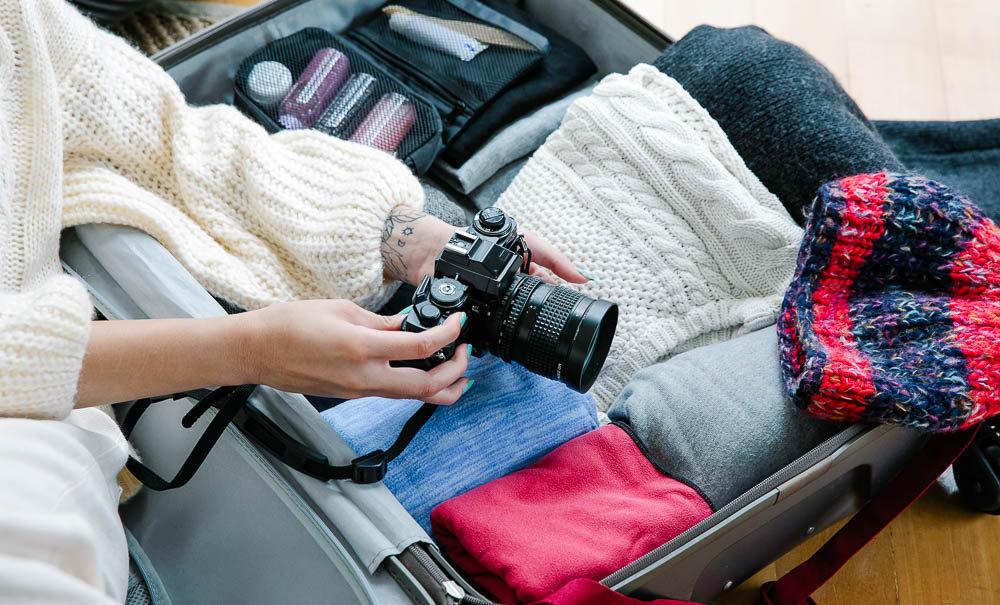
3. The Seasons are Reversed
Speaking of planning according to the season, it’s worth mentioning our seasons are opposite to the Northern Hemisphere.
Summer in New Zealand runs from December to February and winter from June to August.
This means summer school holidays are in December and January, which combined with the holiday season tends to be the busiest time of year to travel around New Zealand. Be sure to check school calendars if you want to avoid the school holiday crowds.
Spring (September to November) and fall (March to May) are considered the shoulder seasons and tend to be less busy with cheaper prices for accommodation, car rentals and some attractions than you would find in peak season.
4. Rent a Car or Campervan
Public transport outside the main cities is limited. If you plan on exploring multiple areas, I recommend renting a car or campervan. It offers the most flexibility and you can explore the country at your own pace.
Even within the cities, you may be limited to what you can see and do without your own transport. For example, the west coast beaches in Auckland are worth visiting but you’ll need a car to get there.
Hotels in the cities generally charge a fee for parking and it can be expensive. An option is to build your itinerary so that you have a few days in the city first without a car, then rent a car for the day trips you plan to take later on.
There are several car rental companies in New Zealand, including international brands and local companies. Some of the popular companies include Budget, Avis, Hertz, and Europcar. It’s important to do your research and compare prices and services before making a reservation.
We like using DiscoverCars.com to compare prices and book our rental cars. Once you enter your travel details they search the best deals you!

5. Know All Your Transport Options
Choosing the best way to travel around New Zealand is a personal choice. If renting a car is not right for you, there are several other options for getting around, each with its own advantages and disadvantages. The best option depends on your budget, travel style, and timeframe.
Here are some options to consider:
- Public transportation: New Zealand has a network of Intercity buses and trains that connect major cities and towns. This is a convenient and affordable option for getting around, especially if you’re traveling on a budget, but bear in mind it takes longer and offers less flexibility.
- Domestic flights: Air New Zealand and Jetstar are the two domestic airlines in New Zealand. Air New Zealand has the most coverage in regional airports, and Jetstar is generally cheaper. Flying between cities is good if you are short on time but it can be expensive and you’ll be limited to airport locations and flight schedules.
- Guided tours: There are bus tours covering most areas of the country from a couple of days to a couple of weeks. It’s a stress-free way to travel, with your itinerary and bookings made for you, and a great way to learn about the areas you visit from knowledgeable guides. Although they can be expensive and you may have limited time to explore on your own.
6. Know Where You Can and Cannot Camp
If you plan to explore New Zealand on a budget, staying in campsites and holiday parks along your journey, and renting a campervan is the way to go. Just be sure to know where you are allowed to camp as you can’t just park up anywhere in New Zealand.
Each region has its own by laws on freedom camping that you’ll need to adhere to. And you’ll need to be driving a certified self-contained campervan.
It’s also a good idea to book where you’ll be staying in advance, especially in peak season.

7. Learn New Zealand Road Rules
New Zealand drives on the left side of the road which may be different from what you are used to. This means the steering wheel will be on the right side of the car. A good tip to remember is the driver is always on the side of the car that is closest to the middle of the road.
Take some time to practice in a quiet place before tackling the cities or winding mountain roads.
Things like roundabouts and one-lane bridges are common in New Zealand but may be new to you. Be sure to know the New Zealand road rules and check driving conditions before heading off.
You can check the rules for driving as a visitor to New Zealand on the NZTA site , including license requirements.
8. Explore the Cities
New Zealand has several vibrant and dynamic cities that offer a range of experiences for visitors. I recommend that you don’t just stick to one during your visit. Each has its own vibe and attractions. They are also a great start and end point for exploring beyond the cities or embarking on a road trip.
- Auckland , the largest city in New Zealand, is known for its stunning harbor, world-class restaurants, and has plenty of attractions to choose from. Being a main travel hub, many visitors spend at least one day in Auckland to start their trip.
- Wellington , the capital city, is a cultural hub with a thriving arts scene, great coffee, and beautiful harbor views.
- Christchurch , located on the South Island, is known for its beautiful gardens and parks as well as cafes and restaurants.
- Queenstown , the adventure capital of New Zealand , offers a range of outdoor activities, from skiing and snowboarding to bungee jumping, skydiving and jetboating.
These cities, among others, offer a unique glimpse into New Zealand’s culture and history, as well as plenty of exciting things to do – rain or shine .
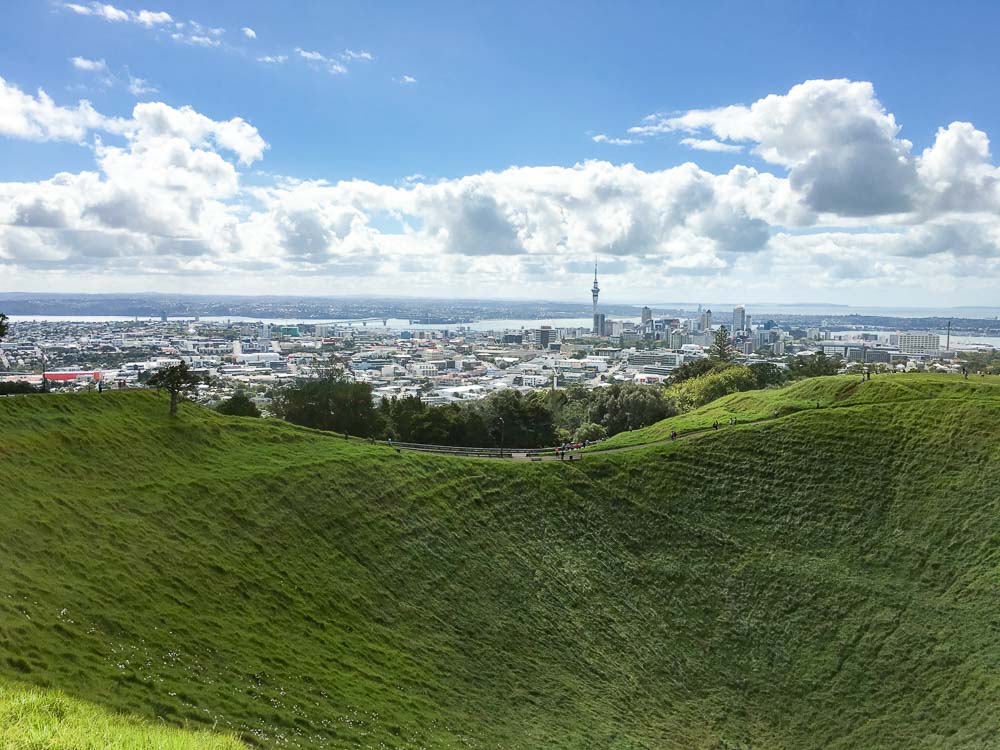
9. Explore Beyond the Cities
New Zealand is known for its natural beauty and there are many ways to experience it. From scenic drives and world-renowned hiking trails to national parks and quaint towns rich in history and culture.
In fact, New Zealand is home to two UNESCO World Heritage Areas, two International Dark Sky Reserves/Sanctuaries and 13 national parks that are free to visit.
Each area offers unique landscapes and activities, so try to visit at least a couple during your trip. Nature is what New Zealand does best!
10. Respect the Environment
New Zealand has a commitment to caring for the environment, including conservation efforts to preserve the native wildlife that is under threat due to invasive species.
Tiaki is a significant part of Māori culture that can be loosely translated to mean to care, conserve and protect. The Tiaki Promise is a commitment to care for New Zealand and everyone who lives and travels here has a responsibility to look after it. This means that while traveling in New Zealand we will:
- Care for land, sea and nature, treading lightly and leaving no trace
- Travel safely, showing care and consideration for all
- Respect culture, traveling with an open heart and mind
It’s important to stay on marked trails and practice “leave no trace” principles when hiking and camping. Always leave with anything you brought. Leaving trash or tramping on delicate vegetation is not responsible or respectful.
Be sure to clean your boots at cleaning stations when you see them. Not all trails have them, but it is an important step in containing diseases such as Kauri tree dieback, which is killing our beautiful Kauri trees. So please use them when you see them.
This is why it’s also important to only bring clean hiking gear into New Zealand. Declare your gear at the airport and they’ll even clean it for you.

11. Try Local Cuisine
New Zealand may not be the first place that comes to mind when thinking about food, but thanks to its diverse cultures and rich agricultural resources New Zealand has a range of delicious foods to try . Be sure to try local cuisine and visit farmers’ markets for fresh produce. Here are some of the best local dishes and where to try them:
- Auckland: Known for its multicultural food scene. Visit the Auckland Night Markets to try a variety of street food from all over the world. Head to Commercial Bay for a selection of restaurants and an upmarket food hall with a range of eateries. Or head to the Viaduct for Auckland’s top restaurants with a view. Try the steak and oysters at Oyster and Chop or fresh seafood at Soul Bar and Bistro.
- Rotorua: Experience a hāngī meal and learn about Māori culture at a Māori Village in Rotorua. Hāngī is a traditional method of cooking in Māori culture in which food is steamed in an underground pit, referred to as an earth oven, resulting in deliciously tender meat and root vegetable infused with smoky flavors.
- West Coast: Famous for its whitebait fitters. New Zealand whitebait are tiny fishes with a subtle flavor, most commonly served in fritters. They can be found all over New Zealand during whitebait season (September and October), but especially along the West Coast of the South Island.
- Bluff: A small town located at the very bottom of the South Island known for its fresh seafood and bluff oysters that are wild caught straight off the coast. If you can’t make it to Bluff, don’t worry, they are shipped to just about every seafood restaurant in the country from March to August.
- Kaikoura: Known for its amazing crayfish with ‘seafood caravans’ dotted along the coast. Similar in appearance to lobster but with a subtle flavor. If you’re heading to Kaikoura be sure to stop at Nins Bin to try their famously fresh crayfish.
- Queenstown: Home to the famous Fergburger, arguably New Zealand’s best burger, but also many restaurants featuring farm to table cuisine and local wines. Try Rata restaurant for fresh contemporary New Zealand cuisine. Or the signature ribs at Flame Bar & Grill, we dine here at least once or twice whenever we’re in Queenstown!

12. Enjoy Local Wine
New Zealand is known for its world-class wine, with several regions producing some of the best wines in the world. There are quite a few and I’m still working my way through trying them all!
Try to visit a couple of wineries, tour the vineyards, and sample the wine. It’s a wonderful experience sitting amongst the vineyards. Enjoy the stunning views of the surrounding landscapes, as well as a chance to meet the winemakers and learn about the wine-making process.
You may like to book a wine-tasting tour. There are plenty to choose from in each of New Zealand’s wine regions. Here are a few of our favorite wine regions to visit in New Zealand:
- Waiheke Island , located on the North Island and a short ferry ride from Auckland, is known for red wines based on Cabernet Sauvignon, Merlot, Malbec and Cabernet Franc grape varieties. The island is home to 30 boutique wineries , many with tasting rooms, swanky restaurants and breathtaking views.
- Hawke’s Bay , located on the North Island, is known for its full-bodied red wines, including Cabernet Sauvignon, Merlot, and Syrah.
- Marlborough , located on the South Island, is known for its Sauvignon Blanc, which is crisp, refreshing, and bursting with tropical fruit flavors.
- Central Otago , also located on the South Island, is known for its Pinot Noir, which is elegant, complex, and has a distinct earthy flavor.
Popular wineries include Cloudy Bay in Marlborough, Craggy Range in Hawke’s Bay, and Felton Road in Central Otago.

13. Book in Advance
New Zealand is a popular destination during the summer months (December to March). Accommodation and tours can fill up quickly. Many visitors from the Northern Hemisphere come to escape their winter plus local families are traveling for summer school holidays .
It’s worth booking your accommodation and car or campervan rental well in advance for the best rates. As appealing as it sounds to arrive with a road trip plan and wing it on where to stay each night, it’s not a good idea.
Even campsites need to be booked in most places and you may end up with nowhere to stay if you leave it to the last minute. You’re better off having a rough itinerary and booking your accommodation in advance for each area.
I also recommend booking any tours or attractions you don’t want to miss out on.
If you’re traveling between May and October you’ll have more flexibility with fewer crowds. With the exception of Queenstown, which gets busy for ski season from June to August. Even then, you’re better off having a rough plan with flexible bookings that you can change around once you’re here.

14. Don’t Miss the Scenic Roads
The South Island offers some of the most scenic drives in the country with views that have to be seen to be believed. Our 2-week South Island road trip itinerary provides a comprehensive loop around the island stopping at popular attractions and off-the-beaten-path locations.
The Southern Scenic Route follows the coastline from Dunedin to Invercargill including picturesque lighthouses and stunning waterfalls to be explored along the way.
You can continue on the Southern Scenic Route from Invercargill to Te Anau through the remote coastal communities and popular surf beaches along the southern coast.
Te Anau is a great base from which to explore the popular Milford Sound and the more remote Doubtful Sound . The drive from Te Anau to Milford Sound is an incredible journey through the lush landscapes of Fiordland with plenty of scenic stops along the way and not to be missed.
But my personal favorite is the drive from Queenstown to Mt Cook . Plan for a slow drive, with plenty of stops to see all the best views and places to discover along the way. From New Zealand’s oldest hotel to landscapes that can only be described as otherworldly, it has it all.
Here are some other scenic drives you might enjoy:
- Driving from Queenstown to Milford Sound: Everything You Need to Know + 18 Best Places to Stop Along the Way
- Driving Cromwell to Queenstown: 10 Best Places to Stop Along the Way
- 15 BEST Places to Stop on the Drive from Glenorchy to Queenstown
- Queenstown to Invercargill: 10 BEST Places to Stop Along the Way
For the North Island, our 2-week North Island road trip itinerary covers all the best places and scenic routes to take.

15. Protect Yourself from the Sun and Sandflies
The UV rays are pretty intense in New Zealand, thanks to a thin ozone layer and less airborne pollution to scatter the UV radiation. Traveling in New Zealand requires some preparation to protect yourself from the sun’s harmful rays all year round, with extra precautions during the summer months. Here are some of our top tips:
- Check the UV Index : UV levels are variable across the country and depending on the time of year. The sun’s rays are generally the strongest from months of September to April and from 10 a.m. to 4 p.m. so make sure you can seek shade during these times and plan outdoor activities in ways that prevent overexposure to the sun.
- Sunscreen: Use a broad-spectrum sunscreen with at least SPF 30 and remember to re-apply regularly, even if it’s cloudy. Consider a waterproof sunscreen if you’ll be swimming or sweating and re-apply more often.
- Clothing: Wear lightweight, long-sleeved shirts and pants to protect yourself from prolonged exposure to the sun. You can find apparel with built-in UV protection, but generally clothes with a tight weave are best at blocking UV rays.
- Hats and Sunglasses: Protect your face, neck and shoulders with a wide-brimmed hat. Sunglasses that block both UVA and UVB rays are best for protecting your eyes.
- Hydrate: Exposure to the sun can bring on dehydration quickly, especially when you’re active. Drink plenty of water, even if you don’t feel thirsty, to ensure you stay hydrated.
- Bring Bug Spray: Sandflies can be prolific in areas near running water and humid bush such as beaches, lakes and waterfalls, especially during summer. These tiny insects leave an itchy bite that can be unpleasant. Cover your arms and legs with clothing and use a high deet insect repellent if venturing to these areas. I also find they don’t bother you as much if you keep moving.

16. Don’t Skip the Hike
New Zealand is an outdoor paradise with hundreds of trails across the country from easy to advanced, and ranging from 10 minutes to 10 days! We always recommend including a few hikes in your itinerary. By the way, hiking is referred to as “tramping” in New Zealand .
The Department of Conservation (DOC) is a great resource to find trails that are available in any region across New Zealand, including any alerts or track closures.
Exploring the landscapes of New Zealand is a truly rewarding experience but it’s important to be prepared. If you plan on doing the more challenging hikes be sure to wear sturdy footwear and don’t underestimate the effort required. New Zealand’s advanced trails can be tough, technical and remote but incredibly beautiful.
The environment can also change quickly, especially in the backcountry and at higher altitudes. Dress for the conditions and always have a warm layer with you, even in summer. Wi-Fi may not be available in some locations so if you’re heading into the remote or alpine areas you should carry a personal location beacon (PLB) with you.
Here are some of our favorite hikes in New Zealand:
- 12 BEST Day Walks in Queenstown
- 10 EPIC Day Hikes in Queenstown
- 15 Must-Do Walks in Te Anau From Easy to Advanced
- Guide To Hiking Roys Peak: Everything To Know About New Zealand’s Most Photographed View
- 15 Best Hikes In Milford Sound
- Sawpit Gully Trail – A Spectacular Hiking Trail in Arrowtown, New Zealand

17. Enjoy the Beaches
New Zealand is home to some of the most stunning beaches in the world, and there are plenty of ways to enjoy them. Here are some of our top tips:
- Choose the Right Beach: New Zealand beaches can vary drastically from the wild black sand beaches on the west coast to the calm and pristine white sand beaches on the east coast. Do some research to find a beach that fits your interests – whether that’s surfing, swimming, relaxing or exploring.
- Sun Protection: Wear a broad-spectrum sunscreen with at least SPF30. Reapply regularly and don’t forget your sunglasses and hat.
- Follow Safety Guidelines: Always pay attention to beach safety signs and flags. Watch out for rip currents and only swim in designated areas when lifeguards are present.
- Pack a Picnic: Many beaches have picnic areas, some even with BBQ facilities, where you can enjoy a meal with a view. Remember to pack plenty of water and stay hydrated.
- Explore Beyond the Sand: Many beaches are near hiking trails, waterfalls, parks or towns with shops and restaurants. See what else there is to see and do in the area.
- Leave No Trace: Remember to take trash and belongings with you at the end of the day to help keep New Zealand beautiful.

18. Be Flexible
New Zealand is beautiful, wild and unpredictable and the weather can affect some activities. For example, wind or rain may cancel a skydive or a helicopter landing on a glacier. Fog may obstruct views at the top of the mountain you just spent 4 hours climbing.
I get that it’s a balancing act between planning for the time you have here and being flexible. Especially if you are traveling in the summer months when booking tours in advance is recommended.
Most tours offer the chance to re-schedule if it gets cancelled due to inclement weather. Our advice is to book your activities or tours that are weather-dependent for the beginning of your stay. This way you have the option to re-book for another day if you need to.
It’s also good to have a list of other things you want to see or do in each location so that you can adjust to the weather and conditions if you need to. Then you won’t have to spend time trying to research other things to do on the fly if plan A gets disrupted.
19. Dress for The Weather
New Zealand’s weather can be unpredictable, so be prepared for all kinds of weather, even in the summer.
The best way to pack for New Zealand is to bring layers. The time of year you’ll be visiting and the activities you’ll be doing will determine just how many layers you need. For example, hiking in the South Island in fall I wear a short sleeve or long sleeve t-shirt during the day and usually progress to a fleece and then a puffer jacket the higher we climb, and for the cooler evenings.
But even in summer, a light layer is useful for the cooler evenings and protection from the sun. And a warm layer if you’ll be heading to the mountains.
A waterproof jacket and comfortable walking shoes are essential all year round. And sturdy hiking boots if you’ll be hitting the trails.

20. Be Prepared for Earthquakes
Earthquakes can occur in certain parts of New Zealand. They aren’t very often and are usually small. In fact, I’ve lived here for many years and I still haven’t felt one in person. But that doesn’t mean one won’t happen while you’re here. It’s important to be familiar with safety procedures, just in case.
- Familiarize yourself with the “Drop, Cover, and Hold” protocol. If you feel shaking, drop down on your hands and knees. Cover your head and neck and get as much of your body under a sturdy piece of furniture. Hold on to your shelter until the shaking stops.
- Know the safe spots in your area. If inside, find an anterior wall or under large sturdy furniture and avoid doorways. If outside, move away from buildings, trees, streetlights, and power lines, then Drop, Cover and Hold.
- Know the emergency procedures at the place you’re staying. Identify safe places to take cover and establish a way to contact friends and family to let them know you’re safe.
- Consider having an emergency kit with you that includes items such as bottled water, non-perishable food, a flashlight, a first-aid kit, a portable charger for your phone and any essential medication.
Tips for Traveling in New Zealand
Here are some quick New Zealand travel tips to ensure you get here smoothly as well as some handy tips for traveling in New Zealand once you arrive.
21. Declare, Declare!
New Zealand customs are strict and you are required to declare certain items in order to protect the country’s environment.
Food as well as plant and animal products can introduce pests and diseases that could cause irreparable damage to New Zealand’s agriculture and environment. While some packaged food is okay to bring in, declare it anyway to be on the safe side.
New Zealand’s ecosystem has evolved in isolation for millions of years, with unique plants and animals that are found nowhere else in the world. The country’s isolation and geological history have created a unique and delicate balance between species. The introduction of a non-native pest or disease can have devastating consequences.
Not only can failure to declare result in fines or even criminal charges, but you may inadvertently bring in something extremely harmful to the environment.

22. Know Your Visa Requirements
Visitors to New Zealand are required to have a visa or an Electronic Travel Authority (ETA), depending on their country of origin.
Citizens from visa-waiver countries, such as the United States, Canada, and the United Kingdom, can apply for an ETA before their trip online or via the free app .
Visitors from countries that are not on the visa waiver list must apply for a visitor visa before arriving in New Zealand. This process can take several weeks, so be sure to plan accordingly.
The type of visa you have will determine how long you can stay, but generally ranges from 3 to 9 months. It’s important to check the visa requirements for your specific country before traveling to New Zealand, as they can vary depending on your country of origin and the purpose of your visit.
23. Have a Return Ticket
One of the rules for entry into New Zealand is that you must have a return ticket, unless you have a work visa. I know, it’s a great place and I don’t blame you for wanting to stay forever but you won’t even get into the country without that return ticket.
Luckily, you can stay for a long time as a tourist and there may be an option to extend your visit depending on the type of visa you entered on.
24. Currency
The local currency is the New Zealand dollar which comes in colorful notes ranging from $5 to $100.
Coins come in 10, 20 and 50-cent pieces and $1 and $2 coins. This keeps prices nice and round as does Swedish rounding. A purchase ending in 6, 7, 8, or 9 is rounded up to the nearest 10c and a price ending in 1, 2, 3, or 4 is rounded down to the nearest 10c since we don’t have any 1, 2 or 5 cent coins.
Most places in New Zealand accept credit cards, Visa and Mastercard being the most popular, but be aware some retailers may apply a surcharge for using a credit card. Also, the term EFTPOS means ‘paying with card’ in New Zealand.
The currency exchange bureaus you’ll find in New Zealand cities generally have better exchange rates compared to airports.

25. Sales Tax
In New Zealand, sales tax is called GST and it’s already built into the prices of things. This means the price you see on the sticker is the price you’ll pay at the counter for the most part.
Exceptions include if Swedish rounding or a credit card surcharge is applied.
26. Tipping is Not Expected
Tipping in New Zealand is not as common as it is in some other countries, such as the United States. In general, service charges are not added to bills, and tipping is not expected. The hospitality industry pays staff a fair wage, so tipping is not necessary to supplement their income.
However, if you receive exceptional service at a restaurant or from your tour guide, leaving a small tip is always appreciated. Generally, a 5-10% tip is considered a generous gesture. However, it’s entirely up to the individual’s discretion.
27. Emergency Number
111 is the emergency number for police, fire and ambulance in New Zealand and the number to call if anyone’s safety is at risk.
105 is the number for police non-emergencies. This includes reporting things that don’t need immediate or urgent attention such as a lost wallet or phone, and damaged or stolen property.
You should contact your embassy for issues with your passport.
New Zealand is a safe country with low crime rates, but it’s good to know these numbers and not need them, rather than need them and not have them.
28. Carry Reusable Bags
New Zealand grocery stores no longer provide free bags so I recommend carrying a couple of reusable bags with you. You can buy them from any grocery store. And if you are caught without a bag, don’t worry, you can still buy paper bags at checkout.
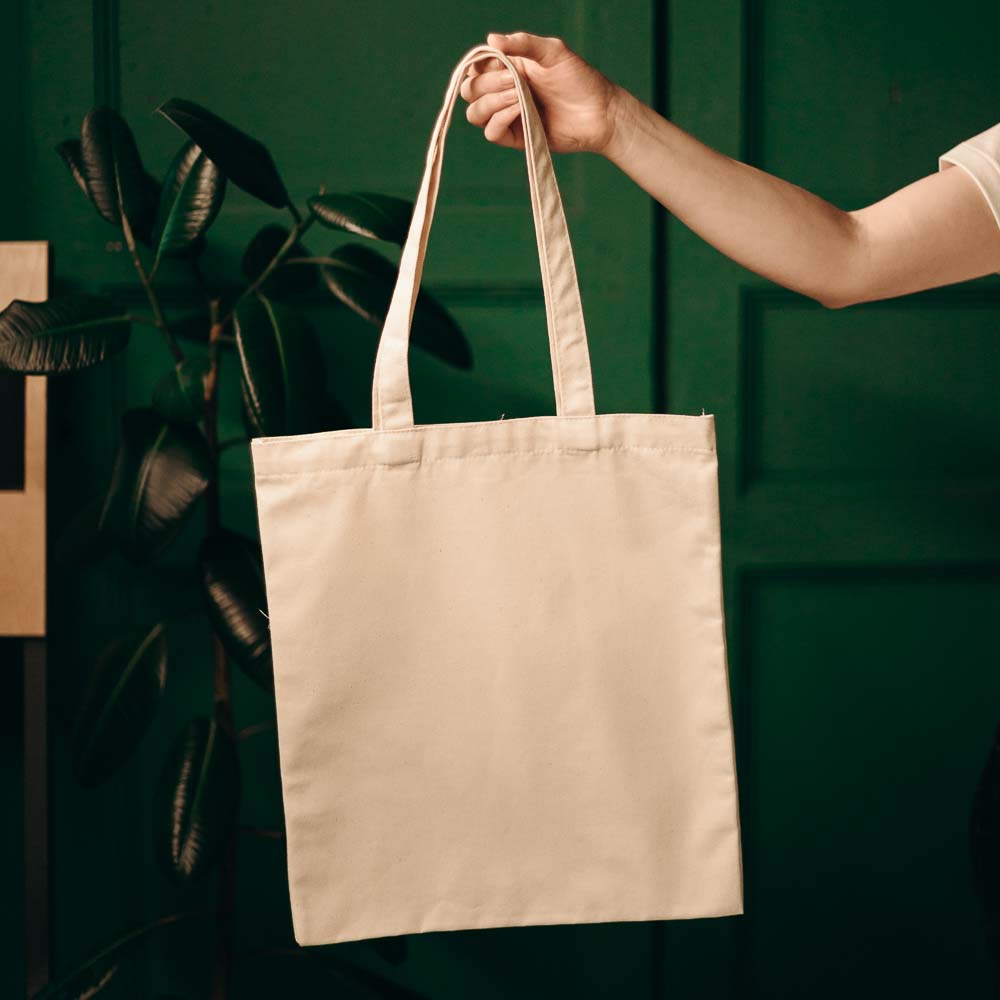
29. Acceptable ID
The legal drinking age is 18 years old in New Zealand and you may be asked to show your ID to prove your age when buying alcohol.
The only forms of ID that are accepted are your passport, a valid New Zealand driver license and the Kiwi Access Card (previously known as the 18+ Card). So, if you are heading out to buy alcohol from a store or ordering from a restaurant, you may want to have your passport with you.
If you are staying in New Zealand for a while, it may be worth getting a Kiwi Access Card instead so you can keep your passport safe.
30. Wi-Fi Can Be Mixed
Wi-Fi in New Zealand may not be as good as what you’re used to back home. Free Wi-Fi in city cafes is usually decent but cheaper accommodations can be slow and may only be for a small amount of data.
The nicer hotels generally have good Wi-Fi but don’t be surprised if it varies from place to place. Sometimes it’s worth paying a little extra for good Wi-Fi.
Some remote areas don’t have access to a network. So, if you’re heading into these areas, such as Milford Sound, be sure to download any maps before you go.
31. Consider Getting a SIM Card
If staying connected is important, you may want to consider getting a New Zealand sim card for your phone. If you plan on sharing your epic adventures on social media and relying on Google Maps to navigate, consider choosing a plan with a lot of network data. You can purchase New Zealand SIM cards at the airport.

32. Plan More Time Than What Google Says
New Zealand highways are often single-lane winding roads outside the main cities and it’s unlikely you’ll be traveling at the maximum speed limit for the entire journey. And even if you could, it may not be the speed you are comfortable doing.
It’s fair to say, it usually takes a little longer to cover the same distance compared to other countries. Plus, I always recommend leaving extra time to pull over and enjoy the scenic stops along the way.
Sometimes Google will take you on the shortest route rather than the easiest and you may end up on some gravel farm or logging road. If you’re traveling to remote areas, just double-check the directions are sticking to the main highways.
33. New Zealand is Expensive
Be prepared for sticker shock. The prices for things such as food and drink are likely to be higher than what you may be used to at home. If you’re traveling from the United States, UK or Europe you’ll at least have the exchange rate from a stronger currency on your side.
Here are some ways to save during your stay:
- Cook some of your own meals . Pak n Save, Countdown and New World are supermarkets you’ll find in the main cities and towns around New Zealand. Pak n Save being the cheapest.
- Check gas prices . Gas prices vary, gas stations at supermarkets or outside of the main cities tend to be cheaper. Just be sure to fill up before heading into remote areas such as Milford Sound. There can be long stretches of driving between gas stations.
- Take advantage of free activities : New Zealand has many free activities, such as hiking, walking tours, and visiting museums. National Parks and beaches all have free access. Take advantage of these to save money and experience local culture.
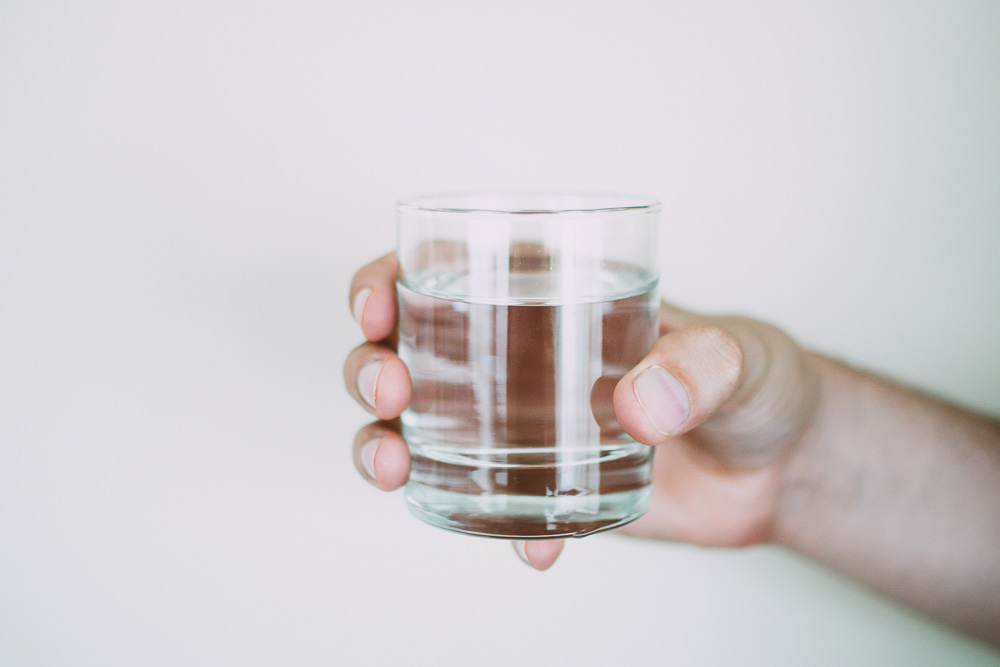
34. You Can Drink The Tap Water
New Zealand water is safe to drink and you can fill your water bottle up from the tap. I think it tastes pretty good too.
Many parks and walkways have water refill stations. So bring along your reusable water bottle. In fact, some of the rivers in Milford Sound are so pure you can fill your water bottle up straight from the source. Local tour guides will show where it’s safe to do this.
Plus, not having to buy bottled water is another great way to save money.
35. Power Points and Voltage
New Zealand uses Type I plugs for wall sockets which are the same as Australia and the Pacific Islands, and the voltage is 230/240 volts (50Hz). Some of the things you need to plug into the wall for power, such as laptops with a dual voltage power supply, you can use with a decent plug adaptor (a worthwhile investment).
If you’re bringing appliances (such as standard hair dryers) from countries where the voltage is lower, such as the USA and Canada, check that your appliance clearly states it is safe for use up to 240 volts. If not, you will need to use a voltage converter/transformer.

Wrapping Up: Travel Tips New Zealand
There you have it, our top New Zealand travel tips! Visiting New Zealand for the first time is an exciting experience. With so much to see and do, it’s a destination that will leave you with memories to last a lifetime. These top tips for traveling in New Zealand will help you prepare and enjoy your time in this beautiful country. Happy planning and safe travels!
Travel Planning Guide
🚗 Where should I book my rental car?
Renting a car is one of the best ways to get around New Zealand. Public transportation can only get you so far, even in the cities. I always rent with Discover Cars , which checks the prices of all major rental car companies, so you get the best rates.
🚐 What about a campervan?
Renting a campervan is a fantastic way to experience the more remote areas of New Zealand. I really like JUCY because they have a big range of vehicles and locations around the country, which offers more flexibility with pick-up and drop-off. I also like Motorhome Republic , which compares all the campervan options available in NZ.
🎟 Where should I book my tours?
Tours are a great way to experience New Zealand’s top attractions while learning about the area and culture through local guides. We always use Viator and Get Your Guide to find the best tours.
🛏 What’s the best way to book my accommodations?
For hotels and vacation rentals, Booking.com or Expedia.com are the best sites. You can also book through TripAdvisor. If you’re considering renting a house instead, try VRBO which often has good deals.
🛩 What’s the best site to buy flights to New Zealand?
For finding the best deals on flights to New Zealand from around the world, I recommend Kayak.com .
Like this article? Save it on Pinterest so you can find it again.
FOLLOW US on Pinterest and Facebook for more New Zealand travel inspiration and tips!

YOU MIGHT ALSO LIKE

How to Spend a Weekend in Auckland: The Perfect 2-Day Itinerary

10 Best Cruises in Milford Sound

Top 21 Foods in New Zealand You Must Try

Queenstown 3 Day Itinerary: How to Spend 3 Days in Queenstown, New Zealand
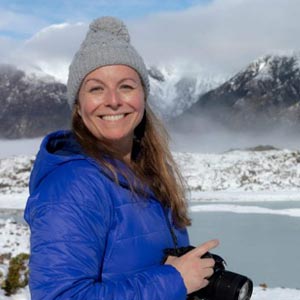
Heather is a travel enthusiast living in New Zealand with her family. She writes about living in and enjoying travel to New Zealand.
Leave a Reply Cancel reply
Your email address will not be published. Required fields are marked *
Save my name, email, and website in this browser for the next time I comment.

New Zealand Travel Guide
Looking for an in-depth New Zealand travel guide ?
Then you’re in the right place!
A trip to New Zealand holds a top spot on the bucket lists of many travelers around the world. From incredible views to outdoor adventures to vibrant cultural offerings, New Zealand makes for a once-in-a-lifetime trip that you won’t soon forget.
With about 600 islands to explore, there are tons of ways to experience New Zealand and thousands of different itineraries you can take, whether you’re setting out on a road trip of the North and South Islands or cruising through the archipelago.
Not sure where to start? We’ve got you covered!
Getting out in nature is one of the top activities for travelers to New Zealand and the country is home to tons of national parks where you can explore the great outdoors.
Looking for some of the country’s most gorgeous beaches? Head to Abel Tasman National Park on the South Island coast, where you’ll find golden shores, towering waterfalls, and tons of great trails — including some of the best New Zealand hikes out there!
The park is also a top spot for mountain biking with trails like the Gibbs Hill Track.
At Fiordland National Park , you can explore a series of gorgeous alpine lakes and forests by water, land, or air. The Milford Track in particular is considered one of the best hikes in the world with tons of great sights from waterfalls to glowworms.
And fans of Lord of the Rings will want to check out Tongariro National Park on the North Island. The park is home to Mt. Ngauruhoe, a 7,516 ft. high stratovolcano that was used as the infamous Mount Doom in the film trilogy.
For more incredible mountain views, head to Aoraki / Mount Cook National Park, home of the highest peak in the country. The mountain itself may not be for the faint of heart but there are tons of hiking trails around the park that cater to all skill levels.
While visiting New Zealand, you’ll definitely want to learn more about the culture of these storied islands. You’ll find tons of opportunities to engage with the native Maori culture throughout the islands, from museums to artisinal boutiques to cultural demonstrations.
Looking for day trips from Rotorua? Consider visiting the Ohinemutu Maori Village, a historic town with traditional Maori architecture, hot pools, and impressive ships.
You can also join in on a traditional hangi feast in several places throughout the country. Here, you’ll enjoy a classic meal of fish, kumara (sweet potato), and other local foods cooked in a pit dug in the ground for a delicious, smoky flavor.
These feasts also usually feature cultural performances of Maori music and dance. This is one expereince you won’t want to miss!
Keep reading to dive into resources that will help you with planning a trip to New Zealand in Oceania .
Note: This ultimate guide to New Zealand travel contains affiliate links to trusted partners!

New Zealand Map
Use this New Zealand travel map to begin planning your trip to this incredible country!
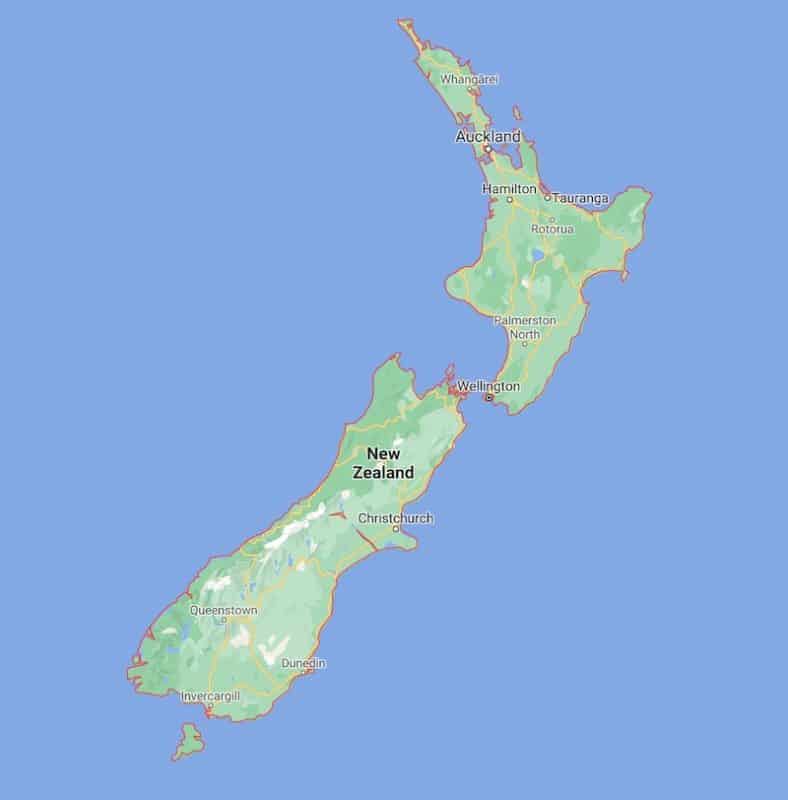
Click here for an interactive Google Map version of the above graphic.
New Zealand Adventure Travel
Looking for a New Zealand hiking guide or adventure travel tips? These posts can help!
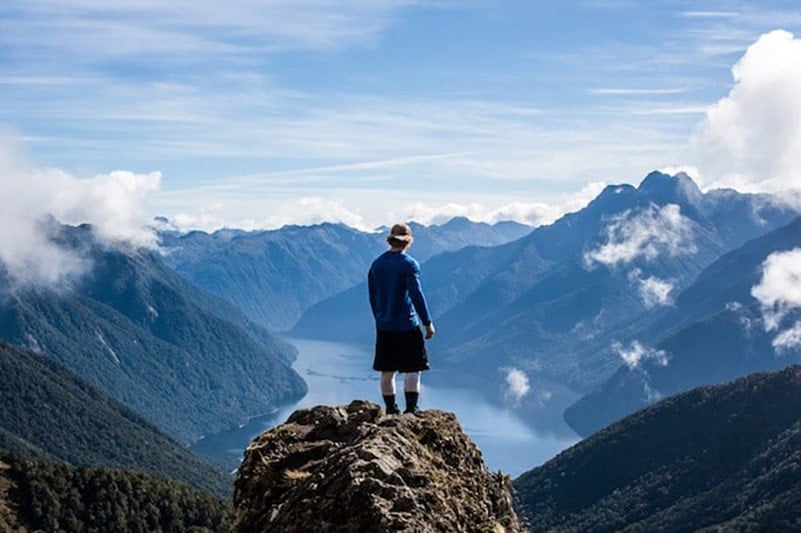
12 Best Hikes In New Zealand You Shouldn’t Miss
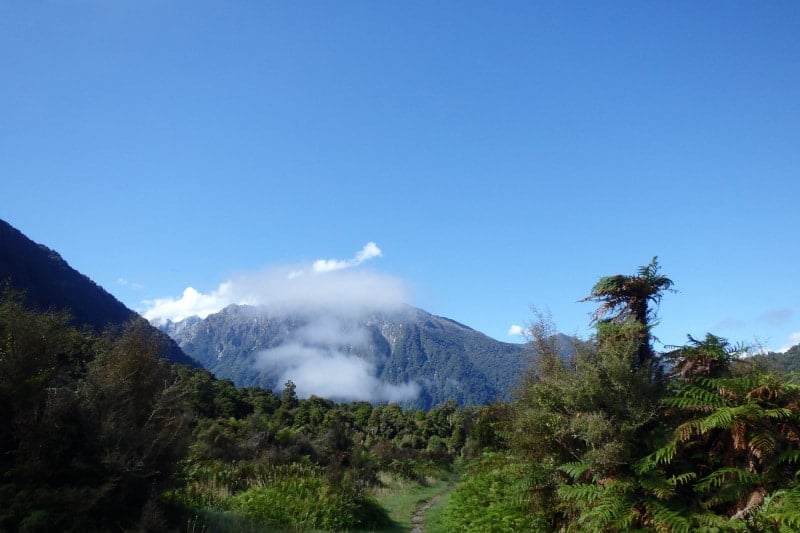
How to Hike New Zealand’s Copland Track to Welcome Flat Hut
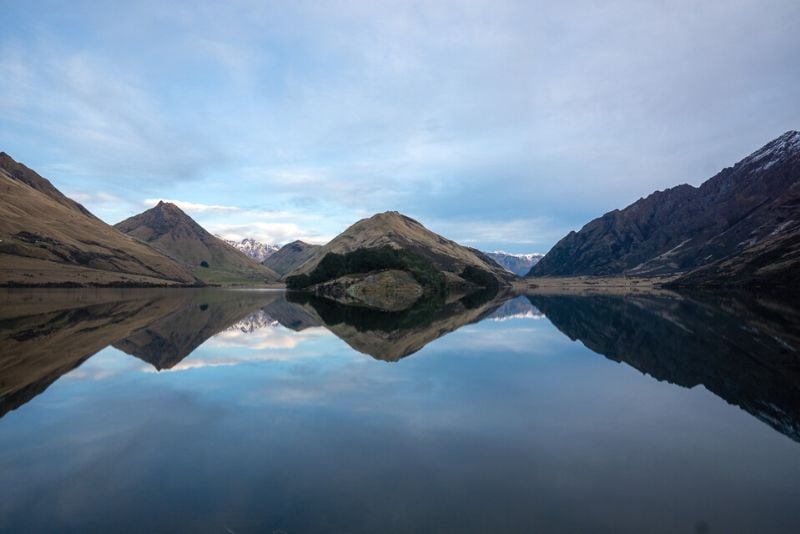
16 Best South Island New Zealand Hiking Trails
Solo Travel In New Zealand
Traveling alone in New Zealand is an amazing experience!
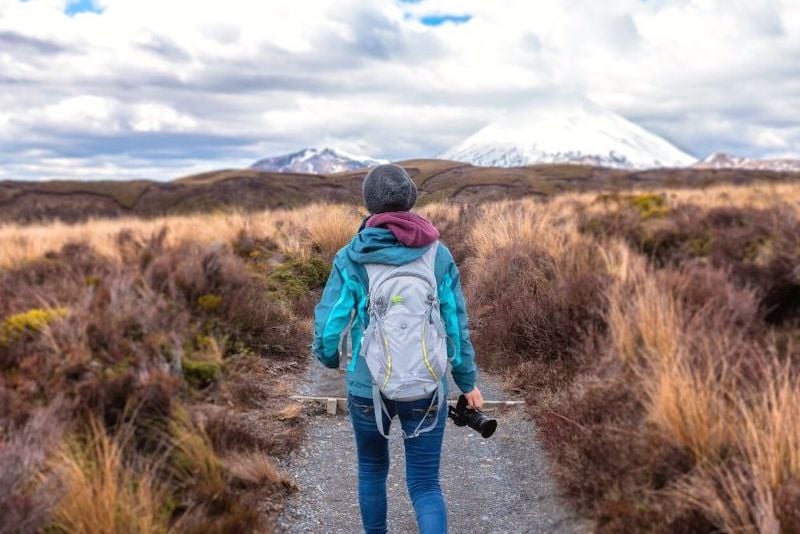
How To Plan A Solo Trip To New Zealand (Ultimate Guide!)
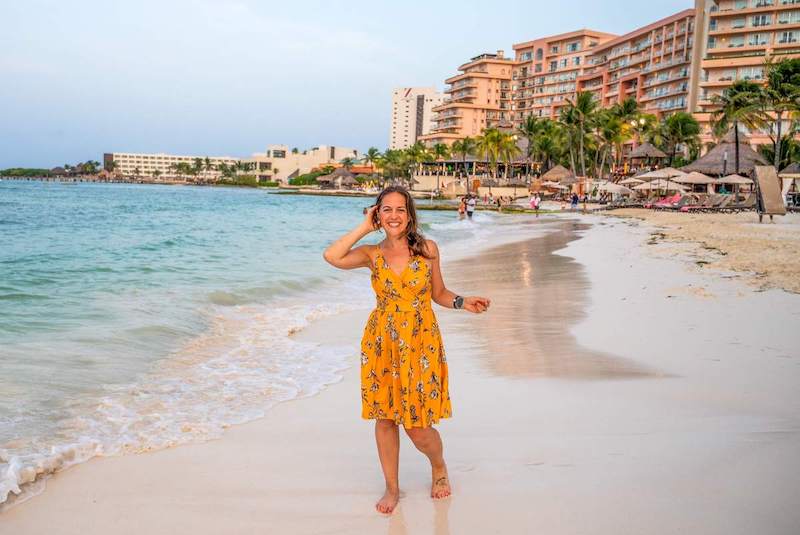
20 Best Beach Destinations For Solo Female Travelers
Best Tours In New Zealand
Explore local culture with a New Zealand tour guide through these unique excursions:
- Doubtful Sound Wilderness Day Cruise from Manapouri
- Auckland Dolphin and Whale Watching Eco-Safari Cruise
- Milford Sound Sightseeing Cruise with Scenic Round-Trip Flight from Queenstown
- Franz Josef Heli Hiking Guided Tour
- Lake Wakatipu Scenic Catamaran Cruise from Queenstown
Renting A Car In New Zealand
The best way to travel around New Zealand is undoubtedly by car!
Need a rental car for your New Zealand trip?
Use Discover Cars to quickly compare your car rental options.
New Zealand Hotels
Click here to browse the best New Zealand travel hotels!
Prefer self-contained stays?
Click here to check out unique local rentals!
You can also use this map to search for local stays:
New Zealand Travel Insurance
It doesn’t matter if you’re traveling solo or with a group on a New Zealand tour. When visiting New Zealand — or any other country in the world — make sure to get travel insurance to protect your health and safety.
In my opinion, the best travel medical insurance for travelers is SafetyWing as they’ve got a large network and offer both short-term and long-term coverage — including coverage if you’re traveling for months as well as limited coverage in your home country).
Additionally, SafetyWing is budget-friendly and offers $250,000 worth of coverage with just one low overall deductible of $250.
With coverage, you’ll have peace of mind as you embark on your New Zealand travel itinerary.
Click my referral link here to price out travel insurance for your trip in just a few clicks .
New Zealand Travel Guide FAQ
Okay, now let’s answer some common Oceania travel questions that specifically pertain to traveling in New Zealand .
Q: What are the best things to do in New Zealand?
A trip to New Zealand is all about taking in Mother Nature’s beauty. The country is full of opportunities for outdoor adventures , from white water rafting to bungy jumping to hiking some of the most beautiful trails in the world. You’ll absolutely want to have a few New Zealand hikes on your itinerary — like the epic Copland Track to Welcome Flat Hut !
Hiking enthusiasts will definitely want to visit Queenstown , known as the “adventure capital of the world”. Trek famous South Island hiking trails like the Queenstown Hill Walking Track, the Moonlight Track, or Jack’s Point. Whatever your level of hiking skill, there’s a trail for you.
On Milford Sound , you’ll find some of the most gorgeous fjords in the Southern Hemisphere. Explore the Sound and the surrounding mountains by kayak, boat cruise, or even a scenic flight.
In Northland , you can enjoy gorgeous subtropical beaches and seaside towns. Check out some of the local marine life on a dive or just catch some rays and watch the surfers do their thing at spots like 90 Mile Beach.
You also can’t pass up any opportunity to experience the culture of New Zealand during your trip.
In Rotorua , you can learn more about the Indigenous Maori culture while soaking up the health benefits of the local hot springs. Take in a cultural demonstration at the Tamaki Maori Village , featuring traditional dances and customs (like the famous Haka) and enjoy a hangi feast. You can even stay overnight in a traditional wharemoe (sleeping house) for a truly immersive experience.
The country is also home to tons of great museums that tell New Zealand’s story. The Auckland Museum in Auckland features tons of Aboriginal art as well as artifacts from the country’s long history.
Of course, any Lord of the Rings fan will want to visit some of the locations featured in the famous film trilogy.
The Hobbiton Movie Set in Waikato is probably one of the most popular LOTR attractions, featuring a 1,250-acre re-creation of The Shire, home to Bilbo and Frodo Baggins. See if you can fit in one of the tiny Hobbit homes and enjoy a pint at the Green Dragon Inn.
You can also visit the Weta Cave Workshop in Wellington , where props, costumes, and creatures from films like Lord of the Rings , Avatar, and District 9 are created by some of the most talented creators in the world. You can even take a special effects makeup class and try your hand (pun intended!) at creating realistic-looking wounds for the camera.
Q: What is the best month to visit New Zealand?
New Zealand’s summer season (running December through March) is widely considered the best time to visit. The weather is perfect for outdoor activities during this time, with warm temperatures and sunny days.
You can expect temperatures in the 50s and 60s Fahrenheit throughout the rest of the year, making New Zealand a great place to visit year-round.
The South Island does see some snow in the winter months (June through September), making it perfect for skiers.
Q: How much should I budget for a trip to New Zealand?
The average traveler spends about $129 USD per day in New Zealand on accommodations, transportation, food, activities, and other travel expenses.
Your biggest expense will likely be your flights to and from the country, which can vary in cost depending on your departure city. Keep an eye on flight aggregator sites like Kayak and keep your plans flexible to get the best deal.
Q: Where should I go for my first trip to New Zealand?
A great place to start on your first trip to New Zealand is Auckland , the country’s largest city. You’ll likely end up flying into Auckland Airport as it is the largest airport in the country, so the city makes a great jumping off point for any tour of New Zealand.
Aside from it’s metropolitan vibe, there are tons of natural wonders to explore in the Auckland area. Take a day trip out to Rangitoto Island, a voclanic island with tons of great hiking trails and lava fields to explore.
You can also hike Mount Eden, a dormant volcano offering incredible views of downtown Auckland.
Sailing enthusiasts will want to check out the yachts and boats at Viaduct Harbour, a lively marina that’s also home to some of the city’s best restaurants and bars. The Hobbiton Movie Set is also an easy day trip from Auckland and a must-see for Lord of the Rings fans.
Located on New Zealand’s North Island, Rotorua is the place to go to see some of the beautiful sights the country has to offer and experience Maori culture first-hand.
There are tons of opportunities for adventure in the Rotorua area, from stand-up paddleboard tours on Lake Rotorua to tree walks in the redwood forests. With so many things to do, you won’t have to worry about getting bored!
Worn out from so much activity? Head to one of the local hot springs for a dip in the healing waters and a classic mud treatment that will leave your skin feeling like new.
There are also tons of ways to experience Maori culture in Rotorua as well, from cultural tours to ancient archeological sites to traditional feasts and performances. Rotorua truly has definitely something for every kind of traveler.
Wellington , the country’s cultural and political capital, is also a great place to visit on a first-time trip to New Zealand. The city has a lively arts scene and is home to New Zealand’s film industry, making it the perfect spot for culture-minded tourists.
Wellington is also home to the Museum of New Zealand Te Papa Tongarewa, a large (free!) museum featuring exhibitions on the country’s natural history, Maori culture, art, and more. If you want to dive into the story of New Zealand, this is definitely the place to go.
Just an hour outside of the city you’ll find Wairapapa , one of the top wine regions in the country. You can book a tour to hit a few vineyards in one day or explore the region by bike. Just be sure to bike responsibly after all those wine tastings!
Q: What should I avoid in New Zealand?
As you would when visiting any other country, avoid disrespecting the locals. This is particularly important if you are interacting with the native Maori people at all during your trip. Be aware of lands that are sacred to the Maori people and be particularly respectful when visiting these sites.
It also helps to learn a few Maori phrases before or during your trip — you’ll often see signs written in both English and Maori throughout the country.
Also, be aware that New Zealand and Australia , while often grouped together by travelers, are two very different countries. You’ll see this first-hand if you get a chance to visit both countries. You won’t make any friends in New Zealand by comparing the country to her neighbor, so keep any comments about Australia to yourself.
Considering the digital nomad lifestyle? Don’t expect to get a ton of work done in New Zealand, particularly outside of the cities.
Internet service throughout the country is spotty at best, particularly in the countryside. Don’t rely to heavily on digital maps and other services to get around either. Instead, go old school and bring maps or print out directions when you can.
And if you’re expected to check in with work or folks back home at all during your trip, let them know you might not be as easy to reach as usual, particularly when you’re out in more remote areas.
Hate being limited to a short (or ridiculously long) wine list when dining out? Avoid being limited to a restaurant’s wine selection by bringing your own bottle.
Most restaurants in New Zealand allow you to bring your own wine in for a small corkage fee. This will save you some cash on your dinner bill and ensure that you get to drink wine you actually like.
Tipping also isn’t the norm in restaurants in New Zealand. You can feel free to tip for particularly exceptional service, but know that it’s not expected.
Q: Is New Zealand safe to travel?
New Zealand is widely considered one of the safest countries for travelers. Violent crime is extremely rare and while petty crime like pickpocketing does happen in popular tourist areas like Auckland, it’s relatively uncommon. As in any destination, it’s good to always be aware of your surroundings and keep any valuables close to you and out of view to avoid pickpockets .
Q: How long can a tourist stay in New Zealand?
Travelers visiting New Zealand on a NZeTA (New Zealand Electronic Travel Authority) can stay for up to three months in one visit (six months for visitors from the United Kingdom) and no more than six months in a 12-month period. Travelers on a Visitor Visa can stay in the country for up to nine months in an 18-month period.
Q: Do I need a New Zealand travel visa?
Travelers from the United States , Canada , the United Kingdom and most countries in Europe (specificially the European Union) do not need a visa to enter New Zealand.
Visitors from visa waiver countries do need to obtain a NZeTA (New Zealand Electronic Travel Authority) before traveling to New Zealand, though. You can request an NZeTA online on the New Zealand Immigration website or via the NZeTA app ; the application costs NZD $12 ($8.34 USD) if you apply online or NZD $9 ($6.26 USD) if you apply on the app.
You’ll also pay NZD $35 ($24.33 USD) for an International Visitor Conservation and Tourism Levy at the same time as your NZeTA. Visitors from countries not on the visa waiver list will need to apply for a visitor visa before traveling to New Zealand.
It’s recommended to view your country’s New Zealand International Travel Information page for the most up-to-date information on entry and exit requirements. You can also contact the New Zealand Consulate-General.

Q: Where is New Zealand?
New Zealand is an island country featuring numerous smaller islands and two main islands, including the the North Island (Te-Ika-a-Maui) and the South Island (Te Wai Pounamu), which are separated by the Cook Strait.
The country is located in the South Pacific Ocean in the region of Oceania.
Q: Are credit cards accepted in New Zealand?
Credit cards — particularly Visa and Mastercard — are widely accepted around New Zealand, though it is always wise to carry some cash for smaller establishments and in case of emergency.
Q: Can you drink the tap water in the New Zealand?
It is safe to drink the tap water in New Zealand, though do double check with your hotel to be safe.
Q: What is the local currency in New Zealand?
The local currency in New Zealand is the New Zealand dollar, which is also sometimes known as “the kiwi”.
What would you add to this New Zealand travel guide?

Enjoyed this ultimate New Zealand travel guide? Pin it for later!
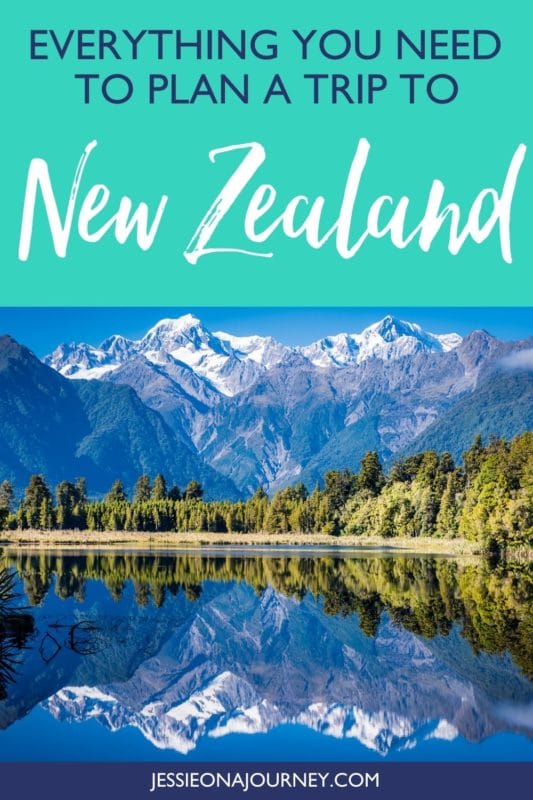
- facebook-official
- youtube-play
- pinterest-circled
The Complete Travel Guide to Auckland 🏙️ [2024]
Nz pocket guide is 10 years old. thank you for trusting us with your trip for over a decade, how to plan the best trip to auckland, new zealand.
For many travellers visiting New Zealand, it all starts in Auckland . New Zealand’s largest city covers a vast area well beyond its famous city skyline defined with the Southern Hemisphere’s tallest building, the Sky Tower . The region encompasses around 26 regional parks with lush forest, rolling farmland and sandy beaches. Just off the coast is the Hauraki Gulf , famous for its volcanic islands each with its own unique features. So whether you’re an urbanite or a country bumkin, there are experiences and accommodations to suit a huge range of travellers in Auckland.
We’ll go through our top travel tips, activities and hotels for several travel styles in this complete travel guide to Auckland.
Common Questions About Auckland
We’re not messing around with this travel guide to Auckland; here are the most common questions travellers have about visiting.
What is Auckland Well Known For?
Auckland is known for being the most populated city and region in New Zealand with around 1.7 million people, notably more than the entire South Island. The city is also known as “The City of Sails” due to its access to both the Hauraki Gulf and Tasman Sea and its abundance of sailing yachts and marinas.
Where is Auckland Located?
Auckland is the second northernmost region of the North Island , New Zealand.
What is the Weather Usually Like in Auckland?
Auckland has a mild climate with its fair share of sunny and rainy spells. The daily average temperature is 15.2°C /59.36 ° F, while the yearly average rainfall is 1,284mm /50.6″. Find out more in What is the Weather Like in Auckland?
When is the Best Time to Visit Auckland?
There’s never a bad time to visit, but if you’re looking for desirable weather or specific festivals/events, check out The Best Time to Visit Auckland .
How Do You Get to Auckland?
Auckland is home to New Zealand’s largest international airport. Find out more about connecting flights to Auckland in A Beginner’s Guide to Getting to New Zealand . The city has a vast public transport network as well as vehicle rentals. Find out more in Public Transport in Auckland and The Best Car Rental Companies in Auckland . Auckland is on New Zealand’s main highway, State Highway 1, and also has train connections with Hamilton and Wellington .
Is Auckland a Beautiful City?
Auckland’s beauty is in its natural features, such as turquoise harbour waters, volcanoes and islands. Its architecture is relatively modern with the occasional example of innovation. As a relatively new city, it lacks historical charm.
What to Do in Auckland
Everything about Auckland is huge, from its iconic Sky Tower piercing the sky to the sprawling landmass making it the largest city in the country. Add to that the list the fact that there’s so much to do in Auckland and you can start to feel a little overwhelmed.
The Top Experiences in Auckland
If your Auckland visit means staying in the city centre, then follow our One Day in Auckland: City Walking Tour Itinerary . That way, you can see highlights such as the Sky Tower , Auckland Domain , Mt Eden , the Auckland Museum and Auckland Art Gallery all in one day.
But some of the top experiences in the city centre and region include:
- Climb through lava caves on Rangitoto Island
- Get the best views of the city from Mt Eden
- Snorkel or clear kayak at the Goat Island Marine Reserve
- Take a trip to the waterfalls and black sand beaches of the Waitakere Ranges .
Find out more about these experiences and others in the 20 Best Things to Do in Auckland . Or do something a little different by doing the 10 Alternative Things to Do in Auckland .
If you have more time in Auckland to explore the exciting region surrounding the city, then let us guide you to our Auckland activity articles:
- 10 Best Art Galleries & Museums
- 10 Best Walks
- 5 Best Places for Shopping
- Top 10 Natural Attractions
- 8 Best Cultural Experiences
- 9 Best Adrenaline Activities
- Top 20 Golf Courses
- Mountain Biking Guide
- 20 Parks You Can’t Miss
- The 10 Best Islands to Visit
- The Best Day Trips .
Rainy Day Activities
It’s no secret that it rains in Auckland. If you find your trip coinciding with too much liquid pouring from the sky, then try these wet weather activities:
- Learn about New Zealand’s connection with the ocean at the New Zealand Maritime Museum
- Hit the indoor ski slope, Snow Planet
- Have an ice cream masterpiece at Giapo …
… And much more that we mention in the 20 Things to Do on a Rainy Day in Auckland .
Things to Do at Night
At dusk, the Auckland night scene is just getting started:
- Hit the clubs and bars, such as those listed in The Guide to Auckland Nightlife
- Do sunset kayaking to Rangitoto with Auckland Sea Kayaks (more info on Viator and Klook )
- Go to an Auckland Night Market …
…, As well as all of the 10 Things to Do in Auckland at Night .
Where to Stay in Auckland
Aside from our top recommendations listed beside this complete travel guide to Auckland (or below, if you’re on mobile), we’ve compiled the best accommodations based on price, suitability for families or couples, as well as more premium offerings. What’s more, each article is written by real people rather than robots!
- The 50 Best Accommodations
- 20 Best Hotels
- 20 Best Budget Accommodations
- 20 Best Luxury Hotels
- 20 Best Boutique Accommodations
- 30 Best Backpacker Hostels
- 10 Best Family Accommodations
- 21 Most Romantic Accommodations
- 10 Best Self-Catering Accommodations
- Where to Camp and 10 Free Camping Spots
- Auckland City : A Guide to Cheap Long-Term Accommodation
- Auckland Region : A Guide to Cheap Long-Term Accommodation
Stay at the President Hotel Auckland
For one of the best-value stays in the city, set your sights on the President Hotel Auckland . The three-star hotel offers affordable yet appealing rooms, suites and units, some complete with kitchen facilities – all in the heart of Auckland Central. Enjoy complimentary WiFi and even a cooked breakfast if booked directly! Check out deals on the President Hotel Auckland at cpghotels.com .
Where to Eat in Auckland
Auckland represents a huge array of cultures and, therefore cuisines. The food scene is so vast that it’s almost dizzying, so take a look at The Food Guide to Auckland: Places to Eat & Food Tours to check out some of the highlights. To incorporate foodie experiences into your trip, discover more about the Auckland wine-making region, indulge in fine dining experiences, check out creative markets and much more.
The Best Restaurants in Auckland
- One Tree Grill (9 Pah Road, Epsom)
- Kazuya (193 Symonds Street, Eden Terrace)
- Harbourside (Ferry Building Level 1/99 Quay Street, Auckland CBD)
- Cotto (375 Karangahape Road, Auckland CBD)
- Teed St Larder (7 Teed Street, Newmarket).
Learn more about these eateries and more in The Food Guide to Auckland .
Things to Do for Foodies
- Tour wineries and vineyards of Waiheke Island
- Browse Auckland’s vibrant farmers’ markets
- Join a culinary tour of Auckland CBD with The Big Foody
- Do a craft beer tour with Bush & Beach
- Combine sailing and sustenance on the Auckland Harbour Dinner Cruise .
Find out more about each activity and more in our 10 Best Foodie Experiences in Auckland .
Auckland for Budget Travellers
New Zealand’s largest city might not have a reputation for being a budget-friendly city, but with plenty of cheap accommodations and inexpensive activities for those in the know, you can still have an amazing experience in Auckland without breaking the bank.
The city has a range of natural features and parks to discover for free between the huge Auckland Domain and the volcanic cones peppering the city. In fact, there’s so much to discover across the region that we have multiple guides for budget travellers. Check out Auckland City Centre – Guide for Backpackers and Auckland – Guide for Backpackers . Additionally, check out The Guide to Auckland on a Budget .
Things to Do on a Budget
- See Auckland from the top of the Sky Tower (more info and book tickets on Viator and Klook )
- Watch a free movie at Silo Park (in summer )
- Climb Mt Eden for amazing views
- Take a cheap ferry to Devonport
- Walk in the forest… in Auckland Domain .
Find out more about each activity and much more in 20 Free & Cheap Things to Do in Auckland .
Where to Stay on a Budget
Auckland is a city of motels, cheap hotels and backpacker hostels. Check out some of our top recommendations in 20 Best Budget Accommodations and 30 Best Backpacker Hostels .
Auckland for Luxury Travellers
Fine dining, luxury brand shopping, winery-hopping, golf course sampling and scenic flights… It’s all part of the luxury experience in Auckland. Whether you’re in Auckland to celebrate a special occasion or simply prefer to travel in style, you’ll find everything you need to organise a luxurious getaway to Auckland in The Luxury Guide to Auckland .
Luxury Experiences
- See the city from spectacular heights on a seaplane tour
- Rejuvenate with an indulgent spa treatment
- Hit the water for a lunch cruise or on an America’s Cup Yacht (on Viator and Klook )
- Try your luck at the vibrant SkyCity Casino
- Discover historical and cultural sites on a Maori culture tour (on Viator and Klook ) .
Find out more about each experience in our 10 Best Luxury Experiences in Auckland .
Luxury Accommodation
Make the most of your stay in Auckland, as it is the only city in New Zealand offering a variety of five-star hotels. Find out more in our 20 Best Luxury Hotels in Auckland .
Auckland for Families
Taking the little ones to the big city can always be a daunting experience, but with fantastic museums, family attractions and numerous day trips, your family is sure to have a blast. Whatever the weather, there’s always something to do in Auckland. Get inspired by The Family Guide to Auckland .
Things to Do with Kids
- Wise up about the world of technology at the kid-friendly MOTAT museum
- Learn about the Kiwi farming lifestyle at Sheepworld in Warkworth
- See the wild and wonderful birds of New Zealand on Tiritiri Matangi Island
- Watch a Maori cultural performance at the Auckland Museum (available on Klook and KKday )
- Take a family road trip to one of Auckland’s regional parks .
Find out more about each experience in our 20 Things to Do in Auckland with Kids .
Family-Friendly Accommodation
Family rooms are easy enough to come by in Auckland, with options to suit a range of styles and budgets. Check out our top picks in our 10 Best Family Accommodations in Auckland .
Auckland for Couples
Auckland often represents the start or the end of a honeymoon in New Zealand, so make the most of your time here with some of the city’s most romantic activities. Spend the day exploring one of the islands in the Hauraki Gulf , treat yourself to a romantic cruise seeing marine mammals, or enjoy a quiet dinner with panoramic views atop the Sky Tower . Get more inspiration for your romantic getaway with The Honeymoon & Romantic Getaway Guide to Auckland .
Romantic Things to Do
- Take a ferry to one of Auckland’s nearby islands
- SkyWalk and/or dine in a revolving restaurant at the top of the Sky Tower
- Discover Auckland’s breathtaking beaches
- Experience a whale and dolphin cruise (more info on Viator and Klook )
- Learn something new at Auckland’s museums .
Sounds like you? Check out the complete list in our 10 Most Romantic Things to Do in Auckland .
Where to Stay for a Honeymoon or Romantic Getaway
From luxurious hotels to boutique hotels to attractive budget hotels, Auckland provides plenty of romantic accommodations for couples. Check out some of our top picks in the 20 Best Romantic Hotels in Auckland .
Auckland Accommodation
- President Hotel Auckland
- Ohtel Auckland
- SkyCity Hotel Auckland
- Ponsonby Manor Guest House
- The Sebel Auckland
- Pullman Auckland
- Eden Park Bed and Breakfast Inn
- Nesuto St Martins Apartment Hotel
- Empire Apartments
- Hotel DeBrett
- ibis Budget Auckland Airport
- ibis budget Auckland Central
- Terry & Cindy’s Bed & Breakfast
- Grand Millenium Auckland
- VR Auckland City
- YMCA Auckland
- Kiwi International Hotel
- Auckland City Hotel
- Cordis, Auckland
- Stamford Plaza Hotel
- The Grand by SkyCity
- Spencer on Byron Hotel
- Parkside Hotel & Apartments Auckland
- The Shakespeare Hotel
- Novotel Auckland Airport
- Crowne Plaza Auckland
- Sofitel Auckland
- Jet Park Airport Hotel
- Barclay Suites
- Auckland Harbour Residences
- Attic Backpackers
- Verandahs Parkside Lodge
Find out more about our top picks in The 50 Best Accommodations in Auckland .
More About Auckland
That’s it for our complete travel guide to Auckland but by no means the end of our Auckland travel tips! Check out the following guides for more advice on what to do in the region:
- The Best Day Trips from Auckland
10 Best Things to Do in Orewa
- 10 Best Things to Do in Warkworth
- 5 Best Things to Do at Goat Island Marine Reserve
- 10 Best Things to Do on the Matakana Coast
- 10 Best Things to Do in Leigh
10 Best Things to Do in Waiuku
- 5 Best Things to Do in Piha
- 5 Best Things to Do in Wellsford
- 5 Best Things to Do in Pukekohe
- 5 Best Things to Do in Muriwai
- 5 Best Things to Do in Howick & Half Moon Bay
Finally, plan more of your North Island trip using the North Island in Two Weeks: Road Trip Itinerary or North Island in One Week: Road Trip Itinerary . You’ll also find more advice for planning an epic NZ trip in The Best Travel Guide to New Zealand .
The information in this guide has been compiled from our extensive research, travel and experiences across New Zealand and the South Pacific, accumulated over more than a decade of numerous visits to each destination. Additional sources for this guide include the following:
- Tourism New Zealand (General travel advice - Updated [2024])
- Department of Conservation (Tracks, hikes, campsites and more - Updated [2024])
- AdventureSmart (Know before you go - Update [2024])
- Tiaki Promise (Care for people place and culture - Updated [2024])
- NZ Māori Tourism (Official Māori Tourism platform - Updated [2024])
- Waka Kotahi NZ Transport Agency (Road and transport tips - Updated [2024])
- DriveSafe (Road safety - Updated [2024])
- Council websites and freedom camping maps (Local travel advice region by region - Updated [2024])
- Safe Travel (NZ travel advisories - Updated [2024])
- Tourism Export Council New Zealand (Tourism trade association - Updated [2024])
- TIA (Independent tourism association - Updated [2024])
- Discover Auckland (Regional tourism website)
- Auckland Council (Local council website)
- Hauraki District Council (Local council website)
Our editorial standards : At NZ Pocket Guide, we uphold strict editorial standards to ensure accurate and quality content.
About The Author
This article has been reviewed and published by Laura, the editor-in-chief and co-founder of NZ Pocket Guide. Laura is a first-class honours journalism graduate and a travel journalist with expertise in New Zealand and South Pacific tourism for over 10 years. She also runs travel guides for five of the top destinations in the South Pacific and is the co-host of over 250 episodes of the NZ Travel Show on YouTube.
Was this article useful?
Related posts, auckland suburbs – a complete guide, 6 best things to do in wellsford, the foodie guide to auckland, 6 best things to do in howick & half moon bay, recommended for you, how to get wifi in your campervan in new zealand, new zealand working holiday visa: everything you need to know, the top new zealand events & festivals 🙌 [2024], destinations, travel tips, connect with us, accommodation.
Welcome/Kia Ora By using this website you agree to our Privacy Policy and terms of use within it which includes sponsored posts and affiliate links.
Connect with us
Welcome/Kia Ora! By using this website you agree to our Privacy Policy and the terms of use within it.
© 2024 NZ Pocket Guide. Contact – Disclaimer – About Us – Our Standards
Travel Itineraries | Luxury Travel | Travel Tips
14 Day New Zealand Tour Itinerary | A Complete Travel Guide

If you’re looking to explore all the best that New Zealand has to offer, then this 1 4-Day New Zealand Travel Itinerary is perfect for you. Starting in Auckland , your first stop will be Magical Mangawhai before making your way to the Coromandel Peninsula , after you’ll pass through Taupo . Take a pit stop in Wellington and pop across to Picton to marvel at the beauty the top of the South Island has to offer.
There are so many beautiful spots in New Zealand and two weeks isn’t quite enough to explore it all properly but this 14 day New Zealand Travel itinerary highlights some of the best spots without trying to squeeze too much into your holiday!
There are so many reasons why New Zealand should be at the top of your Travel Bucket List. From its stunning landscapes and gorgeous beaches to its world-class wine and food, New Zealand has something for everyone.
But what really sets New Zealand apart is its incredible culture . The Kiwis are some of the friendliest people on the planet, and they love nothing more than welcoming visitors into their homes. So if you’re looking for an unforgettable travel experience, New Zealand should definitely be at the top of your list.
How to get around New Zealand
Day 1: Arrive in Auckland
Day 2 and 3: Auckland – Mangawhai
Day 4: Mangawhai – Coromandel Peninsula
Day 5: Cathedral Cove and Hahei Beach
Day 6: Hot Water Beach and New Chums Beach
Day 7: Otama Beach, Optio Bay and Crayfish Bay
Day 8: Coromandel Peninsula to Taupo
Day 9: Explore Taupo
Day 10: Taupo to Wellington
Day 11: Wellington to Picton
Day 12: Picton to Nelson
Day 13: Nelson
Day 14: Nelson to Auckland
Best Hotels and Resorts in New Zealand
What is the best time of year to visit new zealand, 14 day new zealand itinerary – summary, share this:.
Quick disclaimer, for this 14 day New Zealand Travel itinerary you are definitely going to want to hire a car . Reason being, some of the BEST places in New Zealand are quite remote which means public transport won’t take you there.
Or it’ll take you some of the way there, and you’ll end up having to get a taxi the rest of the way which will end up hurting your wallet.
Be sure to look into hiring a car before you arrive in New Zealand . There has been a recent influx of tourists post covid (which is super awesome!) but it means some car rental companies are struggling to keep up. So to avoid missing out, best to be prepared.
PS – Useful Travel Resources to use while heading to New Zealand to tick off this 14 Day New Zealand Itinerary
- Book your Rental Car in New Zealand on Discover Cars and RentalCars.com
- Book the best New Zealand Tours at GetYourGuide or Viator
- Book your Accommodation in New Zealand on Agoda or Booking.com
- Get an eSIM by Airalo to stay connected and Save on Roaming Fees
- Sign up for a Priority Pass before flying to New Zealand, and get access to premium Airport Lounges.
- Sign up for a Travel Insurance to enjoy a hassle free vacation in New Zealand.
14 Day New Zealand Travel Itinerary

Pin this New Zealand Trip Planner featuring an exhaustive 2 week New Zealand Tour Itinerary
After arriving in New Zealand’s biggest city, spend a day getting your bearings. Head to the Sky Tower for unbeatable views, take a walk through Auckland Domain and learn about New Zealand’s history at Auckland Museum .
Relax in the sun at the Viaduct for happy hour and grab a bite to eat. There is an awesome array of restaurants to choose from, some of the best in the city.

Auckland | Photo by Sulthan Auliya on Unsplash
If you’re feeling a little bit fancy and want to kick your holiday off right, Soul Bar is a popular choice. For something a bit more laid back try Hello Beasty or White and Wongs, both incredible Asian Fusion restaurants. I’m not exaggerating when I say the food is to die for, especially Hello Beasty. I’d happily eat there any day!
For a slightly cheaper night out Coops is a good option, or Dr Rudi’s is well known for their delicious pizzas.
Wherever you decide to go, you can’t really go wrong at the viaduct!
Start your day with a short drive north to Mangawhai Heads . They don’t call it Magical Mangawhai for nothing and it’s a summer hotspot you definitely want to check out.
Go for a swim at beautiful Mangawhai Beach , explore the quaint shops and cafes in the village and take a walk along the estuary.
In the afternoon, head to Te Arai Point for some surf or relaxation time on the golden sand beaches. Be sure to walk around to the beach to the right of Te Arai, it gives off massive Europe vibes and is so beautiful.

It’s very easy to spend a day or two enjoying the slower pace of Mangawhai beach town. The locals are incredibly friendly and due to Mangawhai’s growing popularity, there are quite a few boutique shops to explore.
Wake up early and drive to the Coromandel Peninsula , you’ll probably end up staying here for 3 or 4 days as there is plenty to do.
In fact you could probably spend your whole two weeks in the Coromandel and be quite content! However this New Zealand Travel itinerary is all about taking you to the best bits, so what hotspots do you need to hit?
Cathedral Cove
Hot Water Beach
Hahei Beach
- New Chums Beach
Crayfish Bay
Otama Beach
That might sound like a lot but luckily Cathedral Cove , Hahei Beach and Hot Water Beach are all pretty close to one another. Same goes for Opito Bay, Crayfish Bay and Otama Beach so you could probably knock out this list in 3 days (4 if you want more time relaxing at each place).
Let’s start with Cathedral Cove , one of New Zealand’s most iconic beaches . This place looks like something straight out of a movie set with its dramatic cliffs and the famous rock archway.

To beat the summer heat (and the crowds) you’ll want to head off early. The best way to get there is by walking. Cathedral Cove is also accessible by boat but walking is definitely the most popular option. With a distance of 2.5 kilometres and a walking time of 1 hour and 30 minutes return, it’s a pretty easy trek and so worth it once you get there!
Along the way, you’ll get some incredible views and there are plenty of photo opportunities. Be sure to swing by Stingray Bay , it’s usually pretty quiet and a real hidden gem.

Stingray Beach
Once you arrive at Cathedral Cove, take some time to explore and swim in the clear blue water. It really is as beautiful as it looks in pictures!
In the afternoon, walk back to Hahei Beach for a spot of sunbathing or swimming. This place is pretty popular due to being another stunning beach and one that is a bit more accessible than Cathedral Cove. However, it’s still worth a visit to see New Zealand’s stunning east coast.

In the morning of your sixth day of this 14 Day New Zealand Travel Itinerary, you’ll want to make your way to Hot Water Beach . This beach gets its name from the natural hot springs that run underneath it and as you can probably guess by its name, it’s a great spot for a hot soak!

All you need to do is dig a hole and voila, you have your very own hot tub! The perfect way to relax after a long day of exploring.
Hot Water beach is only a short drive from Cathedral Cove and Hahei Beach so it’s easy to include in your itinerary before making your way out to New Chums Beach.
Just be sure to go 2 hours on either side of low tide so you can actually access the hot water, this will largely dictate when you’re able to squeeze it into your itinerary.
In the summer months, it’s great to visit in the early morning or late afternoon so you can enjoy the heat of the water. During the day while the sun is beating down you’ll probably want to give it a miss but the beach is still worth a visit if you have time.
After you’ll make your way to Whangapoua Beach as this is where you’ll start the New Chums Beach Walk from. New Chums Beach is New Zealand’s most isolated beach and because of this, it’s also one of New Zealand’s best-kept secrets.
The walk itself should take around 30 minutes. You will pass over some rocks and uneven ground, even a stream right at the start too but it isn’t a difficult walk and most people should be completely fine.
Instead of gunning it straight for the beach once you arrive at New Chums, take the extra time to walk to the top of the lookout. It’s a rather steep climb but the views certainly won’t disappoint, trust me!

New Chums Beach Lookout
After conquering the lookout, make your way to the beach and take some time to relax. New Chums Beach is the perfect place to kick back and really enjoy New Zealand’s beautiful landscape.
Make your way to Kuaotunu afterwards for a central place to stay. If you don’t feel like cooking Luke’s Kitchen has some delicious cuisine to choose from and the restaurant has an awesome laidback coastal vibe.
If you’re lucky and get a table outside you’ll be able to see the sunset. Sometimes live music is played over the weekends in the summer months.
Day 7 is all about relaxing at the beach and they are pretty gorgeous beaches! You’ll be quite happy lounging about and swimming all day.
Start your day off at Otama Beach , it’s a great place for swimming or sunbathing. The pohutukawa trees at the edge of the beach provide some much-needed shade.

Out of the 3 beaches, Otama is the place with the most waves and has a rather steep gradient, perfect for running and diving straight into the ocean. In saying that it is still a very safe swimming beach.
It’s also pretty secluded so if you arrive in the morning, don’t be surprised if you’re the only ones here!
Once you feel like a change of scenery, make your way to Opito Bay . This is the perfect spot if you want to go kayaking or stand-up paddle boarding as the water here is usually very calm.

Lastly, end your day at Crayfish Bay for some incredible views. Located just a short 10-minute walk from Opito Bay it’s definitely not to be missed.

Instead of beautiful golden sand, this unique beach is stony and has some pretty dramatic rock formations to the right-hand side of the bay. Walk round the rocks for some spectacular views of the sparkling blue water.
If you’re feeling brave, there’s a cliff jump down into the water. If you visit in summer you’ll likely see others jumping from the rocks.
There are metal bars mounted into the rocks to help you climb back up after your jump or you can simply swim back to shore.
Whether you jump or not, Crayfish Bay is definitely worth a visit.
It’s time to leave the Coromandel Peninsula and make your way to Taupo.
The journey will take you about 3 and a half hours so best to get on the road early to make the most of your time in Taupo. Matamata is a good halfway point to grab a bite to eat.
Taupo is located in New Zealand’s North Island and is well-known for its incredible scenery and geothermal activity. There are plenty of things to do in Taupo , from hiking and biking to swimming and fishing.

Taupo | Photo by Brandon Weekes on Unsplash
You can also visit the thermal pools or go whitewater rafting on the Waikato River. The activities you choose to do here will all depend on what kind of holiday you’re after.
When it comes to food and drinks, Taupo is definitely the place to be. From fine dining restaurants to trendy cafes, there’s something for everyone in this vibrant town.
There is so much to do in Taupo that you may as well take an extra day to explore at a bit of a slower pace.
During the day drive around the lake and discover unique swimming spots. If you get a chance, I’d recommend hiring a kayak and checking out the Maori Rock Carvings at Mine Bay. It’s a beautiful sight and definitely worth a visit. Of course, it’s amazing spending time on the lake as well cause it is a stunner.
Make sure to take in the stunning views of New Zealand’s North Island from Huka Falls too. The thundering cascade is something that shouldn’t be missed.
Next it’s time to make the trek from Taupo to Wellington . At 4 hours and 40 minutes, it’s nothing too crazy and totally doable within a day.
There isn’t a lot to see on the way down so it’s a good idea to just get on the road and head straight there. Of course stop for a quick toilet break or some food when you need it.

Wellington | Photo by Jil Beckmann on Unsplash
When you arrive in New Zealand’s capital, there’ll be plenty of things to do. From visiting Te Papa, New Zealand’s national museum to checking out the library or chilling at one of the beaches Wellington has to offer.
If you’re into shopping, head on over to Lambton Quay for some retail therapy or Cuba Street for some awesome bars, cafes and street art.
In the morning, catch the Interislander across Cook Strait to travel to the top of the South Island.
Make sure to book the ferry well in advance as over the summer months and particularly over the Christmas break the boats fill up fast. You’re also more likely to get stuck with the less desirable travel times the longer you leave it (think 2am in the morning!).
The ferry will drop you in Picton, a gorgeous little seaside town that people tend to pass straight on through. I recommend spending the night here so you can explore the area and catch one of the incredible sunsets in the evening.
Grab a bite to eat from a nearby cafe or bakery before making your way to Bob’s Bay . Even if it’s not hot enough to swim this picturesque bay is worth a visit.
The walk from the marina is pretty easy, it takes just 30 minutes and is known as the “lower track”. There is an “upper track” you can explore as well if you wish.
Enjoy an afternoon swim at the bay and watch some of the ships coming in. With toilet facilities and a picnic table, it’s got everything you need for a lazy afternoon.
In the evening, make your way down to the marina to watch the sunset. If you’re lucky the sky will turn into a gorgeous array of pinks and oranges. Take a picnic rug with you to sit down and relax on the grass.

Once the sun has gone down, wander around the collection of restaurants at the marina to find a bite to eat. Being a pretty small town there isn’t a ton of choice but you’re sure to find something that tickles your fancy.
Picton is the gateway to New Zealand’s Marlborough Sounds , a stunning collection of islands and waterways that are perfect for kayaking or boat trips. Spend the morning of day 12 doing a cruise through the Marlborough Sounds.

Marlborough Sounds
A cruise is a great option to discover some of the hidden bays and possibly spot some sea life such as dolphins and seals.
As an alternative to doing a cruise, you can also rent bikes and take them around Queen Charlotte Drive which is a fun way to explore the area and get some amazing views of the sounds.
Soon it’ll be time to make your way to Nelson, it’s worth stopping in Blenheim on the way if you’ve got time.
The region is known for its wine so it’d be rude not to try some! Wither Hills, Cloudy Bay and Villa Maria are just some of the top-rated vineyards in the area. Pop in for a glass of wine, or two and enjoy some delicious food.
After lunch, continue driving to the picturesque town of Nelson. This journey will take you through some of New Zealand’s most stunning scenery, so be sure to make some stops along the way.
Nelson is a beautiful town in New Zealand that is known for its wine and stunning scenery. Visit the Abel Tasman National Park for a look at some of the most beautiful coastline in the country.
Spend the morning walking the coastal track, admiring the lush native bush and rugged limestone cliffs. It’s possible to just walk some of the track and then catch a boat back to the start so you don’t need to worry about booking any overnight huts.
Then, in the afternoon head to Kaiteriteri Beach for a refreshing swim. You can also take a walk through the city centre or visit one of the art galleries and museums.
Day 14 sadly means your holiday has come to an end. Catch a flight from Nelson back to the city of Auckland where you’ll farewell New Zealand.
If you have time before your flight, take a stroll around the Wynyard Quarter, New Zealand’s waterfront district. Stop off for a coffee at one of the many cafes in the area before you make your way to the airport.
Your New Zealand adventure may be over, but it’s sure to be an experience that you’ll never forget!
If you are wondering, where to stay in New Zealand, you can simply enter your dates, and hit the search button in the box below, to search and compare prices for the Best Hotels and Resorts in New Zealand, based on your needs.

Photo by Sarah Evans on Unsplash
New Zealand features four distinct seasons, each bringing its own unique set of experiences. The New Zealand summer (December to February) is usually the best time for travellers who are looking for hot weather, long days and plenty of outdoor activities.
Spring (September to November) is a great time for hiking, seeing the incredible New Zealand landscapes in bloom, and spotting some of New Zealand’s wildlife.
Autumn (March to May) is an ideal time for wine tasting, and the cooler temperatures make it a great time for mountain biking or trekking.
Finally, winter (June to August) brings snow-covered mountains, ski resorts and lots of hot thermal springs to explore. No matter which season you choose, New Zealand is sure to be an unforgettable experience.
Day 6: Hot Water Beach and New Chums Beac h
No matter what you decide to do during your 14 days in New Zealand, it’s sure to leave you with unforgettable memories and experiences.
Enjoy discovering the stunning New Zealand scenery, getting up close with some of New Zealand’s unique wildlife, and indulging in New Zealand’s delicious food and wine. New Zealand is sure to leave you wanting more!
Don’t forget to Pin this New Zealand Travel Guide and New Zealand Trip Planner featuring an exhaustive 14 Day New Zealand Travel Itinerary , carefully crafted and curated by a local, which will help you in planning for your trip to New Zealand.

Also, if you like reading the content I create and curate, I will be really thankful if you could take a moment to
LIKE | COMMENT | SHARE and SUBSCRIBE
Also, if you’re on Facebook, I would love to have you as a part of
the Eat Travel Live Repeat Travel Community
Subscribe via Email
Enter your email address to subscribe to theETLRblog and receive notifications of new posts by email.
Email Address
- Kale by LyraThemes.com.
Privacy Overview

Let us inspire your New Zealand travels with local knowledge.
The ultimate NZ guide
Whether this is your first time in Aotearoa New Zealand, or you’re exploring your own backyard, let’s work together to get the most from your travels.
We’ll help you find hidden gems, get practical advice and save money in the process.
Explore our content by location or use the search to find exactly what you’re looking for.
Unmissable New Zealand Locations

Trending information

on Facebook
We are almost ready for our trip to NZ, in just three weeks And, thanks to you and your group, I feel it’s the most well-prepared trip I’ve ever done! Thank you so much! Elena Weinstein
New on the blog
We’re always on the hunt for exciting new activities, attractions and accommodations.
Discover for yourself why we’re considered one of New Zealand’s top travel blogs!

Glacier Country Helicopters Promo Code – Epic Heli Flights from Franz

Millennium Hotels and Resorts: Save on stays across New Zealand!

Trails of Middle Earth promo code: Discounted Lord of the Rings tours by Southern Trails

Save on your stay at Bella Vista Christchurch

Save on Tasman Glacier landings with INFLITE Franz & Fox – Fly the West Coast to Aoraki/Mount Cook

Ripple Rotorua promo code – Save 10% on this gorgeous motel
We’re here for you.
If you find yourself overwhelmed while planning your NZ travels, don’t panic.
We offer private consultations where we answer your questions and help plan your own personalised itinerary.
Let’s work together to finalise the trip of your dreams.
The tips we got for our family holiday to the Coromandel were invaluable.
Grab a pen and paper mate because you’re going to need it., everyone on this site has been so helpful and very detailed, extend your visit to new zealand, plan a stopover or side-trip.

Photo credits: Miles Holden, Vaughan Brookfield and Fraser Clements.

- Search Please fill out this field.
- Manage Your Subscription
- Give a Gift Subscription
- Newsletters
- Sweepstakes
- Destinations
- Australia & South Pacific
- New Zealand
New Zealand's Largest City Has Exceptional Natural Beauty, With Pristine Beaches, Verdant Volcanic Peaks, and Lovely Hotels
How to plan the perfect trip to Auckland, New Zealand.
Amy Louise Bailey is a freelance content creator and media specialist. Her work has been published in Vogue , Harper’s Bazaar , Elle , Condé Nast Traveler, Bloomberg Pursuits , and Robb Report .
Best Time to Go
Things to know, how to get around, best hotels, best restaurants, things to do, best shopping, neighborhoods to know, apps to download.
There are so many new and exciting things to see in Auckland now that travelers can once again visit New Zealand. Commercial Bay is a relatively new addition to the city, which has revolutionized the CBD's retail and hospitality scene. There's also the reinvigorated Viaduct Harbor, with several new luxury hotel offerings, and the Britomart precinct – an exquisite industrial transformation that has been two decades in the making.
Regardless of these world-class developments, most of Auckland's charm lies in its natural beauty, with pristine beaches, verdant volcanic peaks, and twin harbors facing the Pacific Ocean and the Tasman Sea.
International travelers often view Auckland as a stopover on the way to Queenstown or The Bay of Islands, but there are many reasons to make it a destination on any New Zealand itinerary and spend at least a few days experiencing all of the magical things it has to offer.
New Zealand Standard Time (NZST).
The best time to go is during New Zealand's summer, ideally between December and the beginning of March. A big part of New Zealand's appeal is its natural beauty, and all of the outdoor activities around the city are definitely best experienced when it's warm and sunny.
Summertime also brings a lot of music and arts festivals, and every January, Auckland's version of Wimbledon takes place in the city at the ASB Classic tennis tournament. Regardless of the season, New Zealand weather can change in a pinch, so make sure you pack all the essentials to be prepared for any situation.
Auckland is New Zealand's largest city, where urban life and natural splendor intersect. You can easily walk around the CBD, but the best way to properly explore the city is by car, as the key suburbs are quite spread out and public transport can be indirect and time-consuming. It's definitely worth visiting Newmarket, Ponsonby, Parnell, and Takapuna over on the North Shore while you're there – there are some beautiful beaches and fantastic cafes and boutiques.
Locals are friendly and always willing to provide directions. It's also a safe place with a very low crime rate, which is another reason why it's often on listed as one of the world's most livable cities.
Tipping is not the norm in New Zealand, though some travelers opt to add gratuity when dining out.
Currency: NZD (check the current exchange rate).
Language: English
Calling Code: +64
Capital City: Wellington
Trains: The train system in Auckland is not quite as extensive as what you would find in other metropolitan cities, but there are four main lines that connect to the Britomart Train Station. It's a relatively new development, so everything is clean and modern.
Ferries: Fullers and Sealink both operate from downtown Auckland and provide routes to Devonport, Waiheke Island, Rangitoto, Hobsonville Point, and Half Moon Bay. It's a scenic way to travel around the city.
Taxis: Corporate Cabs and Co-op Taxis are the main driver services in Auckland. Both are clean and reliable with friendly drivers. It should cost under $75 from the airport to the CBD, regardless of the traffic.
Buses: CityLink buses run regularly and have stops all around Auckland. This map illustrates the main routes. There are also bus services that cater to wider suburban areas but beware of hopping on during rush-hour as the motorways can get very congested.
Car apps: Uber and Ola are the main car apps used in Auckland, both with comparable pricing.
Park Hyatt Auckland
Address: 99 Halsey Street, Auckland, 1010, New Zealand Phone: +64 9 366 1234
Occupying a prime waterfront position in Wynyard Quarter, Park Hyatt is Auckland's glossiest new luxury hotel, perfectly appointed for the international jet set. It features four restaurants and bars, a day spa, a fitness center, and versatile event spaces. There are 195 spacious rooms (double the size of standard rooms in the city), including 23 suites with panoramic harbor views. In classic Park Hyatt style, the décor is sleek and modern, and there are references to New Zealand's indigenous culture throughout.
The Hotel Britomart
Address: 29 Galway Street, Britomart, Auckland, 1010, New Zealand Phone: +64 9 300 9595
Britomart has been completely reinvigorated over the past 20 years, and this highly anticipated hotel is the precinct's crown jewel. The Landing Suites are particularly notable, each furnished with elegant interiors and three with garden terraces and stunning views of the Waitemata Harbor. It's the perfect option for travelers that want to be right in the thick of it, as it's surrounded by the CBD's best shopping and dining, as well as major transportation hubs.
QT Auckland
Address: 4 Viaduct Harbor Ave, Auckland, 1010, New Zealand
Following successful outposts in Queenstown and Wellington, the QT opened its doors in Auckland's Viaduct in 2020 and swiftly became popular with both tourists and local revelers that frequent its sprawling rooftop bar. The vibe is comparable to the likes of The Standard and W Hotels, with an eccentric, Millennial-focused take on luxury. Local influencers have been engaged as collaborators to help keep guests in the loop with the best the city has to offer; there's even a 'Director of Chaos' that can curate an extravagant night on the town.
Hotel Fitzroy
Address: 43 Richmond Road, Grey Lynn Phone: +64 9 558 1955
For travelers seeking more of a neighborhood vibe, Hotel Fitzroy is an excellent option, located in a heritage villa in the backstreets of Ponsonby. It's within walking distance of many of the city's trendiest cafes and cocktail bars, and its low-key, boutique atmosphere offers an authentic look at how locals live. There are only 10 rooms (two of which are considered luxury suites), so it's very intimate. Breakfast is served in-room and in the evening drinks and hors d'oeuvres are provided in a social setting in the library.
Sofitel Auckland
Address: 21 Viaduct Harbour, 1010, Auckland, New Zealand
Since opening in 2012, The Sofitel has been considered Auckland's leading luxury hotel, and has been the preferred address for celebrities and dignitaries visiting the city. It recently underwent an extensive makeover, which was unveiled in 2020, just in time for the America's Cup events. The result is a chic, contemporary hideaway with a distinctly French flair. Hermès amenities are included in the rooms and there is an opulent new spa with state-of-the-art accoutrements and treatments to rejuvenate guests after a long flight (of which most are, unless you're coming from Australia). Opt for the Opera Suite for a truly luxurious experience.
Address: 210-218 Victoria Street, Auckland
Located in Victoria Park Market, Milenta is a stylish South American bistro where you can dine al fresco and marvel at the creations being whipped up in its open outdoor kitchen. Many of the dishes are cooked traditionally over a wood coal fire, creating a warming scent to fill the space. Try the pohutukawa smoked oysters or the kingfish tiraditos. After dinner, head over to its neighboring cocktail bar, The Shy Guy for a nightcap.
Address: The Hotel Britomart, 30 Customs Street East, Auckland Phone: +64 9 300 9596 Website
Helmed by the visionary duo behind Ponsonby's popular Orphan's Kitchen, Kingi is an elegant all-day restaurant where you can enjoy sustainable seafood and delicious cocktails. Some of the signature dishes include the crayfish roll with carrot kimchi (a rendition of the classic lobster roll), Yellow Belly flounder, and Chatham Island blue cod wings. There's always a lively atmosphere and it's situated in the heart of Britomart, surrounded by some of the city's best nightlife, so it's a great place to begin a night on the town.
Address: 71 Ponsonby Road, 1011, Auckland, New Zealand Phone: +64 21 906 815 Website
Inspired by a pre-COVID sabbatical around Europe, the award-winning restaurateurs behind Odette's have brought a slice of Greece to Ponsonby. The convivial space is imbued with a Mediterranean flair, with warm terracotta tones and multiple indoor and outdoor dining options. On the menu, you'll find a modern take on traditional Greek fare: souvlaki, feta salads, whole flounder, spanakopita, and mezze dishes, best experienced family-style. Daphnes is one of the city's liveliest new restaurants and is one to mark on any Auckland itinerary.
Address: 66-68 Tyler Street, Britomart, 1010, Auckland, New Zealand Phone: +64 9 394 1416
Auckland's culinary credentials have been significantly elevated by Amano owner Hipgroup (recently acquired by Savor). Each of the group's locations around town have a solid formula: inventive seasonal cuisine, chic interior décor, and a character that always feels vibrant and suited to the neighborhood. Amano is the perfect example, presiding in a century-old, exposed brick building in Britomart, with a lively atmosphere and appealing menus built around provenance. Catering to the needs of city denizens, the restaurant offers an elegant dining space that is the perfect starting point for a night out, alongside a bakery with a delicious lineup of sandwiches and pastries to-go.
Address: The Convent Hotel, 454 Great North Road, Grey Lynn, 1021, Auckland, New Zealand Phone: +64 9 883 4454
Ada is one of Auckland's liveliest new restaurants, located within the new Convent Boutique Hotel in Grey Lynn. Italian-inspired fare is served in a rustic, airy space that caters to both large and small groups. Some of the menu highlights include handkerchief pasta with pork ragu and ricotta, pizza fritta with nduja, taleggio, and oregano, and chocolate panna cotta with hazlenuts. The cocktails are also excellent.
Address: 2-16 Watt Street, Parnell, Auckland, 1052, New Zealand Phone: +64 9 309 0277
Barulho has enlivened Parnell's dining scene, serving a rotating menu of Spanish tapas and sharing plates, fresh out of a charcoal oven. Some of the star dishes include the seafood cazuela, the smokey braised lamb, the beef empanadas, and the paprika-grilled octopus. The desserts are also worth sticking around for; try their local rendition of the classic Portugese custard tart, topped with black dorris plums, or the churros with dark chocolate sauce and cinnamon sugar.
Address: 9 Princes Street, Auckland CBD, Auckland 1010, New Zealand Phone: +64 9-930 9123 Website
Josh Emmett is one of New Zealand's most admired chefs with several successful restaurants to his name (including Queenstown's Rata, The Oyster Inn, Madam Woo, and formerly, Ostro). His newest venture, Onslow, is located at the base of the new luxury residential development, The International, right in the center of the city's main business hub. It's a polished space that feels refined, and somewhere in between a bistro and fine dining. The menu is filled with innovative variations on recognizable staples: fried chicken with caviar, a crayfish éclair with spiced bisque, and beef with braised shortrib, parsnip crème, and port truffle jus.
Address: 472 Richmond Road, Auckland, 1021, New Zealand Phone: N/A Website
This charming neighborhood restaurant offers crowd-pleasing dishes that are delicious and reasonably priced. There are pan-European sharing plates, woodfired pizzas, wines sourced from some of the world's best wine regions, and delicious cocktails, including the hit Guava Sour and an Espresso Martini with salted caramel vodka.
Cooking class at Homeland
Learn how to make classic New Zealand cuisine from one of the country's most lauded chefs, Peter Gordon. After spending 30 years abroad putting local ingredients on the world stage, Gordon recently returned and launched Homeland as a restaurant and cooking school. It's an immersive environment where local producers are given a platform through the restaurant, retail store, and the cooking school. Up to eight classes are held each month.
Matakana is Auckland's version of Napa Valley, dotted with vineyards and rustic al fresco restaurants. The most interesting one to visit is Brick Bay, which has a sculpture trail with contemporary installations spread throughout a serene bush path. On the weekends, there is a Farmer's Market hosted in Matakana Village, where you can buy artisan cheeses, pastries, pies, crepes, and condiments. It's also worth visiting Omaha Beach or Tawharanui Regional Park while you're in the area, which each take less than 15 minutes by car.
Auckland Art Gallery
Auckland Art Gallery is New Zealand's largest art institution. It's an integral part of the city's cultural scene and the building itself is an architectural delight, receiving a variety of global awards. There are currently 17,000 artworks within the collection, including an impressive range of historic and contemporary paintings, sculptures, and prints. In addition to showcasing local artists, it's hosted a variety of international exhibitions, including Yayoi Kasuma's Instagram-friendly 'Obliteration Room' and classic masterpieces from the likes of Monet, Renoir, Magritte, Degas, and Van Gogh.
Visit Waiheke Island
Venture over to Waiheke Island for a day trip and explore the beautiful vineyards. There are several that are particularly notable, including Tantalus Estate and Mudbrick (which both boast elegant restaurants that are perfect for celebrating special occasions), and Man O'War, which is only accessible via boat. There are many beautiful beaches to visit (Oneroa, Palm Beach, and Onetangi are some of the best), and it's worth making a trip to The Island Gelato Co. in Oneroa Village for a scoop of amaretto icecream. From downtown Auckland, it's a 30-minute ferry ride, or if you're feeling extravagant, charter a helicopter and enjoy the spectacular views from above.
Auckland Museum
Housed in one of the country's most magnificent heritage buildings, The Auckland Museum provides an insight into New Zealand's origins and evolution. The permanent collection features a natural history gallery, a significant collection of Maori artefacts, and a war memorial to honor those who served. There are limited exhibitions on rotation, including LEGO brick creations, which is running until May and Sea Monsters, launching in June.
Walk around North Head
Head over to Devonport on the North Shore and walk around North Head Historic Reserve. The volcanic mountain is the country's most significant coastal defense site, with military relics that are still intact from the 1940s, built in anticipation of an invasion that never occurred. Its position affords some of the most stunning views of the Hauraki Gulf, the Auckland skyline, and Cheltenham Beach below.
Explore the West Coast Beaches
Spend a day exploring Auckland's black-sand beaches on the West Coast. Piha and Muriwai are popular surfing spots with rugged natural landscapes and scenic walking tracks. The currents can be extremely strong, so look out for the red flags that mark the designated safe zones to swim.
Have the best gelato outside of Italy
Head to Giapo on Queen Street for the best gelato in the city. Giapo Grazioli and his wife Annarosa are dedicated to serving up creations that are as delicious as they are artistic. "It's the most popular dessert food in the world and it didn't seem right that it always had to look the same in cones and cups or on sticks," Giapo says. On the menu you'll find a selfie cone with a chocolate frame, a squid cone that looks like a mini sculpture, cones topped with sourdough donuts, and an incredible variety of flavors.
Commercial Bay
Address: 7 Queen Street, Auckland, 1010 Phone: +64 27 368 8659 Website
Featuring over 100 fashion, beauty and dining locations, Commercial Bay is the CBD's premier shopping destination. International designers including Hugo Boss, Tommy Hilfiger, Kate Spade, Sandro, and Calvin Klein are situated alongside celebrated local brands, Elle + Riley Cashmere, Wynn Hamlyn, Kate Sylvester, and multi-brand boutique, Superette. There's also an incredible beauty offering, with Dior Cosmetics, nail salons, and modern aesthetic spas. Come here for lunch or dinner, the dining options are fantastic, from the more formal Ahi and Poni, to casual fare at Best Ugly Bagels, Roti Bros, and Green Door Pizza.
Karen Walker
Address: Ground Floor, The Hotel Britomart, 31 Galway Street, Auckland, 1010, New Zealand Phone: +64 9 309 6299
Karen Walker is New Zealand's most internationally renowned fashion designer, with a distinct style that plays between masculine and feminine. Her collections are timeless and often feature elegant baby doll dresses, floaty chiffon blouses, vibrant signature prints, and some of the very best tailored suiting around. Eclectic eyewear has also become a hallmark of the brand, as have her jewelry collections with whimsical motifs, including the signature Runaway Girl. The newest boutique, Playpark by Karen Walker, is located on the ground floor of Hotel Britomart, and features Walker's current-season collections, alongside an exclusive edit of pieces from some of her favorite brands.
Smith & Caughey's
Address: 253-261 Queen Street, Auckland CBD, 1010, New Zealand Phone: 0508 400 500 Website
Smith & Caughey's is Auckland's version of Saks, featuring an expansive range of designer fashion brands, beauty products, handbags, and homewares. The iconic department store first opened in 1880 and has been a bastion of style and celebration ever since. The original Queen Street location has a distinctly Art Deco style and looks as though it could easily be recast in Manhattan, with an old-world charm that's very unique in the young city. The top level is dedicated to entertaining, with exquisite dinnerware from Versace, Waterford, and Vera Wang (among other leading brands), and there's a Bennett's Chocolate boutique with an incredible selection of handmade chocolates (try the white chocolate and caramel truffles with Feijoa vodka – they're divine).
Kate Sylvester
Address: 134 Ponsonby Road, Ponsonby, Auckland, 1011, New Zealand Phone: +64 9 360 5283 Website
Since launching her namesake brand in the early '90s, Kate Sylvester has evolved into one of New Zealand's most adored and iconic brands. Her chic ready-to-wear collections are designed to outlast trends and are inspired by things that she loves, be it art, music, or literature. Everything is produced locally, and the designer cofounded Mindful Fashion New Zealand - a collective that is committed to supporting the local textile industry. There are three boutiques in Auckland (Ponsonby, Newmarket, and Britomart) which all carry her main collection, diffusion line, Sylvester, and the designer's exclusive eyewear, footwear, and jewelry collections.
Simon James Store
Address: 230 Jervois Road, Herne Bay, Auckland, 1023, New Zealand Phone: +64 9 376 6955 Website
Design lovers will adore Simon James Store, which offers a refined edit of furniture, homewares, beauty products, and fashion. Here you will find renowned global brands such as Tom Dixon, Aesop, Mattiazzi, and Oliver Peoples, alongside showstopping decorative accents and styles from burgeoning local fashion darlings, GEORGIA ALICE and Paris Georgia. There are two boutiques in Auckland, one in Herne Bay and one in Newmarket, both conveniently close to some great local cafes.
Address: 4 High Street, Auckland CBD, 1010, New Zealand Phone: +64 9 303 2128 Website
Ruby is a beloved New Zealand fashion brand with a chic and playful aesthetic. Ladies in the market for a new look are always guaranteed to find something that they love here, whether it's a pair of heeled sandals, versatile wardrobe staples, or a stylish seasonal dress. Everything is wearable and reasonably priced and there are several boutiques located in key shopping districts throughout Auckland (High Street in the CBD, Newmarket, and Ponsonby).
Address: 11 Teed Street, Newmarket, 1023, Auckland, New Zealand Phone: +64 9 520 2911 Website
Muse is a multi-brand boutique with a curated edit of contemporary fashion from local and international designers. There are locations in both Ponsonby and Newmarket, each decorated with gorgeous Millennial pink interiors. Here you will discover elevated essentials from fresh local brands like Harris Tapper and Rebe, and cozy staples from Muse's in-house cashmere line that is crafted in Nepal.
Ponsonby: Like many reinvigorated areas in Auckland, Ponsonby has blossomed over the past 20 years. It's renowned for its low-key but vibrant nightlife, trendy restaurants and cafes, and contemporary boutiques. It's also home to Ponsonby Central, which is akin to Chelsea Market in New York, with a variety of eateries, bars, and social spaces that are always bustling.
Takapuna: Head across the Harbor Bridge and you'll arrive in Takapuna, where there are sprawling beaches, excellent restaurants, and great shopping options. Like most of the North Shore, the area is largely residential, but it's a great place to visit whether it's for a day at the beach or to walk along the coastline. Stop at the legendary Takapuna Beach Café for brunch or a scoop of gelato from its adjoining takeout joint.
Newmarket: Newmarket is one of the city's major retail destinations, anchored by a sprawling Westfield mall and shops lining Broadway. Some of the more high-end boutiques are tucked away on Nuffield Street and Teed Street, and there are some great restaurants in Osbourne Lane and celebrated local designers, including Kathryn Wilson and Juliette Hogan.
Parnell: Bridging the city and Newmarket, Parnell is a sophisticated neighborhood made up of cafes, restaurants, art galleries, boutiques, and residential real estate. It's also home to botanic gardens and is a beautiful place to wander around on the weekends.
Go by Seasons: The temperatures remain fairly constant in Auckland, varying only about 20 degrees Fahrenheit between seasons.
January: 61°-78° February: 61°-80° March: 59°-73° April: 55°-68° May: 51°-64° June: 47°-60° July: 45°-58° August: 46°-59° September: 49°-62° October: 52°-64° November: 54°-67° December: 59°-72°
Uber: Ridesharing.
MetService: Weather.
Google Maps: Directions.
Related Articles
Helpful tips
Here's a few useful links to help with planning your trip to Aotearoa New Zealand.
- Best things to do in the North Island
- Best things to do in the South Island
- Other Islands
- Best ways to travel around
- Calculate travel times and distances
If You Seek
Across our incredible country, you can find everything from untamed wilderness to rich culture. There's more to find in Aotearoa New Zealand.

North Island destinations | South Island destinations
Must do New Zealand experiences
See all things to do in New Zealand >
Find things to do
Start planning your new zealand holiday, travel advice and safety, covid-19 travel safety information long-arrow-right.
Find out more about New Zealand's COVID-19 travel safety and information.
Flights to New Zealand long-arrow-right
Find more information on finding flights to New Zealand.
Visas and entry requirements long-arrow-right
Learn more about the available visa options and entry requirements into New Zealand.
Travelling around New Zealand
Driving long-arrow-right.
Get familiar with driving in New Zealand.
Public transport long-arrow-right
Find out how to get around without hiring a vehicle.
Accommodation long-arrow-right
Explore different accommodation options.
Domestic flights long-arrow-right
Flights are easy to catch and are no longer than two hours.
- Share on Facebook
- Share by email

Auckland Travel Guide
Last Updated: August 17, 2023
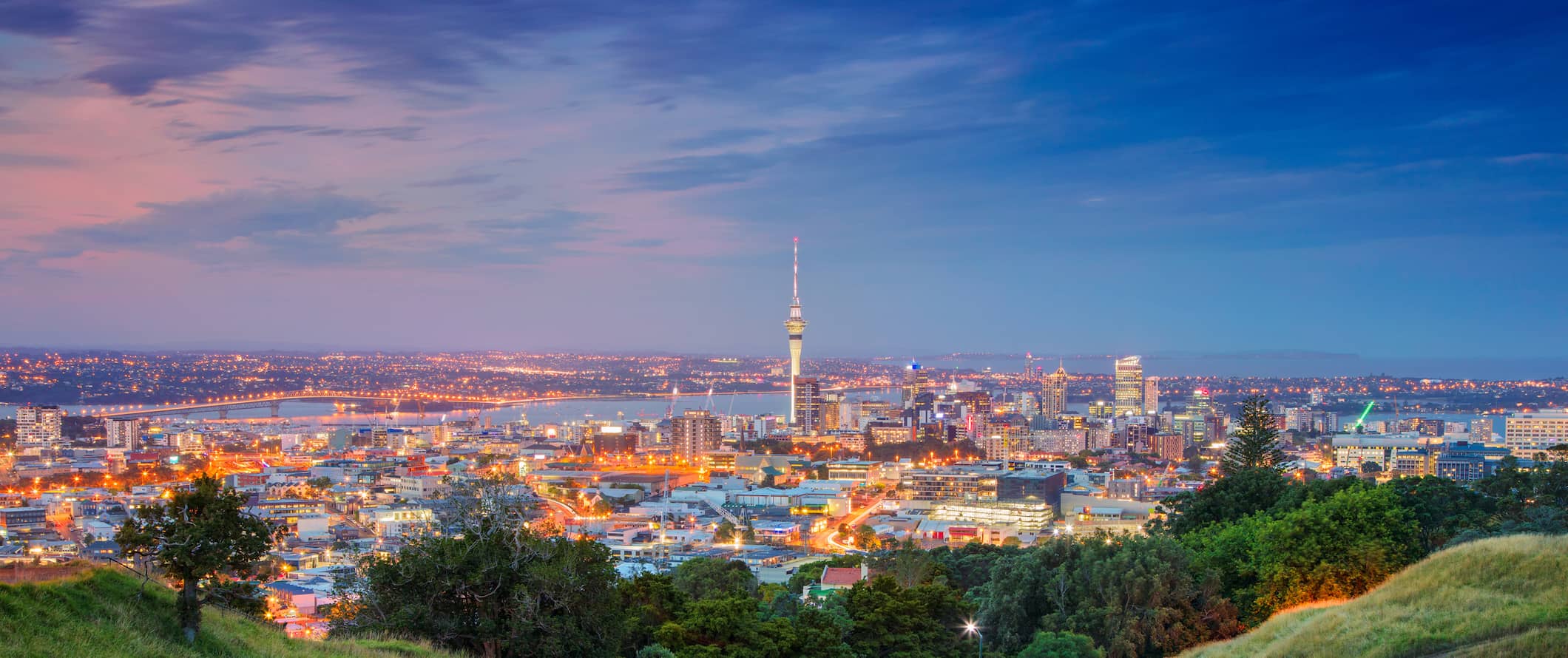
Auckland is the largest and most populous city in New Zealand (though contrary to popular belief, it is not the capital). Pretty much anyone coming to New Zealand is going to visit Auckland. As the country’s main airport, all long-haul international flights are going to land here.
As a tourist destination, I don’t think this is one of New Zealand’s best places. I found the city to be a bit ugly, sprawling, and sort of bland. There are some fun activities, good restaurants, and hip nightlife here so I wouldn’t write the city off completely.
But I also wouldn’t spend a lot of time here as there are more exciting and more beautiful places in the country. I would spend three or four days here before moving on.
This travel guide to Auckland will help you plan your trip, save money, and make the most out of your time here.
Table of Contents
- Things to See and Do
- Typical Costs
- Suggested Budget
- Money-Saving Tips
- Where to Stay
- How to Get Around
- How to Stay Safe
- Best Places to Book Your Trip
- Related Blogs on Auckland
Top 5 Things to See and Do in Auckland
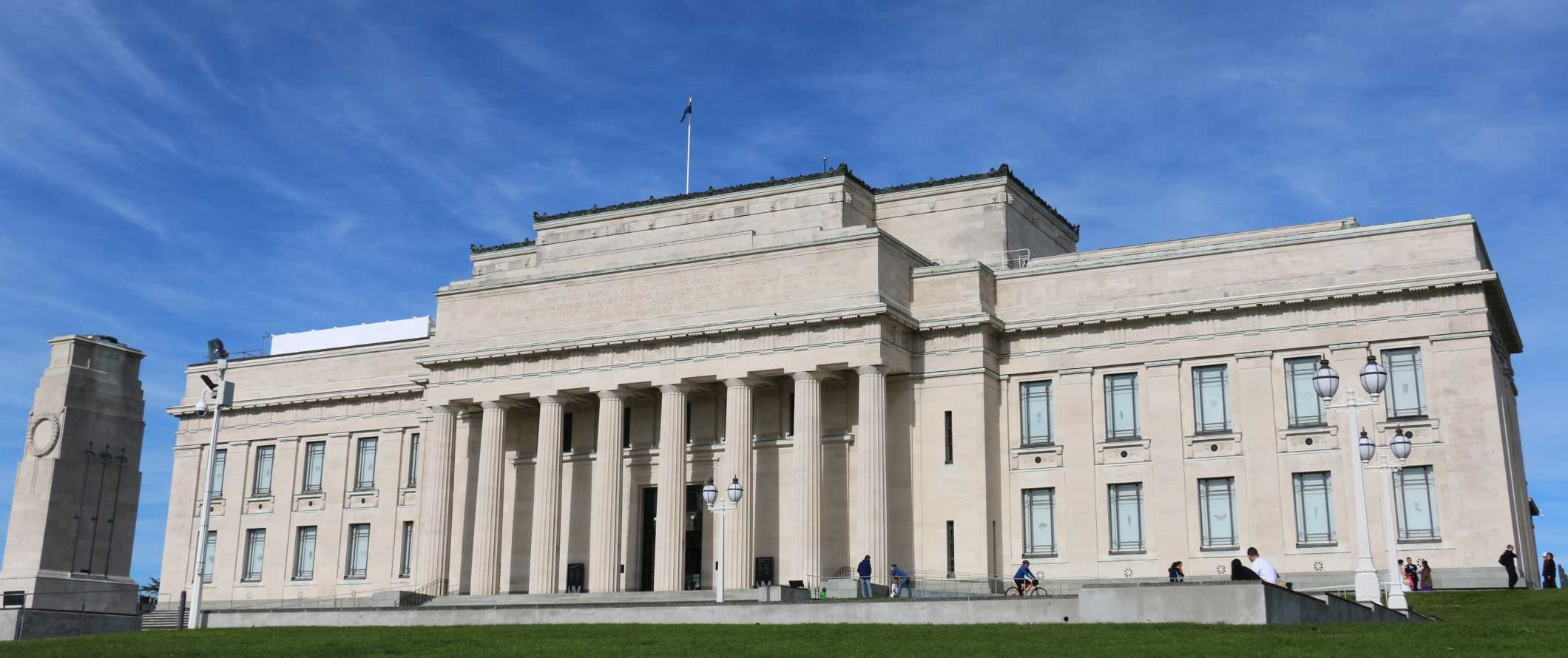
1. Day trip to Waiheke Island
Waiheke Island is just 21 kilometers (13 miles) from Auckland and is home to scenic beaches, wineries, hiking trails, and other fun outdoor activities. It’s especially known for its wine and is even known as New Zealand’s “Island of Wine,” with dozens of vineyards to visit. Waiheke makes a great day trip from Auckland and is easy to explore by bike, bus, or rental car. There are regular ferries to the island which cost 35-46 NZD (round trip) and take 45 minutes.
2. Visit the Auckland Zoo
Opened in 1922, the Auckland Zoo is a not-for-profit zoo that is home to over 1,400 animals from 144 different species. Covering almost 16 hectares (40 acres), the zoo has several different habitats, including rainforests and savannahs (the latter of which is home to giraffes, zebras, ostriches, cheetah, and other amazing animals from Africa). Admission is 24 NZD.
3. Head to Waitakere Ranges
The Waitakere Ranges are a chain of hills that stretch 25 kilometers (15 miles) across the North Island. The Waitakere Ranges Regional Park boasts 2,500 kilometers (1,553 miles) of walking trails, such as The Mercer Bay Loop Track and the Tasman Lookout Walk (both easy strolls). There are also impressive waterfalls, scenic black sand beaches, and lush rainforests here. Unfortunately, all of the forested areas of the park are closed to reduce the spread of the uncurable kauri dieback disease which is killing the ancient kauri trees that are native to the area.
4. Climb up Sky Tower
Standing over 328 meters (1,076 feet) tall and completed in 1997, Sky Tower is the tallest free-standing structure in the Southern Hemisphere. It not only offers panoramic views over the city but also has a revolving restaurant on top. Adult admission is 32 NZD. If you’re feeling adventurous, you can bungy jump from an observation deck or walk along the tightrope-walk-like deck while in a harness. Jumps start at 169 NZD while the SkyWalk is 113 NZD.
5. Hang out on the Auckland Domain
Created in the 1840s, the Auckland Domain is the city’s oldest park. When the weather is nice, you’ll find locals here running, playing sports, and reading. The Auckland Museum can be found here along with a monument to the first Maori king (admission is 28 NZD). At 75 hectares (190 acres), it’s one of the largest parks in the city and offers a lot of serene walking trails and beautiful gardens too.
Other Things to See and Do in Auckland
1. explore the hauraki gulf.
This coastal area is where you can scuba dive, fish, go boating, sail, and go whale watching. For some hiking, visit Rangitoto Island, a volcanic island in the gulf (it’s Auckland’s youngest volcano). You can reach the summit in four hours and there are also some lava caves near the peak that you can explore (bring a flashlight). For a more relaxing time, head to Motuihe Island and lounge on the beach. And, to learn about the region’s past, visit the historic mansion house on Kawau Island, which dates back to 1845. Waiheke (mentioned above) and Great Barrier are the largest islands in the gulf and are worth visiting as well.
2. Feed lambs at Sheepworld
New Zealand is known for having more sheep than people (there are approximately 6 times as many sheep as people in the country). Sheep play an important economic role in the country, which is why you should plan a visit to Sheepworld. It’s a small family farm located 45 minutes from Auckland by bus. At Sheepworld, you’ll be able to see how sheep are raised and sheared and you’ll also learn about the wool-making processes that occur afterward. Admission is 22.50 NZD.
3. Shop at the Otara Flea Market
This large Polynesian and Maori market takes place every Saturday from 6am-12pm. Located 20 kilometers (12 miles) from downtown, it’s the most popular market in the city and has been around since 1976. You’ll find a bit of everything here, from secondhand and new clothing to traditional Maori bone carvings. There are some amazing deals here as well as delicious foods and snacks (mostly Polynesian/South Pacific dishes are available). Bring an appetite!
4. Wander the North Shore
The North Shore is Auckland’s main beach area. Swimming, kayaking, and surfing here are popular activities. There’s a great sailing scene here too, as many of New Zealand’s successful international sailors began their careers at North Shore yacht clubs. You’ll also find a lively nightlife here if you stick around after sunset.
5. Check out MOTAT
The Museum of Transport and Technology is an interactive science and technology museum that’s home to over 300,000 items and exhibits, including steam engines, historic trams, and aircraft dating back to the early 1900s (they also have the largest aviation display in the Southern Hemisphere). The MOTAT is located near the zoo so you could do both together. Admission is 19 NZD.
6. Visit Howick Historical Village
The Howick Historical Village is a museum that recreates life in colonial New Zealand. Staff are dressed in period costumes dating to the mid-1800s to really make it a historically accurate and immersive experience. Sure, it’s a little cheesy but it’s fun for kids (and educational too). They have a blacksmith, a mock classroom, and even a fake contingent of soldiers. Admission is 16 NZD.
7. Walk through Waikumete Cemetery
Spanning a massive 108 hectares (266 acres), this cemetery is the largest in the entire country and the final resting place of over 70,000 people, including almost 300 Commonwealth soldiers from World War I and II. Friends of Waikumete offers daily guided walks of the cemetery to explain more about the grounds and the people buried in the cemetery. Tours are 5 NZD.
8. See the Muriwai Gannet Colony
At this coastal park you can find thousands of breeding gannets (large white seabirds) nesting between the black sand dunes. They are here between August and March and there are two viewing platforms where you can watch the birds. If you’re not a bird person, you can also come to Muriwai Beach for surfing. There are also trails for biking and hiking nearby. The colony is located around 40 minutes by car from Auckland.
9. Go bungy jumping
AJ Hackett, the man who invented modern-day bungy jumping, grew up in Auckland and has two jumps available in the city for anyone looking to get their adrenaline pumping. First, there is a 40-meter (131-foot) plunge from the Harbour Bridge (which dunks you into the ocean) that costs 165 NZD. There is also a 192-meter jump from the Sky Tower that costs 169 NZD. If you don’t want to bungy jump, AJ Hackett also operates a Sky Walk on the Sky Tower, which lets you walk around the exterior of the tower for a 360-degree panorama of the city (you’re attached to safety lines so there is no risk of falling). The Sky Tower walk is 113 NZD.
10. Snorkel on Goat Island
Located just 800 meters (2,625 feet) from shore, Goat Island is a small island within a protected marine reserve. It’s one of New Zealand’s top snorkeling spots and home to abundant colorful fish. Expect to pay around 75 NZD for snorkeling gear and a guide. If you want to scuba dive, expect to pay around 110 NZD for equipment and a guide. If you’d rather stay dry, rent a “clearyak” (clear kayak). You can find rentals on the coast for around 60 NZD per 30 minutes (kayaks fit 2 people).
11. Travel to Hobbiton
Journey to Middle Earth with a visit to the Hobbiton movie set featured in The Lord of the Rings and The Hobbit movies. Expect crowds, as this is easily one of New Zealand’s most famous attractions. You must go on a tour to see Hobbiton. It starts with a drive through the owners’ 1,250-acre sheep farm with some epic views over the Kaimai Ranges. From here, you can explore Bag End, wander around the hobbit holes, and visit the Green Dragon Inn. If you’re a LOTR fan, you can’t pass this up. Tours start at 89 NZD. It’s located 2 hours from Auckland, with many guided tours departing from the city.
For more information on other destinations in New Zealand, check out these guides:
- Bay of Islands Travel Guide
- Christchurch Travel Guide
- Franz Josef Travel Guide
- Nelson Travel Guide
- Queenstown Travel Guide
- Rotorua Travel Guide
- Taupo Travel Guide
- Waitomo Travel Guide
- Wanaka Travel Guide
- Wellington Travel Guide
Auckland Travel Costs
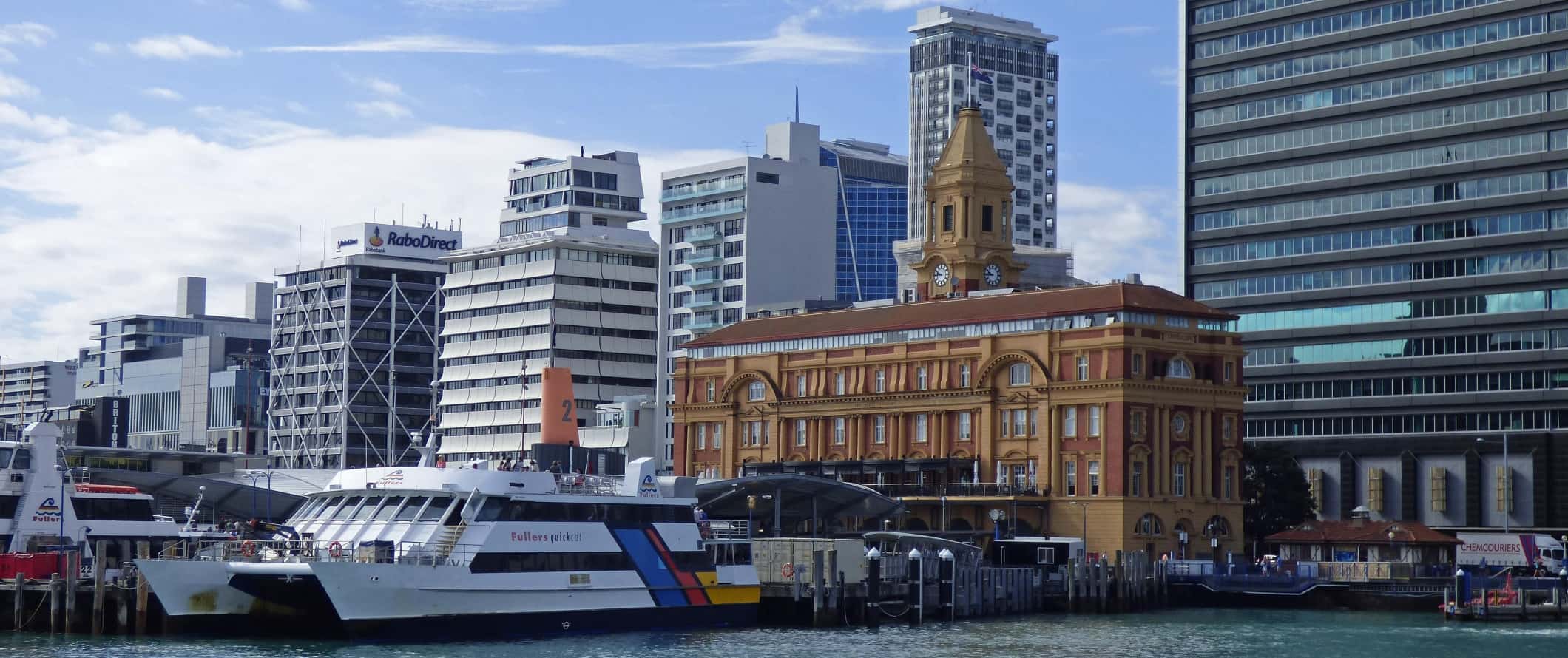
Hostel prices – Dorms with 4-6 beds cost 35-45 NZD per night while dorms with 8-10 beds cost 28-35 NZD. Free Wi-Fi is standard and most hostels have self-catering facilities if you want to cook your own food. Only a couple of hostels include free breakfast so be sure to book those hostels in advance if that’s a priority for you. Private rooms are around 100-110 NZD. Prices for hostels don’t fluctuate too much by season.
There are several campgrounds outside of the city with prices starting at 10 NZD per night for a basic plot (a flat space for a tent, usually without electricity). If you’re driving a self-contained camper van (one with its own water supply and bathroom), there are plenty of free places to park overnight in and around the city as well.
Budget hotel prices – For a budget two-star hotel, prices start at 90 NZD per night. These usually include free Wi-Fi; however, two-star hotels are rare in Auckland. Three-star hotels are much more common, costing around 100 NZD per night.
Airbnb is available in the city with private rooms starting at 50 NZD, though they average closer to 80 NZD per night. For an entire home/apartment, expect to pay at least 90-100 NZD per night (double that if you don’t book early).
Food – Food in Auckland consists mostly of seafood, lamb, fish and chips, and specialties like Maori hangi (meat and vegetables cooked underground). Expect to indulge on things like roast lamb, muscles, scallops, oysters, and snapper. As a large city, Auckland also has a lot of options for eating out, including sushi, Korean, Thai, and Chinese food.
A cheap meal of traditional cuisine costs around 20 NZD. A burger is around 11-15 NZD while fish dishes are 28-36 NZD. For upscale fine dining, a five-course restaurant meal with a drink costs about 140 NZD.
A fast-food combo meal (think McDonald’s) costs around 13 NZD while takeaway fish and chips are 15-20 NZD. Chinese and Indian food can be found for 10-15 NZD while a small pizza costs around 14 NZD.
Beer costs 10-12 NZD, a glass of wine is 12-14 NZD, and a cocktail is 14-18 NZD. A latte/cappuccino costs 5 NZD while bottled water is 3 NZD.
If you choose to cook your own food, plan to spend around 75 NZD per week on basic foodstuffs like rice, pasta, vegetables, eggs, chicken, and some meat.
Backpacking Auckland Suggested Budgets
On a backpacker budget, you can visit Auckland for 85 NZD per day. On this budget, you’ll be staying in a dorm room, cooking all of your meals, doing free walking tours or outdoor activities, visiting just a few paid attractions, using public transportation to get around, and limiting your drinking. If you plan on drinking, att 10-20 NZD to your daily budget.
On a mid-range budget of 185 NZD per day, you can stay in a private room in a hostel or Airbnb, eat out for a few meals, take the occasional taxi, enjoy a couple of drinks, and do more paid activities like visiting museums and going snorkeling. In short, you’ll have the flexibility to do what you want. You’re not going to live large but you’ll be able to get by without worrying too much about your spending.
On a “luxury” budget of 355 NZD per day or more, you can stay in a hotel, eat out for every meal, drink more, take more taxis, visit museums, and do as many of the adventure activities that make the country famous as you’d like (such as bungy jumping). This is just the ground floor for luxury though — you can easily spend more if you really want to splash out!
You can use the chart below to get some idea of how much you need to budget daily, depending on your travel style. Keep in mind these are daily averages — some days you’ll spend more, some days you’ll spend less (you might spend less every day). We just want to give you a general idea of how to make your budget. Prices are in NZD.
Auckland Travel Guide: Money-Saving Tips
Auckland is an expensive city to visit. Costs can add up here quickly, especially if you are eating out a lot. If you find cheap accommodation, stick to happy hours, and cook most of your meals, you’ll be able to visit on a budget. Here are some ways to save money in Auckland:
- Learn to cook – The food scene in Auckland isn’t that mind-blowing. If you want to really save, cook your own food. When it comes to buying groceries, the cheaper supermarkets are Pakn’Save or Countdown.
- Hit happy hour – The backpacker bars have cheap happy hours. Hit them up and drink for cheap. Otherwise, plan to spend 10 NZD for a beer at the bar.
- WWOOF it – If you don’t mind staying outside of the city, WWOOFing is a great way to work for your accommodation and food. In return for working on a farm or B&B, you get free room and board. It’s a popular activity with travelers because it lets you stay in a place cheaper and longer. You can do it for a few days or a few months.
- Get a temporary job – If you’re running low on money and still have plenty of time left in New Zealand, check Backpackerboard.co.nz for temporary yet well-paying gigs.
- Clean in exchange for your room – Some hostels in the city will let you trade a few hours of cleaning and making beds for free accommodation. Ask at the front desk if this is an option.
- Stay with a local – While there are not a ton of options available in the city, it never hurts to check! If you don’t mind sleeping on a couch or floor, Couchsurfing is a great way to save some money and meet locals.
- Take a free walking tour – Auckland Free Walking Tour has a fun and insightful tour that will show you all the highlights of the city. It’s the best way to get the lay of the land — just be sure to tip your guide!
- Find cheap activities – The bookme.co.nz website provides last-minute discounts on activities (and pub crawls) throughout the country. Most of the activities are last minute, but if you’re flexible in when you want to do things, you can save up to 60% off attractions! I can’t recommend it enough.
- Transport vehicles – Campervan and car relocation services provide a free vehicle and gas as you drive it from one destination to another. This can be a great way to save a lot of money if you’re flexible with timing. Check Transfercar.co.nz to see what’s available.
- Enjoy nature – Remember that nature is free! New Zealand, home to the great walks of the world, has tons of free outdoor activities. While the adventure sports, wine tours, glacier treks, and boat cruises can eat into your budget, there are plenty of trails and walks to keep you busy!
- Bring a reusable water bottle – The tap water in Auckland is safe to drink. To save money and reduce your plastic use, bring a reusable water bottle with you. LifeStraw make a reusable bottle with a built-in filter so you can be sure your water is always safe and clean.
- Pet sit for free accommodation – House and pet sitting is very popular here since Kiwis often head abroad and need pet sitters. All you need to do is watch their pets/home while they’re away and you’ll get a free place to stay. Use a site like Trusted Housesitters to find the best gigs.
Where to Stay in Auckland
Auckland has a lot of hostels. They’re all pretty comfortable and sociable. Here are my recommended places to stay in the city:
- The Attic Backpackers
- Verandahs Backpackers Lodge
- Haka Lodge Auckland
- Waiheke Backpackers Hostel
How to Get Around Auckland

Public transportation – Buses are the most common way to get around the city. Prices are on a zone system, starting at 0.60 NZD within the city and going up depending on how far you travel. Cash is not accepted on buses, so you must get a AT Hop card for 10 NZD which also cuts ticket prices by 20-50%. You can purchase the AT Hop card at stores around the city. There is no day pass, but there is a daily fare cap (with the Hop card) of 20 NZD (this covers buses, trains, and local ferries).
To reach the suburbs, you can take the local commuter train, which uses the same fare system as the bus. Also, there are ferries running between downtown Auckland, the North Shore, East Auckland, and the islands. Fares start at 7.50 NZD (5 NZD with AT Hop card). Just keep in mind some ferries do not accept the Hop card so you’ll need to check in advance.
The airport is around 45 minutes from the city and an express bus ticket will cost 17 NZD (one-way).
Taxi – Taxis are expensive and should be avoided. Rates start at 3.50 NZD and go up by 2.65 NZD per kilometer. A flat-rate ride from the airport to the city center is 65-70 NZD. Unless you have no other option or are splitting a ride with other travelers, I’d avoid using taxis.
Bicycle – NextBike is the dockless bike share operating in Auckland. The Auckland special pass is just 4 NZD for one week of 30-minute unlimited rides. If you want to rent your own bike, expect to pay 30-40 NZD per day for a bike. For an electric, prices go as high as 90-100 NZD per day!
Ridesharing – Uber is available in Auckland and is usually cheaper than taking a taxi.
Car rental – Unless you’re planning to leave the city, you likely don’t need to rent a car here. Public transportation is clean, safe, and reliable. However, if you do need a car, expect to pay at least 40 NZD per day for a small vehicle (prices are cheaper the longer you rent). Keep in mind that they drive on the left here. An International Driver’s Permit (IDP) is required for car rentals.
When to Go to Auckland
Auckland is in the Southern Hemisphere, meaning when most North Americans are dealing with snow and freezing temperatures, Kiwis are enjoying their beaches. Overall, the climate here is temperate. Summer is from December-February and it’s the most popular time to visit the city. Kiwis also take their holidays during this time, so things get busy! Days are long and sunny, nights are mild. The average daytime temperature in the summer in Auckland is around 25°C (77°F).
Fall is from March-May, and it’s one of the best times to visit the city. The crowds have dispersed, prices are lower, and the weather is still warm.
Winter is from June-August. This is the cheapest time to visit as flights and accommodation are usually discounted. Snow isn’t common but it can be windy and wet, making it seem much cooler than it is. Temperatures hover around 7°C (45°F) during the day so make sure you dress for the weather.
There’s really no bad time to visit Auckland but since New Zealand is so expensive, the shoulder season is probably of the best times to visit if you’re on a budget.
How to Stay Safe in Auckland
Auckland is a pretty safe city to visit. There’s very little violent crime or theft. That said, it never hurts to always keep your valuables safe and secure just in case. But, in all my years visiting, I’ve never felt unsafe.
Solo female travelers should generally feel safe here. However, the standard precautions apply (never leave your drink unattended at the bar, never walk home alone intoxicated, etc.).
If you’re worried about travel scams, you can read about common travel scams to avoid here . However, there are hardly any in this city that a traveler needs to be worried about.
The biggest risk to travelers in Auckland is often natural disasters and unpredictable weather, including strong winds, heavy rain, and even hail. Earthquakes are common and can happen at any time (though they are not as destructive here as in other places in the country).
Consider downloading the Hazard App from the Red Cross to stay updated about weather events. It has all kinds of advice and tips for natural disasters and also sends out warnings and notifications should a disaster occur.
If you do experience an emergency, dial 111 for assistance.
Always trust your gut instinct. Make copies of your important documents, like your passport.
The most important piece of advice I can offer is to purchase good travel insurance. Travel insurance protects you against illness, injury, theft, and cancellations. It’s comprehensive protection in case anything goes wrong. I never go on a trip without it as I’ve had to use it many times in the past. You can use the widget below to find the policy right for you:
Auckland Travel Guide: The Best Booking Resources
These are my favorite companies to use when I travel. They consistently have the best deals, offer world-class customer service and great value, and overall, are better than their competitors. They are the companies I use the most and are always the starting point in my search for travel deals.
- Skyscanner – Skyscanner is my favorite flight search engine. They search small websites and budget airlines that larger search sites tend to miss. They are hands down the number one place to start.
- Hostelworld – This is the best hostel accommodation site out there with the largest inventory, best search interface, and widest availability.
- Booking.com – The best all around booking site that constantly provides the cheapest and lowest rates. They have the widest selection of budget accommodation. In all my tests, they’ve always had the cheapest rates out of all the booking websites.
- Get Your Guide – Get Your Guide is a huge online marketplace for tours and excursions. They have tons of tour options available in cities all around the world, including everything from cooking classes, walking tours, street art lessons, and more!
- EatWith – This website allows you to eat home cooked meal with locals. Locals post listings for dinner parties and specialty meals that you can sign up for. There is a fee (everyone sets their own price) but this is a great way to do something different, pick a local’s brain, and make a new friend.
- bookme.co.nz – You’ll get some really good last minute deals and discounts on this website! Just select what area you’re traveling in, and see what activities are on sale.
- treatme.co.nz – The locals use this website to find discount hotels, restaurants, and tours. You can save up to 50% off things like catamaran sailing lessons or three-course dinners.
- SafetyWing – Safety Wing offers convenient and affordable plans tailored to digital nomads and long-term travelers. They have cheap monthly plans, great customer service, and an easy-to-use claims process that makes it perfect for those on the road.
- LifeStraw – My go-to company for reusable water bottles with built-in filters so you can ensure your drinking water is always clean and safe.
- Unbound Merino – They make lightweight, durable, easy-to-clean travel clothing.
- Top Travel Credit Cards – Points are the best way to cut down travel expenses. Here’s my favorite point earning credit cards so you can get free travel!
Auckland Travel Guide: Related Articles
Want more info? Check out all the articles I’ve written on backpacking/traveling in New Zealand and continue planning your trip:
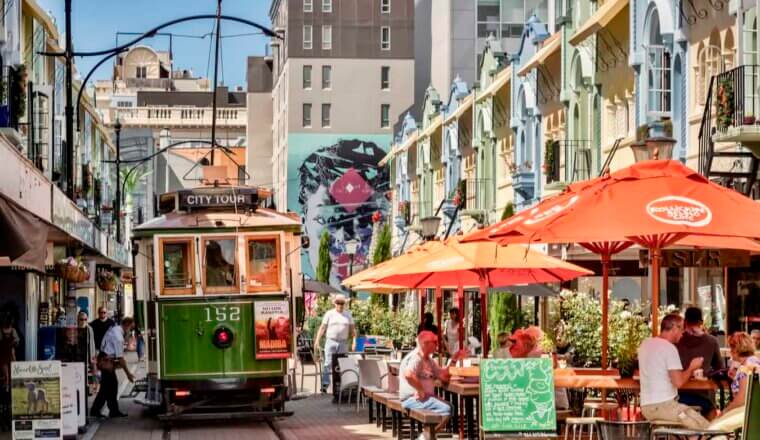
The 6 Best Hotels in Christchurch
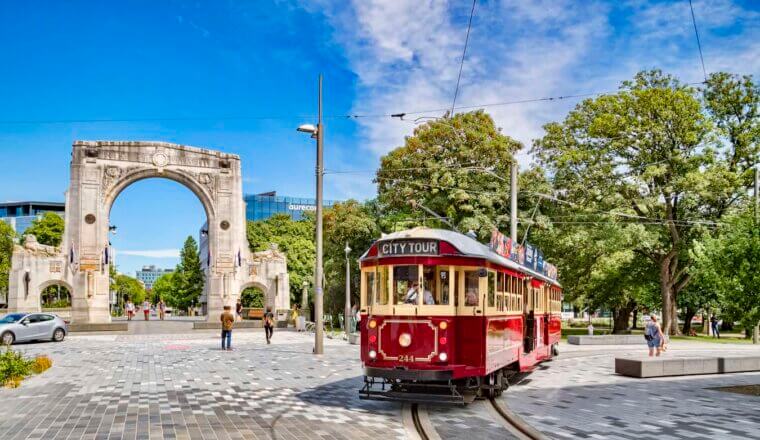
Where to Stay in Christchurch: The Best Neighborhoods for Your Visit
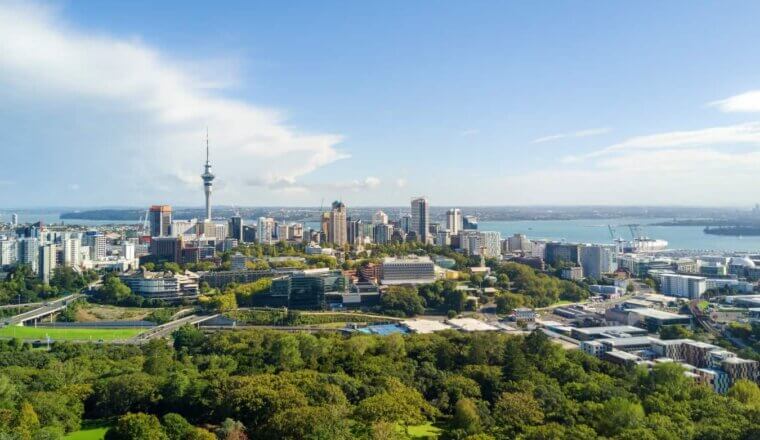
The 6 Best Hotels in Auckland
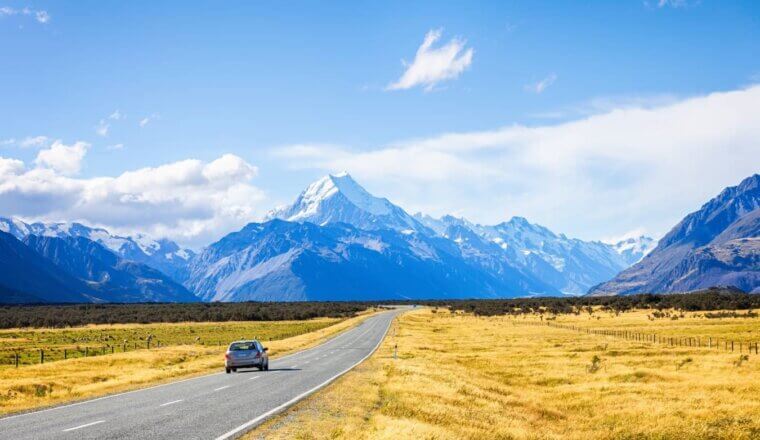
The Ultimate New Zealand Road Trip Itinerary
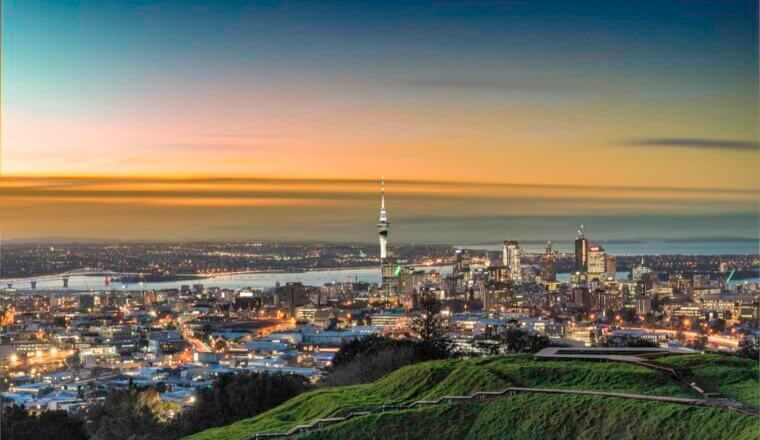
Where to Stay in Auckland: The Best Neighborhoods for Your Visit
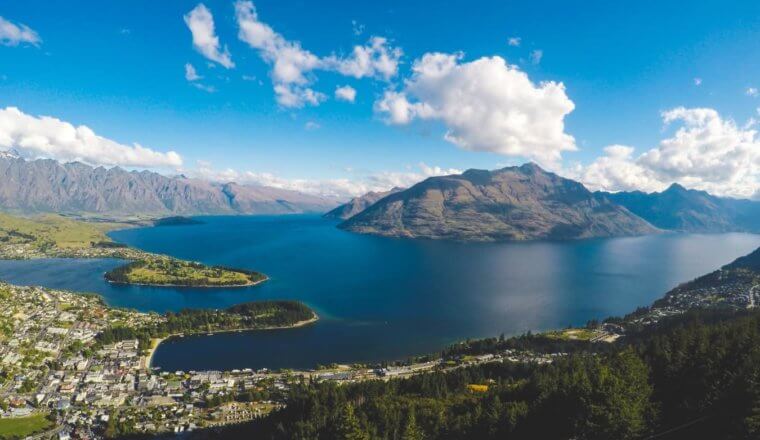
The 6 Best Hostels in Queenstown
Get your free travel starter kit.
Enter your email and get planning cheatsheets including a step by step checklist, packing list, tips cheat sheet, and more so you can plan like a pro!

- Where To Stay
- Transportation
- Booking Resources
- Related Blogs
Six things to do in Darwin: A first-timer’s guide to the Northern Territory

Megan Watts
Share this article
Heading to the Northern Territory? Here's how to make the most of your time in the Top End. Photo / NT Tourism
Heading to the Northern Territory? Make the most of the unparalleled Top End with an itinerary that champions the very best of Darwin.
Capital of the Northern Territory , Darwin may not be at the top of your trip list but it should be.
With a little bit of everything for everyone and weather that interchanges between warm and warmer, it’s the perfect place to gather your thoughts, explore some incredible landscapes and enjoy a little bit of Northern Australia adventure - as long as you don’t plan your visit during “the wet”.
From croc country explorations, waterfall chasing and beaches that stretch for miles, to rich historical experiences that spotlight the stories of the Top End’s past, here’s how to get the very best out of your trip to Darwin.

Check out the crocs
Hopping on a cruise boat and floating down the Adelaide River may sound like a serene experience, but once you factor in the croc-infested waters, it becomes more of a riveting than a relaxing boat journey.
Watch from afar as your tour guides not only feed the fiercely-toothed beasts but coax them into jumping to great heights for their meal. Fear not, guests are encouraged to simply enjoy the spectacle while you sail down the river surrounded by some local “saltis”.

Explore Litchfield National Park
Perhaps the last thing you want to do after your croc experience is splash around in local watering holes but you would be greatly missing out if you skipped a dip in one of Litchfield National Park’s many swimming locations.
Home to incredible sandstone rock formations, towering magnetic termite mounds and waterfalls that cascade into freshwater pools, there’s so much to see and do - and ample opportunities to swim in croc-free waters.

Head to the waterfront
If you’re looking for something a little more cosmopolitan during your stay in Darwin, your first port of call should be a visit to the waterfront.
The seaside precinct has a delicious array of food destinations, along with shops to explore, lagoons to splash around in and harbour cruises that put a new perspective on Darwin’s incredible offerings.
Our advice? Grab some fresh seafood from one of the many local eateries, take a walk down the bustling promenade and hop on a boat at Stokes Hill Wharf for a sunset sail.

Walk around Mindil Beach Sunset Market
Held every Thursday and Sunday between 4pm and 9pm, the Mindil Beach Sunset Market is a local hotspot for some of the best food in Darwin, but tourists will find a diverse selection of trinkets to remember their stay when perusing the many stalls.
Showcasing indigenous artwork, locally designed fashion and jewellery with a Darwin twist - all with bustling buskers and bands at every corner - the market is a lively hub for food and culture.
We recommend grabbing a bite and a souvenir before watching the illuminating sunset from Mindil Beach.

Watch a flick at the Deckchair Cinema
Watching a movie may not seem like the most proactive tourist recommendation, but underneath the starry night sky and surrounded by Darwin’s lush tropical outdoors, it’s not your average cinema experience, either.
Every night during the dry season, the Darwin Film Society plays an array of movies, from beloved family flicks to local Aussie favourites, on the edge of Darwin Harbour.
Sink into a deck chair, order dinner from one of the local food spots and settle in for a movie night unlike any other.
View this post on Instagram A post shared by Museum & Art Gallery of the NT (@mag_nt)
Discover the museum and art gallery of the Northern Territory
There’s no better way to learn about a place than through its local artscape, and paired with the local museum, Darwin’s past, present and future are put on display in one spot.
The museum and art gallery of the Northern Territory champions local artists via a range of thought-provoking works while also documenting the region’s past in an array of insightful installations, shedding light on the disastrous effects of Cyclone Tracy as well as the realities of Territory life in the early 1900s.
GETTING THERE
Qantas and Air New Zealand fly from Auckland to Darwin via either Melbourne or Sydney.
tourismnt.com

Latest from Travel

What does travel insurance not cover? Why travellers should understand force majure events
Earthquakes, labour strikes, pandemics and floods don’t stop because we’re on holiday.

Visit your local cafe, and other ways to have an easy eco-friendly experience in NZ

We dare you to jump into the frigid waters of Lake Taupō this winter, here's why

Turbulence death: Airlines set to tighten seatbelt rules

Time to get away?

- Backpackers
- Bed & Breakfast
- Holiday Homes
- Holiday Parks
- Holiday Resorts
- Private Retreats
- Adventure Parks
- Adventure Tours
- Bungy Jumping
- Extreme Adventure
- Fishing & Hunting
- Golf Courses
- Horse Trekking
- Scenic Flights
- Ski & Snowboarding
- Walking Tracks
- Historic Sites
- National Parks
- Surrounding Islands
- Thermal Springs
- Wildlife Parks
- Bars & Pubs
- Beauty Spas
- Fitness Centres
- Internet Café’s
- Theme Parks
- Wine Trails
- Asian Cuisine
- Buffet Restaurants
- Chinese Restaurants
- European Restaurants
- Family Restaurants
- Fish & Chips, Takeaways
- French Restaurants
- Indian Restaurants
- Italian Restaurents
- Mexican Restaurants
- Pizza Restaurants
- Seafood Restaurants
- Steakhouse Restaurants
- Thai Restaurant
- Vegetarian Restaurants
- Vineyard Restaurants
- Kiwi Road Trips
- Travelling Distances NZ
- Travel Information
- Camping Gear
- Hiking Equipment
- Local Products
- Travel Accessories
- Travel Essentials
- Add your business
- Advertise on Travel Guide
Lost your password? Please enter your email address. You will receive a link to create a new password via email.
Discover New Zealand
Your Guide to Paradise

Popular Cities Find out more about your favourite travel destinations
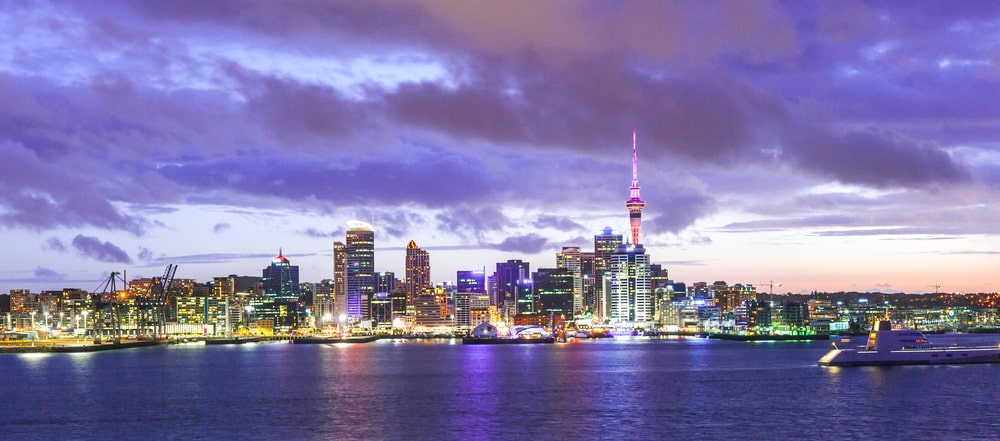
Bay of Plenty
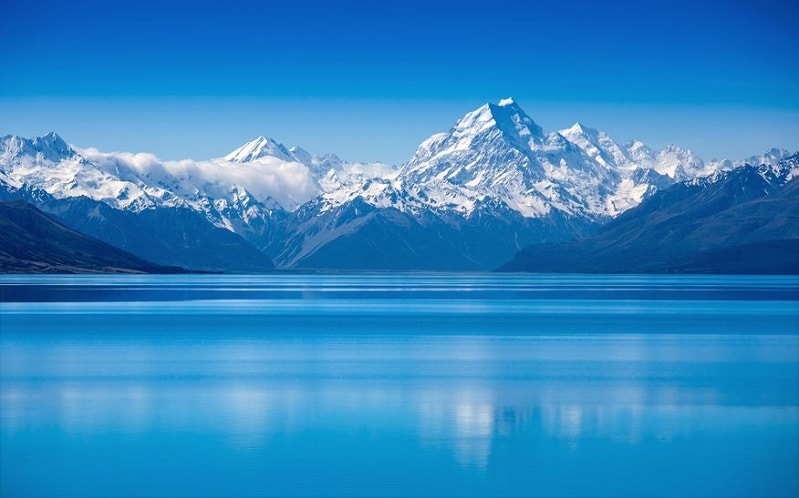
Hawke's Bay
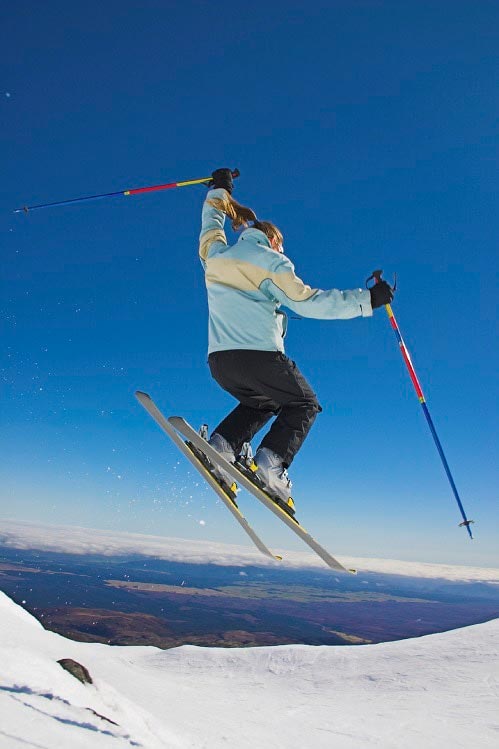
Manawatu-Wanganui
From our blog.
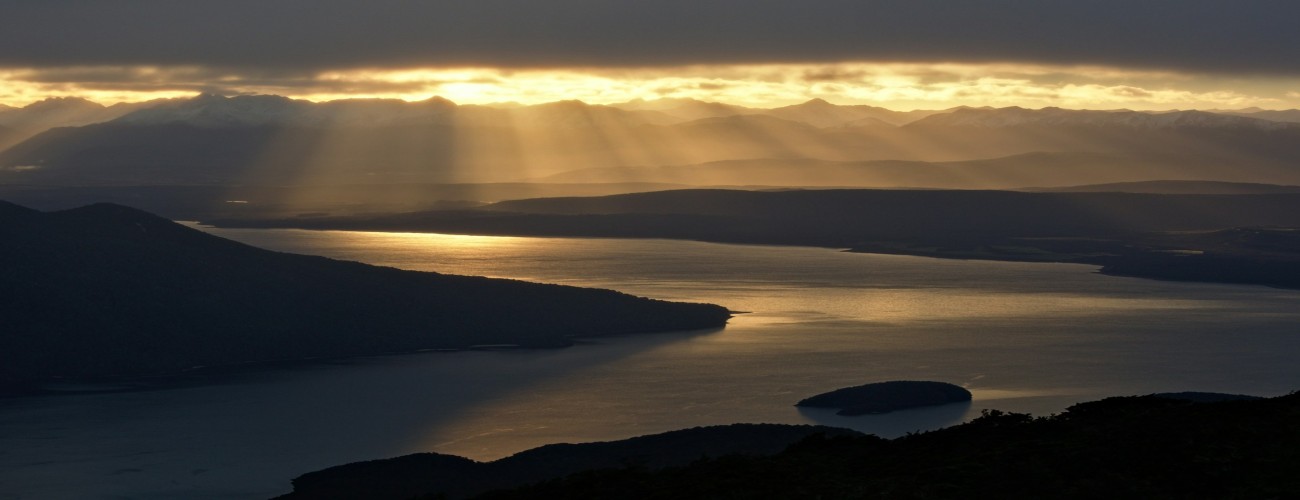
- Travel Guide New Zealand
- Things to Do
Fiordland's Majestic Beauty: Milford Sound and Beyond
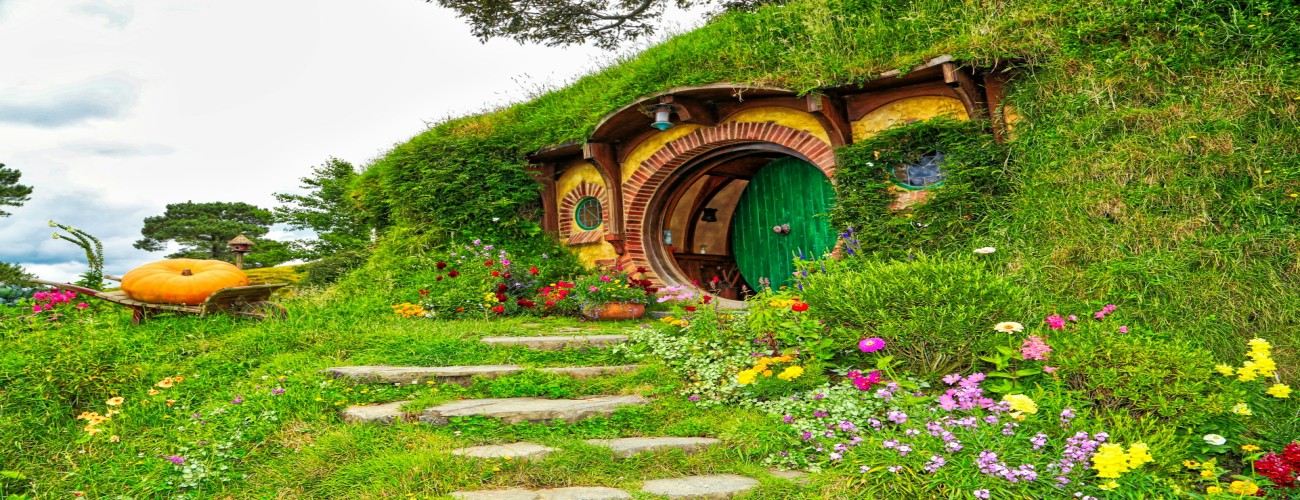
- Sightseeing
The Hobbiton Experience: A Must-See for 'Lord of the Rings' Fans
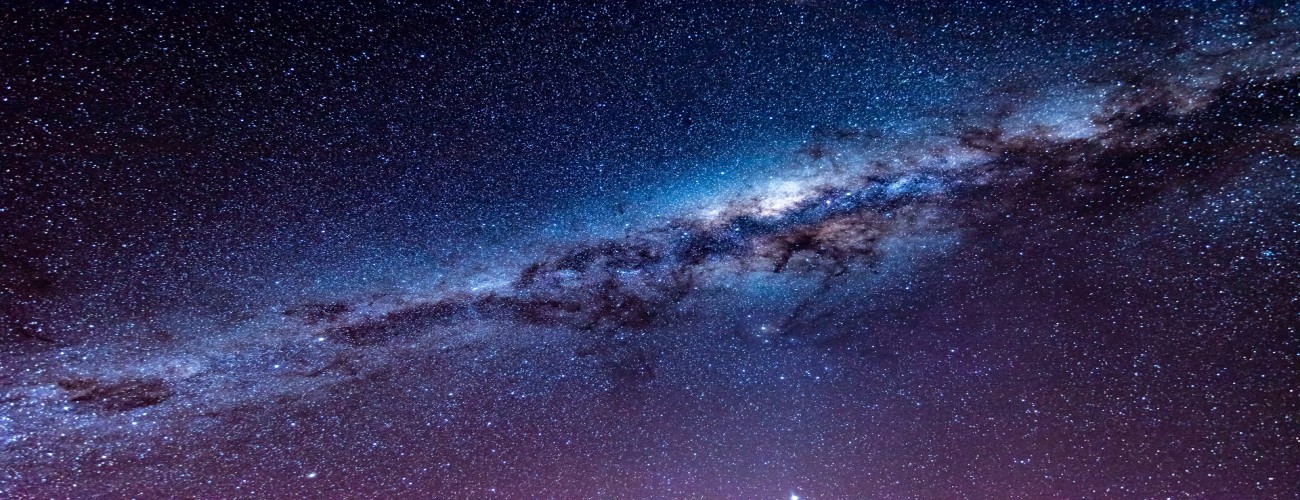
Stargazing in Aoraki: Night Skies Like No Other
Get business exposure.
List your business today and start generating revenue! It is easy and efficient.
Give a boost to your business by listing it on Travel Guide. It is the best platform which provides faster and higher reach to potential customers. It comes with an opportunity to introduce your products/services ( hotel, tour packages, restaurants, homestays, attractions etc) to many consumers. It also helps you promote your business through various online tools.
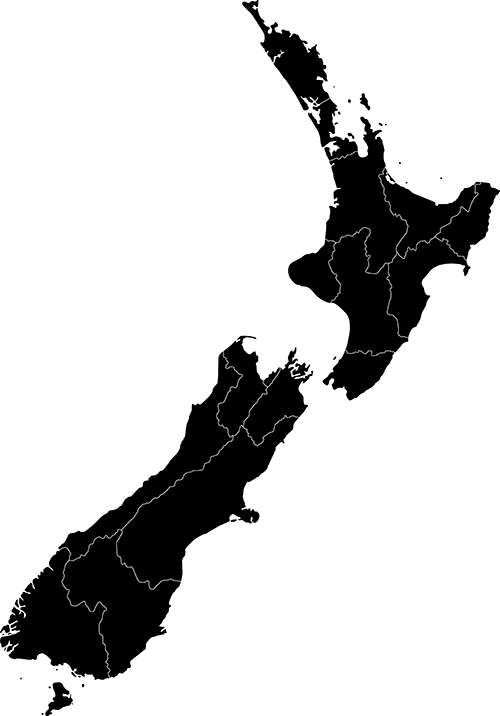
Trending Business Places

Fyffe On Riccarton Motel
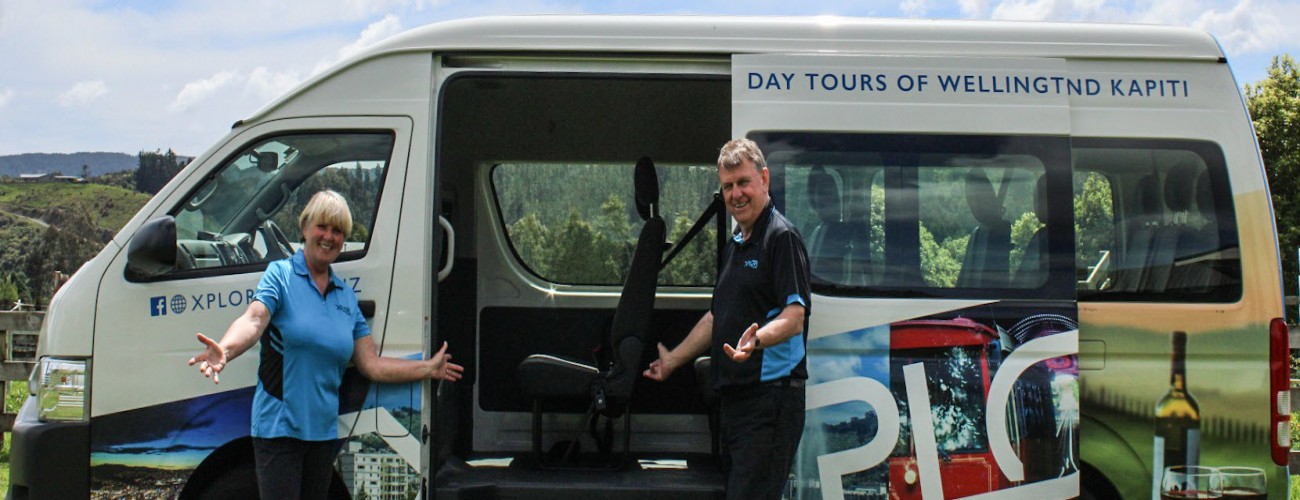
Xplor Tours
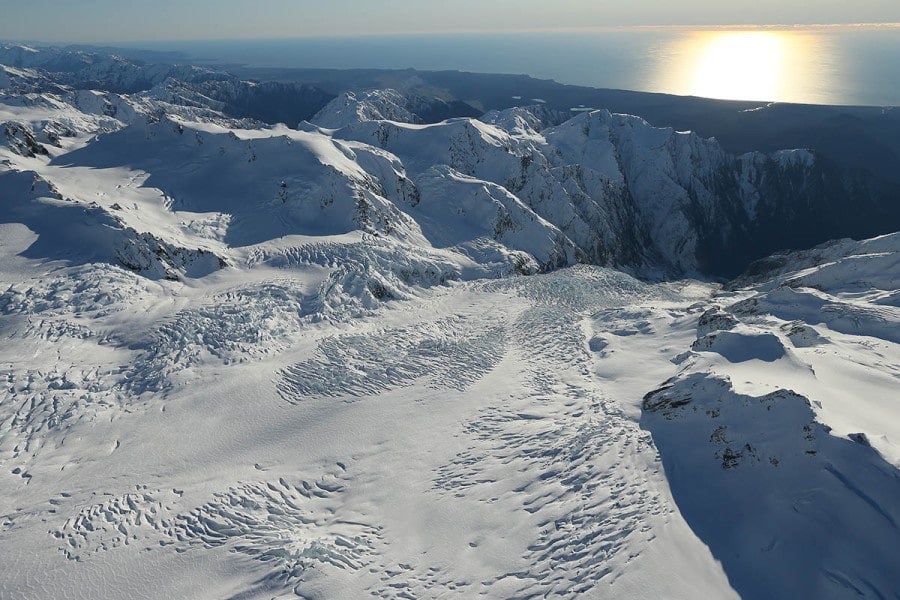
Air Safaris Scenic Flights Mt Cook
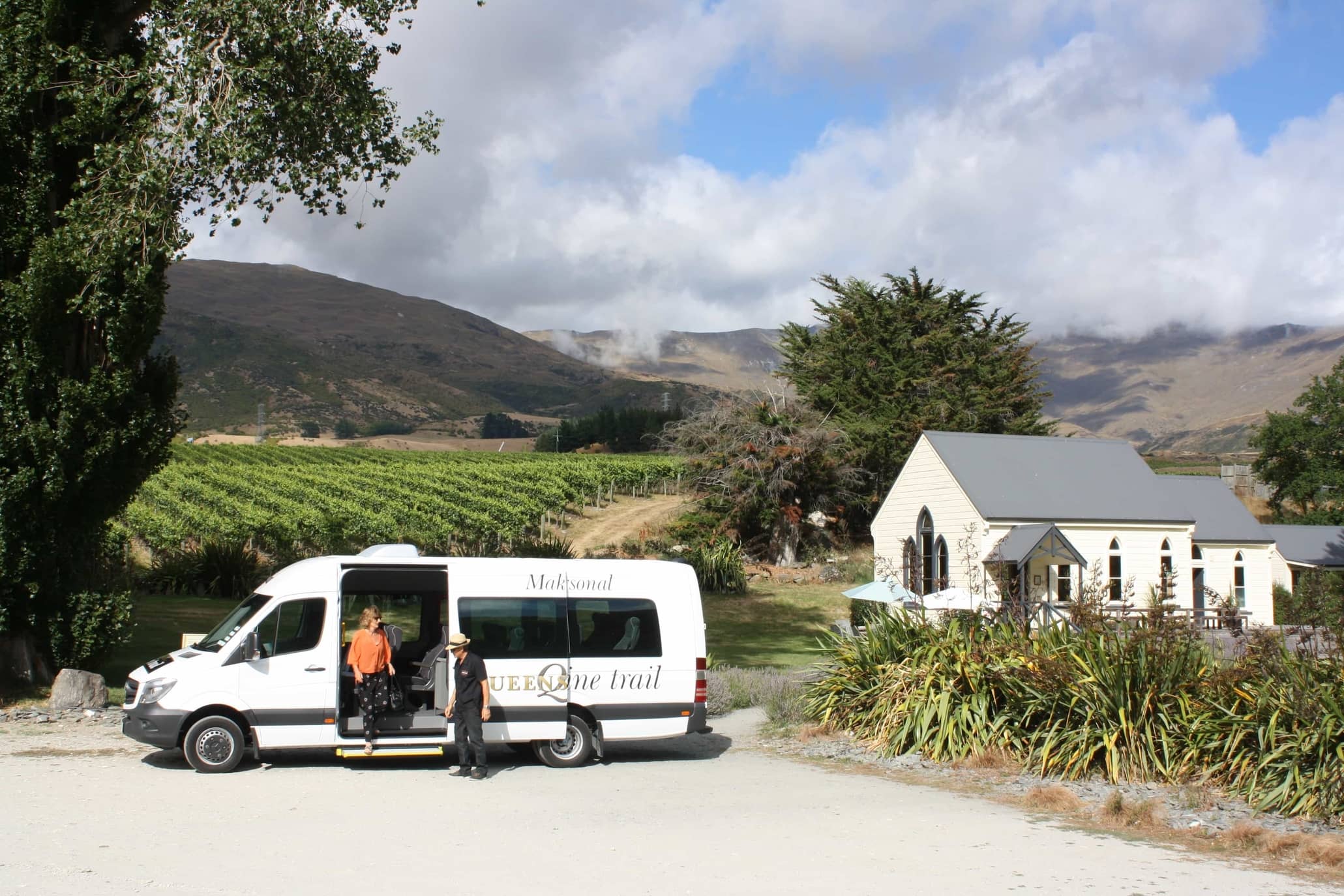
Queenstown Wine Trail Tours
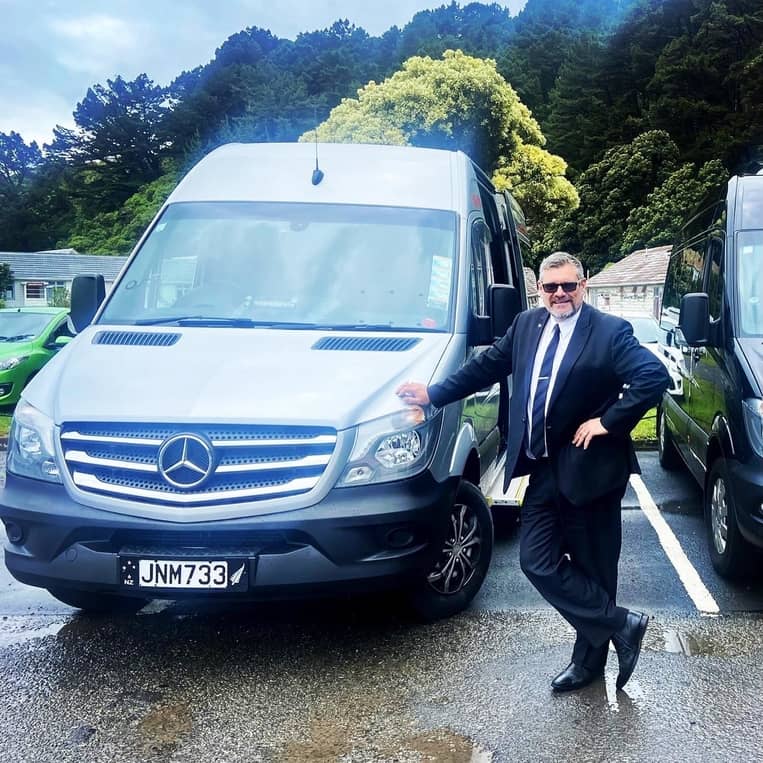
Executive Private Transport

Cedarwood Lakeside Motel
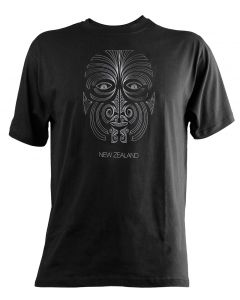
Wellington Souvenirs
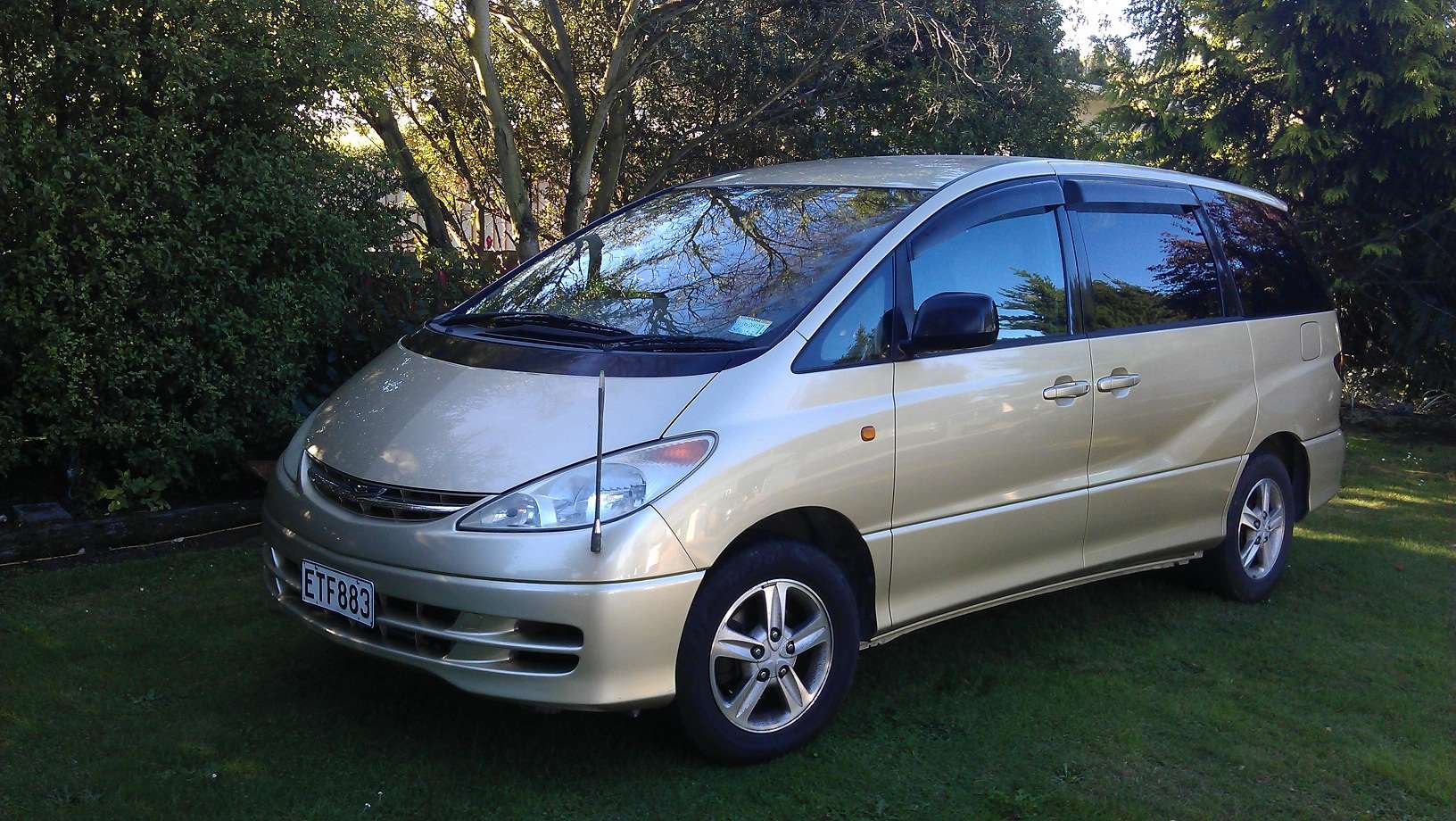
Airport Rentals Christchurch New Zealand
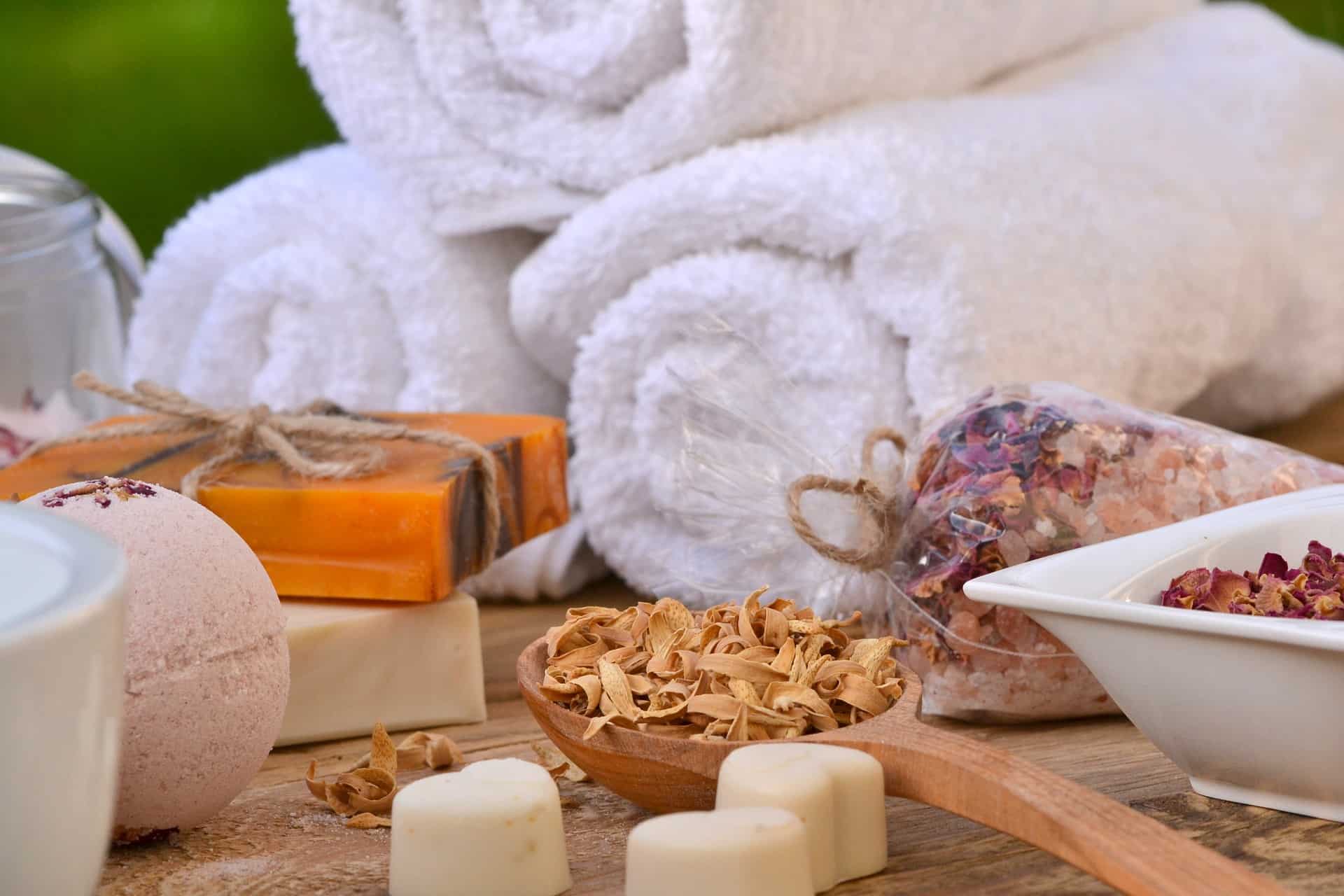
Krajang Thai Home Spa
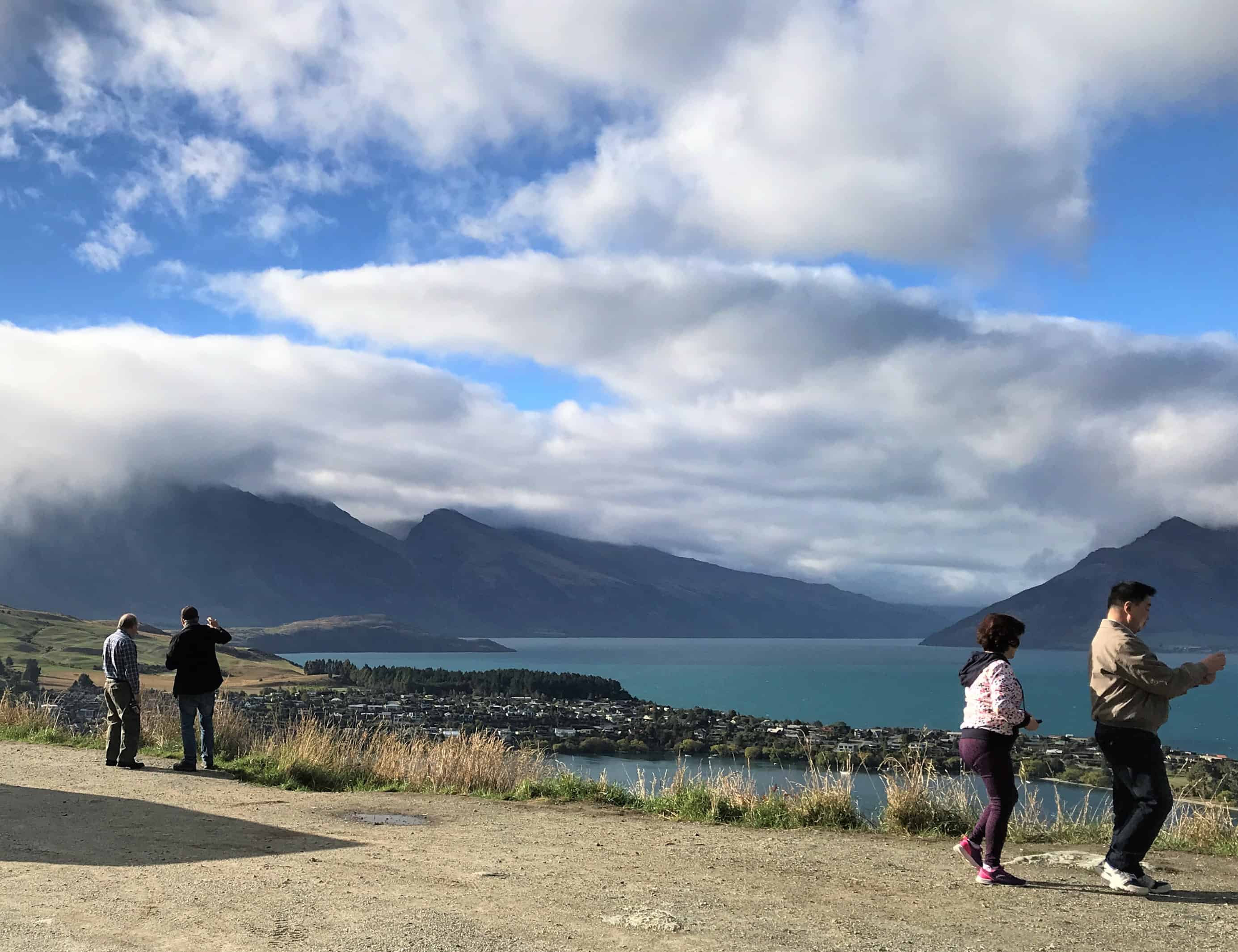
New Zealand Private Tours
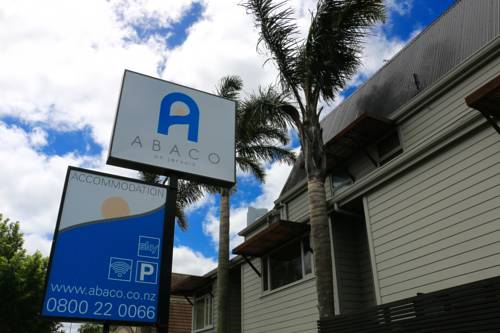
Abaco On Jervois
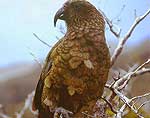
Nature Quest New Zealand
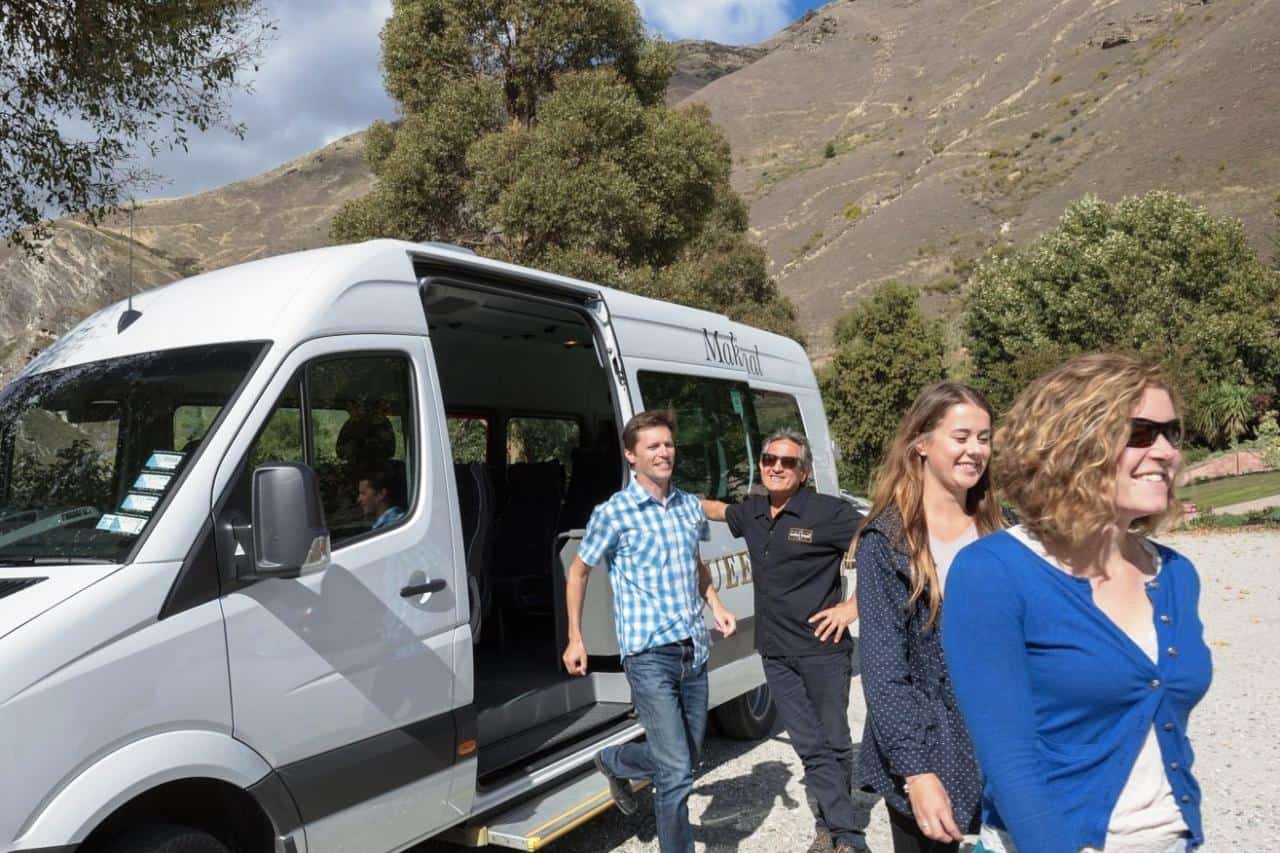
Wine Hopper Hop On Hop Off Bus Queenstown NZ
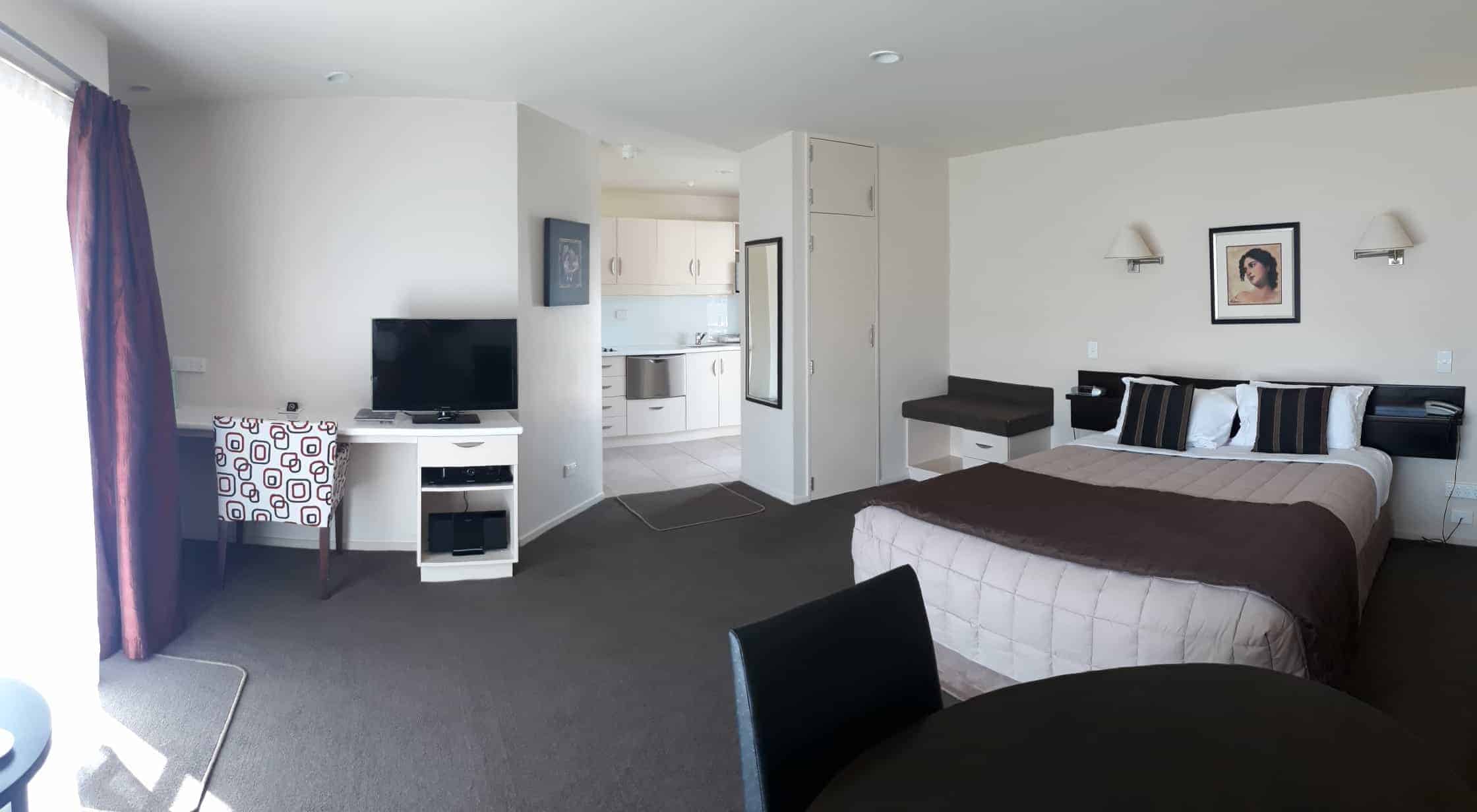
Cedar Grove Motor Lodge Nelson
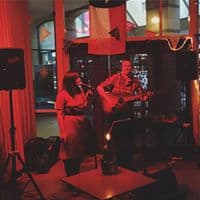
Thunderbird Cafe
Browse businesses by category.

Travel Guide App
Download the app and go explore New Zealand.

IMAGES
VIDEO
COMMENTS
Welcome to New Zealand. Get official travel information, maps, itineraries, best time to travel & things to do to help you plan your next holiday to New Zealand. ... Guide to travelling to NZ Covid-19: Guide for travellers ...
Build a memorable collection. Get to the heart of New Zealand with one of our in-depth, award-winning guidebooks, covering maps, itineraries, and expert guidance. New Zealand $ 28.99. New Zealand's North Island $ 0.0. New Zealand's South Island $ 24.99.
New Zealand Travel Guide. Last Updated: April 1, 2024. New Zealand's name inspires pictures of mountains, glaciers, forests, pristine lands, and lots and lots of sheep. And the country is the adventure capital of the world. Hiking, skydiving, caving, bungy jumping, skiing — everything here is geared towards getting you outside and doing ...
Welcome to the internet's most comprehensive travel guide to New Zealand! Plan your holiday to New Zealand on this fast and free travel guide with just a click or tap away in your browser. We have over 2,000 articles to help inspire, plan and get on-the-ground advice for every nook and cranny of Aotearoa, written by real travel writers; not ...
1. Queenstown. Best for adventure activities. New Zealand's adventure capital is a favorite with visitors and for good reason. On the shores of Lake Wakatipu and surrounded by snow-capped mountains, Queenstown 's location makes it one of the country's most sought-after places to work and play.
What To Expect. Language: New Zealand has three official languages: English, Maori, and New Zealand Sign Language.. Currency: The currency in New Zealand is called the New Zealand Dollar. 1 USD is equivalent to about 1,46 New Zealand Dollars.. Credit Cards and ATMs: You won't have a problem using your credit or debit card in New Zealand.As long as it's a Visa, MasterCard, or Maestro you ...
Climate: New Zealand has a diverse climate determined by the ocean, mountains and prevailing winds. The mean average temperatures are 10°C (50°F) on the South Island to 16°C (61°F) on the North Island. See The Guide to The New Zealand Climate or check out the " When to Visit " section below. Population : 5 million.
Northland Travel Guide. Poverty Bay, Hawke's Bay and the Wairarapa Travel Guide. Wellington and around Travel Guide. The West Coast Travel Guide. Western North Island Travel Guide. Auckland and around Travel Guide. Christchurch and south to Otago Travel Guide. Auckland. Famous movie locations in New Zealand.
New Zealand Travel Guide-8401870 This Country Is Made Up of 2 Stunning Islands Full of Pristine Beaches and Otherworldly Landscapes This New Zealand Town Is an All-season Destination With Epic ...
Here are the basics about travel to New Zealand. ELECTRICITY: 230/240 volt with 2 or 3 pins, the same as Australia and parts of Asia. (Be sure to get your universal travel adapter before you leave) ENTRY / VISA: Australians can enter and stay visa free. UK citizens can enter for free with a 6-month stay.
Skydiving costs NZD 500 and bungy jumping costs NZD 150, for example. TRANSPORTATION: The most popular method of travel around New Zealand is by car or bus. Rental cars can be picked up for around NZD 20 per day, while campervans will cost closer to NZD 60 per day. You can expect a litre of Petrol to cost around NZD 2.
Welcome to New Zealand. Get official travel information, maps, itineraries, best time to travel & things to do to help you plan your next holiday to New Zealand.
29. Acceptable ID. The legal drinking age is 18 years old in New Zealand and you may be asked to show your ID to prove your age when buying alcohol. The only forms of ID that are accepted are your passport, a valid New Zealand driver license and the Kiwi Access Card (previously known as the 18+ Card).
Located on New Zealand's North Island, Rotorua is the place to go to see some of the beautiful sights the country has to offer and experience Maori culture first-hand. There are tons of opportunities for adventure in the Rotorua area, from stand-up paddleboard tours on Lake Rotorua to tree walks in the redwood forests.
For many travellers visiting New Zealand, it all starts in Auckland. New Zealand's largest city covers a vast area well beyond its famous city skyline defined with the Southern Hemisphere's tallest building, the Sky Tower. The region encompasses around 26 regional parks with lush forest, rolling farmland and sandy beaches.
14 Day New Zealand Travel Itinerary. Day 1: Arrive in Auckland. Day 2 and 3: Auckland - Mangawhai. Day 4: Mangawhai - Coromandel Peninsula. Day 5: Cathedral Cove and Hahei Beach. Day 6: Hot Water Beach and New Chums Beach. Day 7: Otama Beach, Optio Bay and Crayfish Bay. Day 8: Coromandel Peninsula to Taupo. Day 9: Explore Taupo.
The ultimate NZ guide. Whether this is your first time in Aotearoa New Zealand, or you're exploring your own backyard, let's work together to get the most from your travels. We'll help you find hidden gems, get practical advice and save money in the process. Explore our content by location or use the search to find exactly what you're ...
Things to Know . Auckland is New Zealand's largest city, where urban life and natural splendor intersect. You can easily walk around the CBD, but the best way to properly explore the city is by ...
Welcome to New Zealand. Get official travel information, maps, itineraries, activities & accommodation to help you plan your next holiday to New Zealand.
1. Day trip to Waiheke Island. Waiheke Island is just 21 kilometers (13 miles) from Auckland and is home to scenic beaches, wineries, hiking trails, and other fun outdoor activities. It's especially known for its wine and is even known as New Zealand's "Island of Wine," with dozens of vineyards to visit.
Grab some fresh seafood from one of the many local eateries, take a walk down the bustling promenade and hop on a boat at Stokes Hill Wharf for a sunset sail. There's often a buzz down at Darwin's ...
Contiki, the leading tour operator for young adult travelers, launched a new trip to New Zealand, a 15-day "Real New Zealand" itinerary that combines the country's cultural and adventure travel experiences. The itinerary visits several places across New Zealand, including Auckland, Rotorua, the Marlborough Sounds, Christchurch and Wanaka.
Give a boost to your business by listing it on Travel Guide. It is the best platform which provides faster and higher reach to potential customers. It comes with an opportunity to introduce your products/services ( hotel, tour packages, restaurants, homestays, attractions etc) to many consumers. It also helps you promote your business through ...